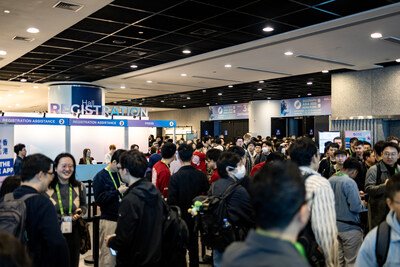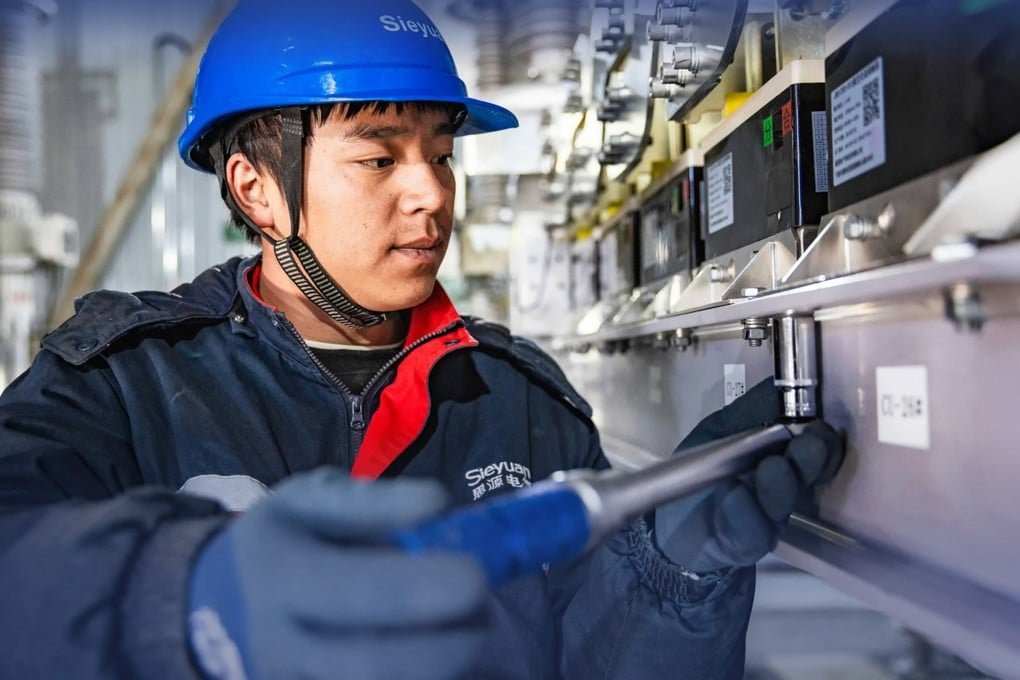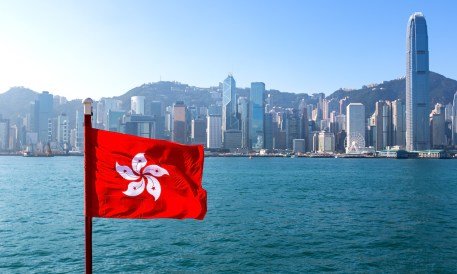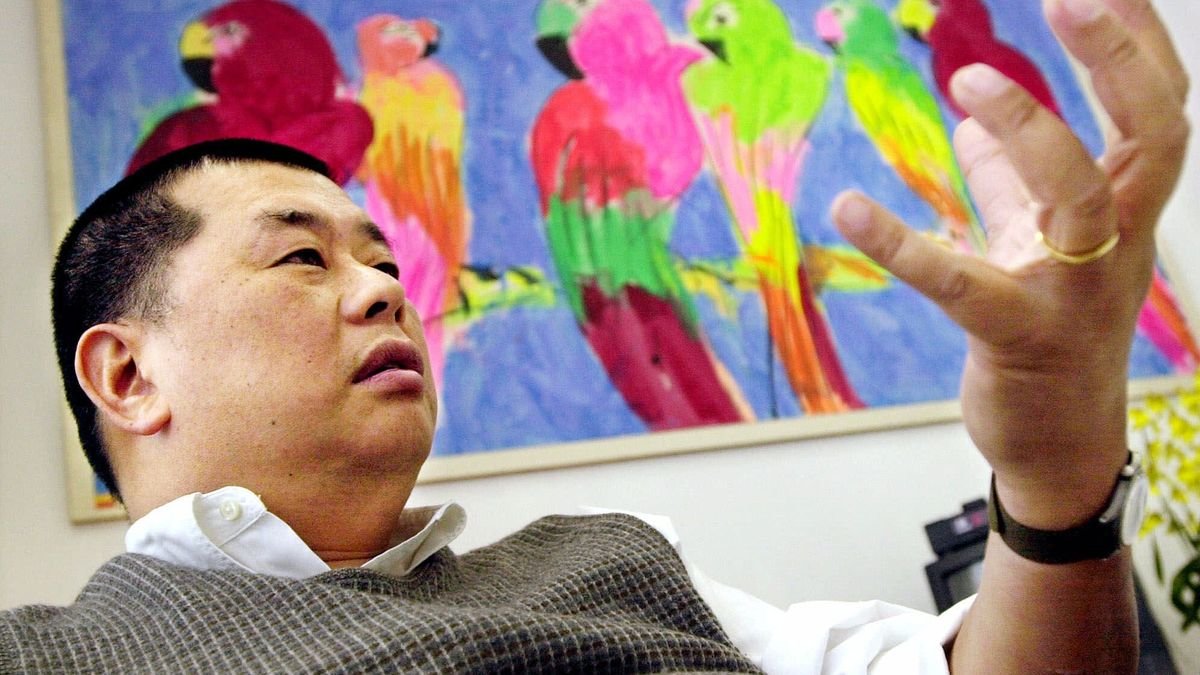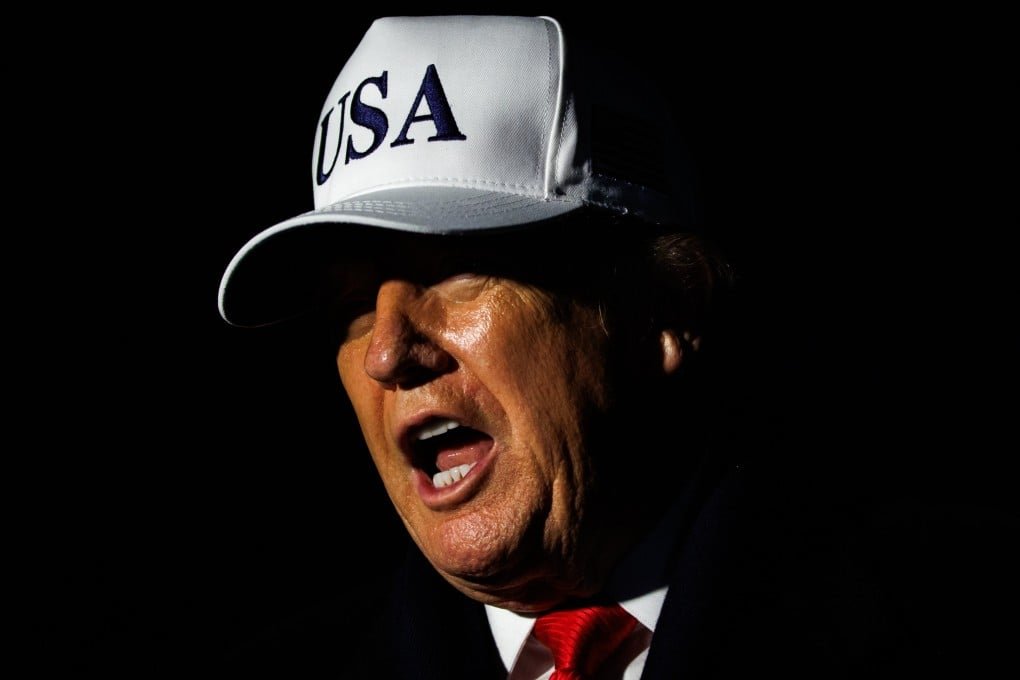
Fendi, Gucci, Prada: so many vowels, so many good looks to choose from. BAZAAR does the hard work for you, distilling the shows down to their essence with several standout looks from each of the major collections. See what's happening on the runways of Milan this week.
Gucci
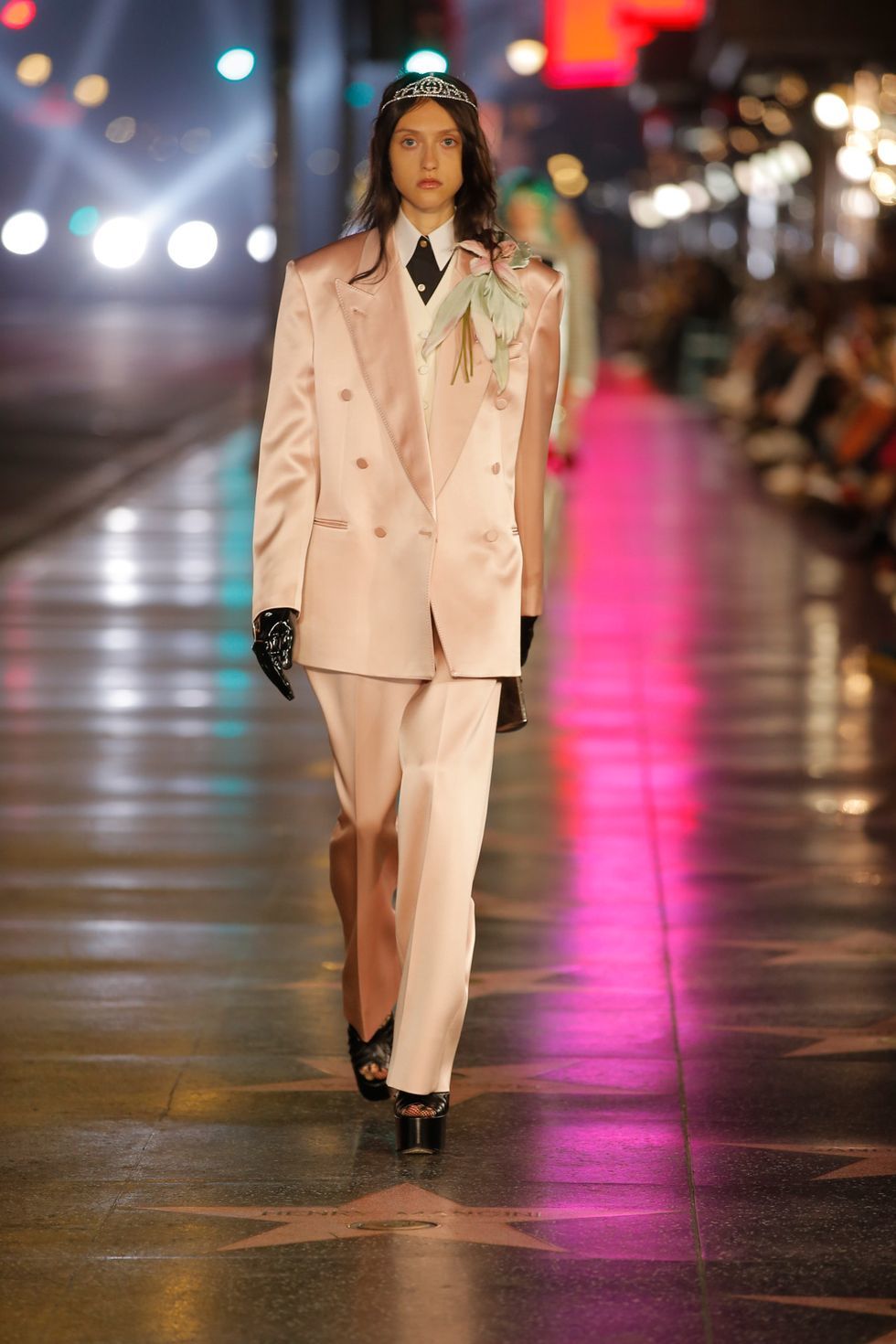 Gucci
Gucci
Alessandro Michele is full of surprises. The designer has reconfigured the Gucci show calendar so it falls off the regular lineup—with the Aria collection showing last April, and the brand's latest, Love Parade, walking last night in Los Angeles. While there are certainly logistical reasons for the changes, from an editorial perspective, it allows a label to really make a splash. And splash Gucci did.
The surprise we're referring to isn't a simple shift in timing, it's a peek into the creative mind of Michele and the life and times that built him. "Mum worked in the film industry as an assistant in a production company. I remember all the stories she told me, and the details and the sparkles, about that dream factory," he explains in the show notes.
"There was the alabaster paleness of Marilyn Monroe...There were the black satin gloves of Rita Hayworth and Veronica Lake’s velvet hair, as well as the bewitching allure of Rock Hudson and Kim Novak’s dizzying transformative power." That move star mystique translated directly onto the Hollywood Walk of Fame, where models, Jared Leto, and Macaulay Culkin stomped under street lights in front of a star-stacked audience. A modern fascination with social media and paparazzi photos has brought the idea of celebrity back down to earth, but Michele is more interested in the concept of actor as deity.
"Hollywood is, after all, a Greek temple populated by pagan divinities... Here actors and actresses are acknowledged as heroes of the myth: hybrid creatures with the power to hold divine transcendence and mortal existence at the same time." A place where stars shine on red carpets and we never see them as mere mortals getting Starbucks. A place where there are no sweatpants and yoga leggings, just diaphanous gowns, pink satin tuxes, sequins that can burn your retinas, and coats as big as egos. Welcome to Hollywood by way of Gucci.
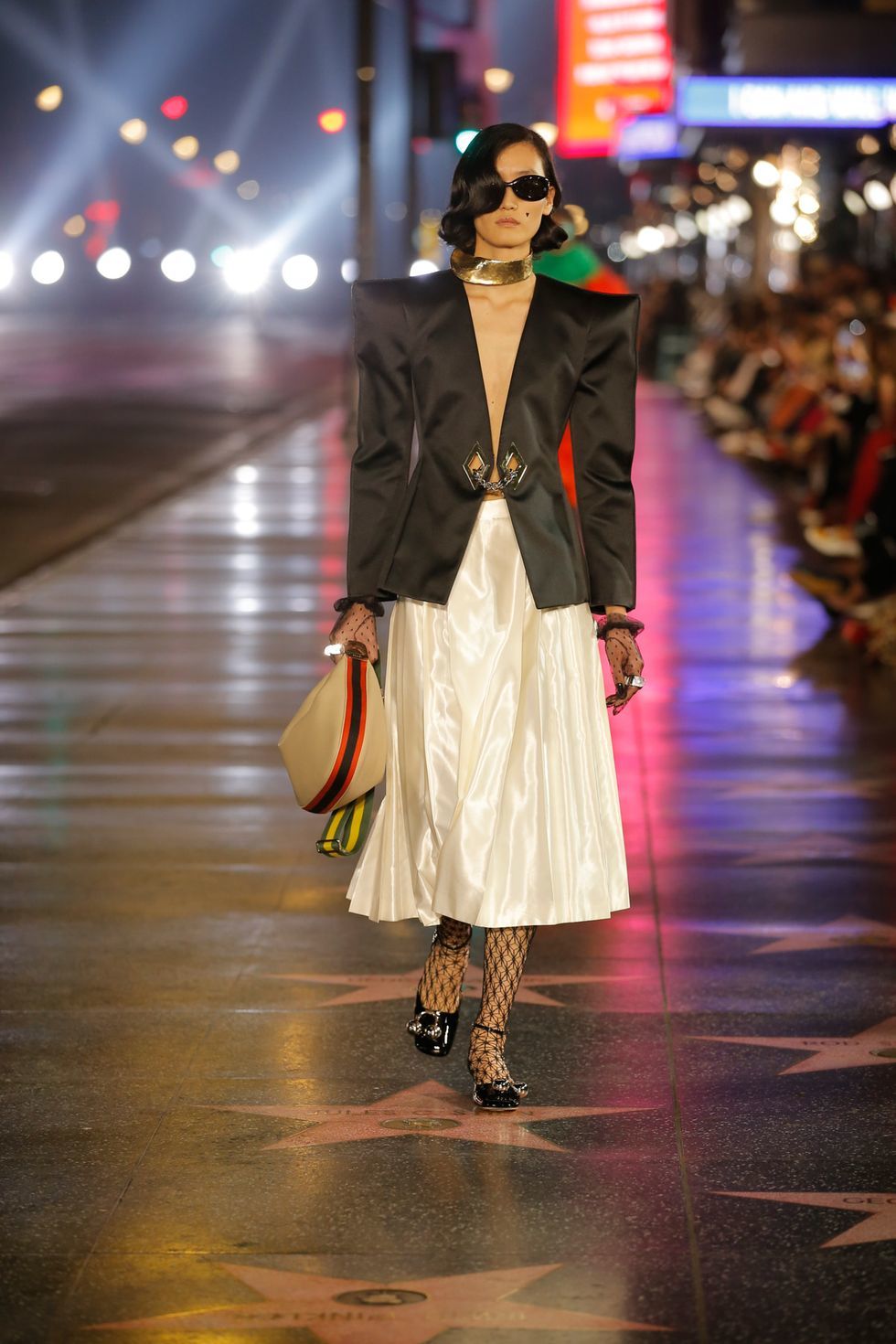 Gucci
Gucci
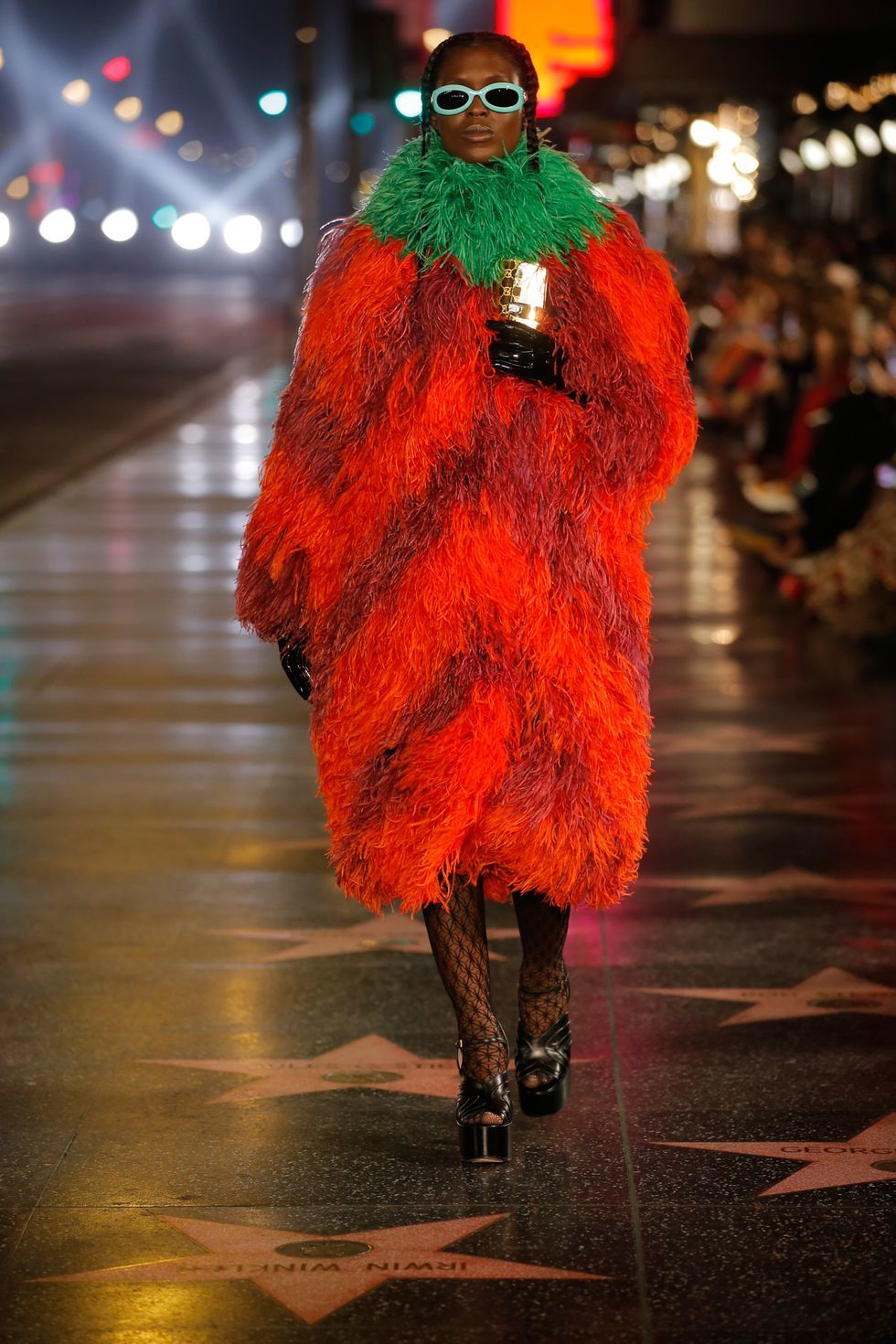 Gucci
Gucci
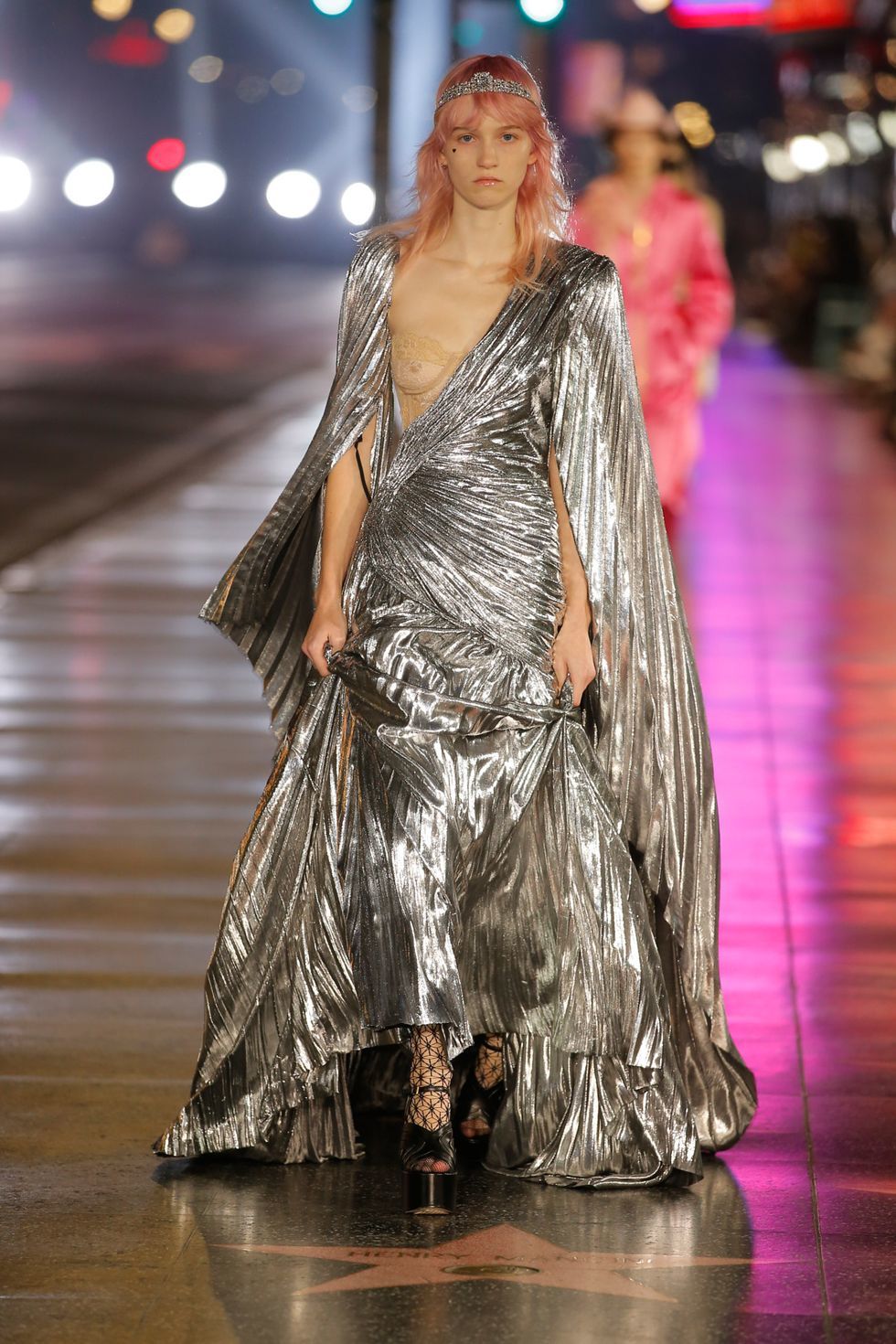 Gucci
Gucci
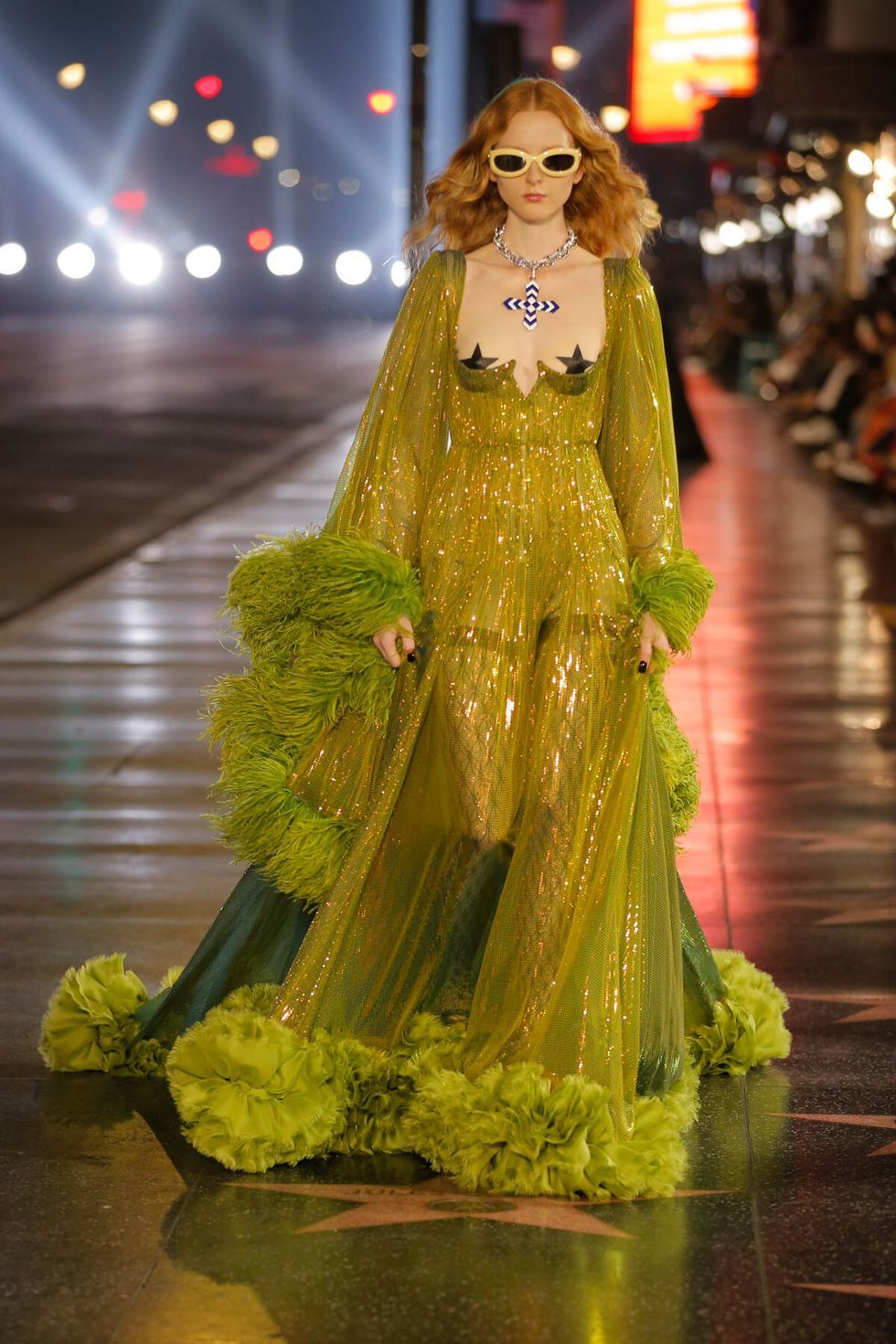 Gucci
Gucci
Bottega Veneta
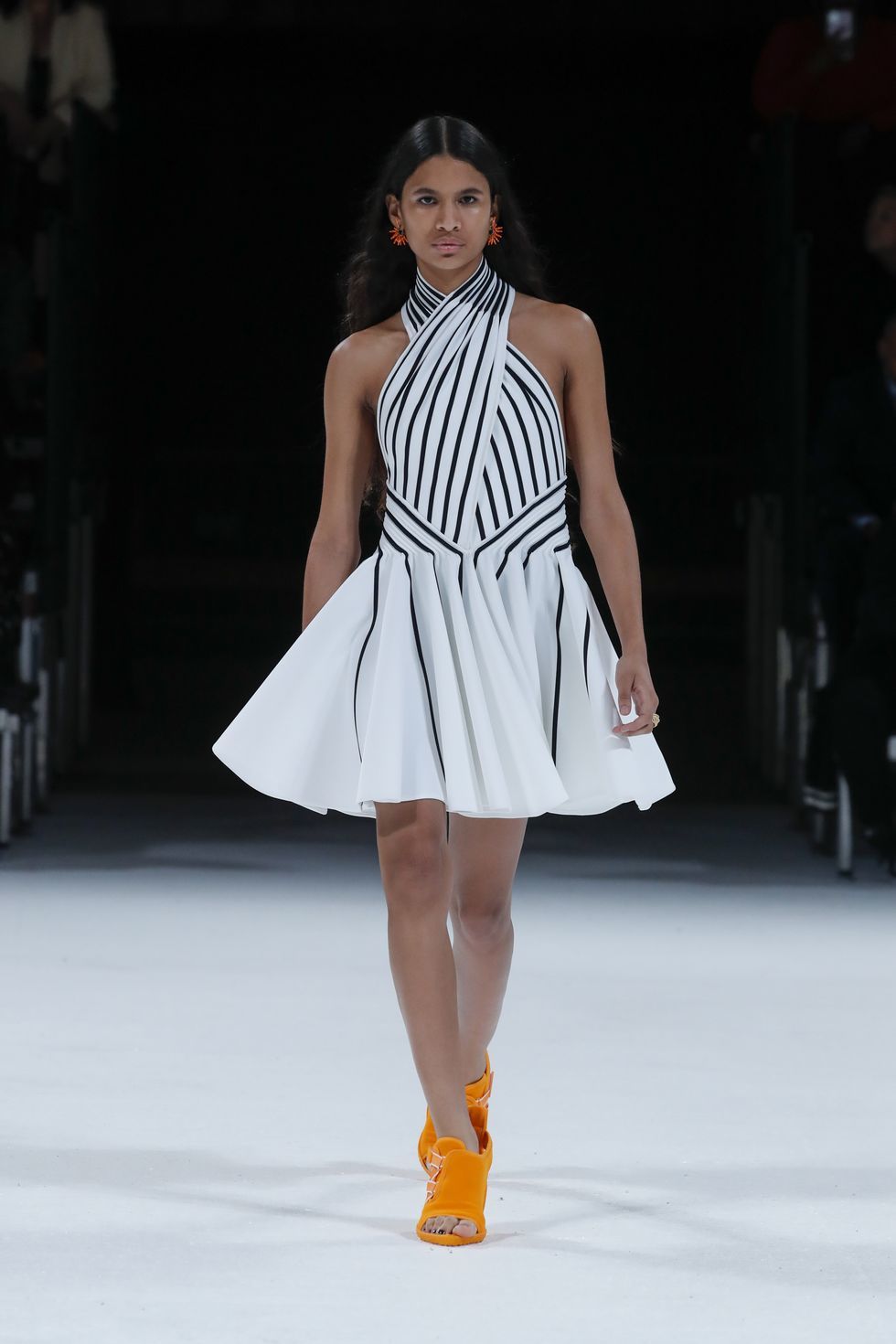 Bottega Veneta
Bottega Veneta
For round three of Bottega Veneta's salon shows, following stops in London and Berlin, Daniel Lee showed up in the Motor City to showcase his latest—and many notable names followed him there. Mary J Blige, Lil Kim, Burna Boy, Kehlani, Selah Marley, Zazie Beetz, Slick Woods, and Sasha Lane were just some of the major players in attendance.
Set to techno club music at the Michigan Building (a gilded former theatre), the runway was also star-studded, with Lourdes Leon (offspring of one Madonna) casually taking a stroll down the catwalk. The palette was mostly black and white with hits of orange and Bottega green (a color so synonymous with Lee's Bottega it is now being referenced this way).
The look is street sporty—think parkas and denim sets—against 90s influenced halter necks and sparkly little dresses and shirt and skirt sets. Bodycon, a look that was pervasive all season, also showed up on this runway on one shoulder and short dresses. In other words, these are 'fits that are made to dance the night away to some techno beats.
If you find yourself in Detroit, Bottega's reign isn't ending with one runway show. The brand set up Bottega Firehouse on 1201 Bagley Street. It will be open until January and features a reading room by Asmaa Walton, design works by Chris Schanck and Aratani Fay, Underground Music Academy, Substudio textiles, Donut Shop furnishings, Hamtramck Ceramck ceramics, relief sculptures by Sophie Eisner and printed matter curated by Ruben Cardenas.
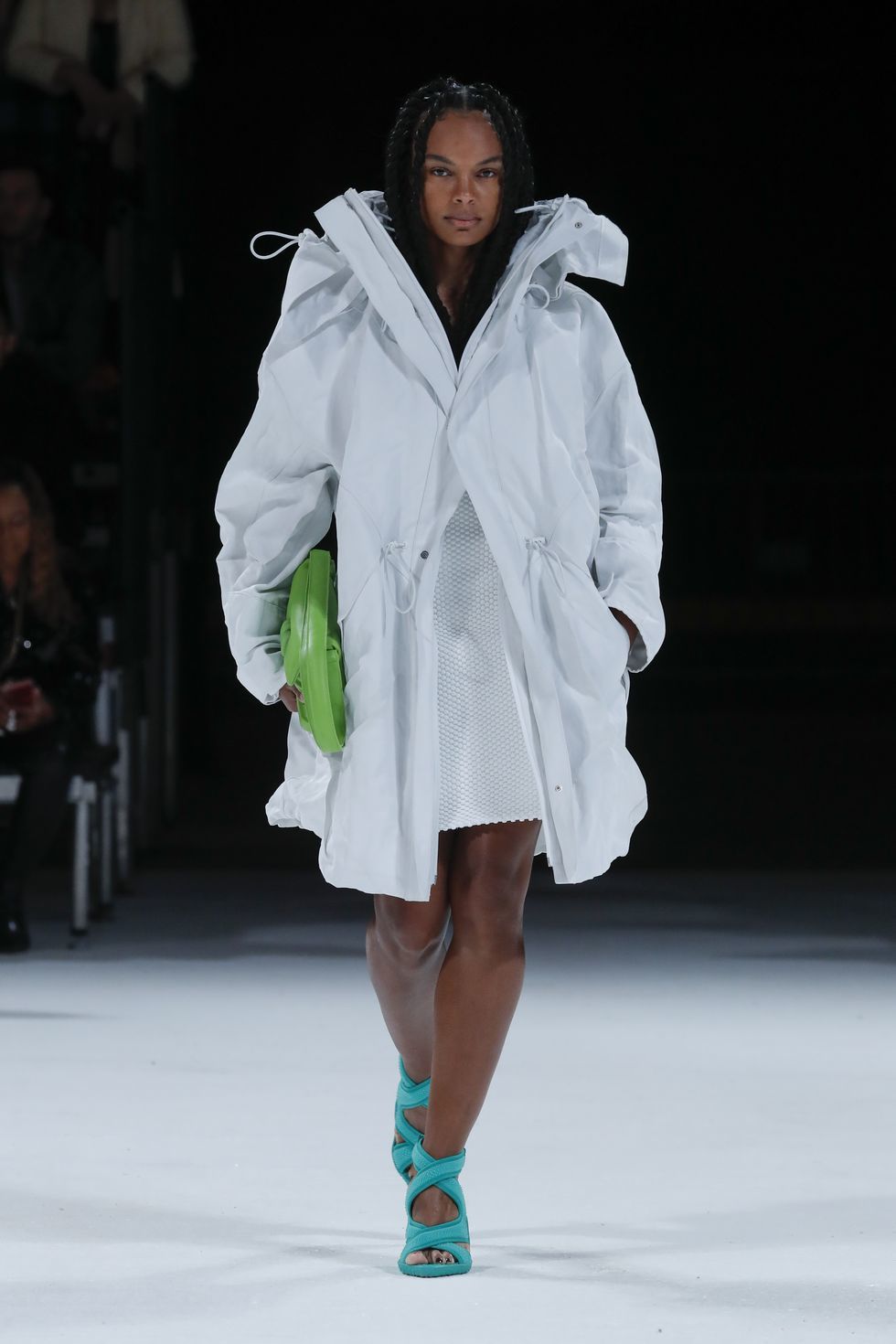 Bottega Veneta
Bottega Veneta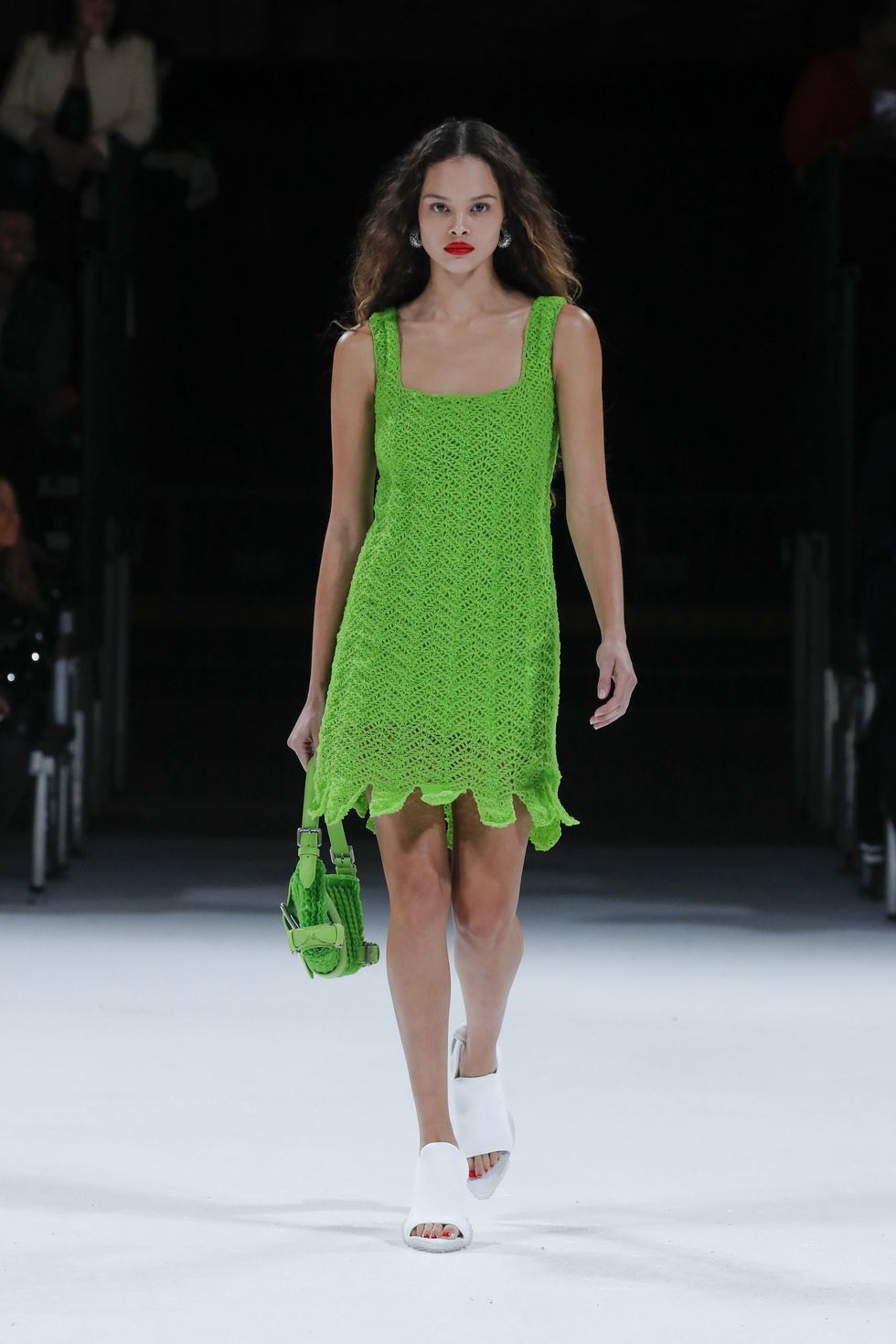 Bottega Veneta
Bottega Veneta Bottega Veneta
Bottega Veneta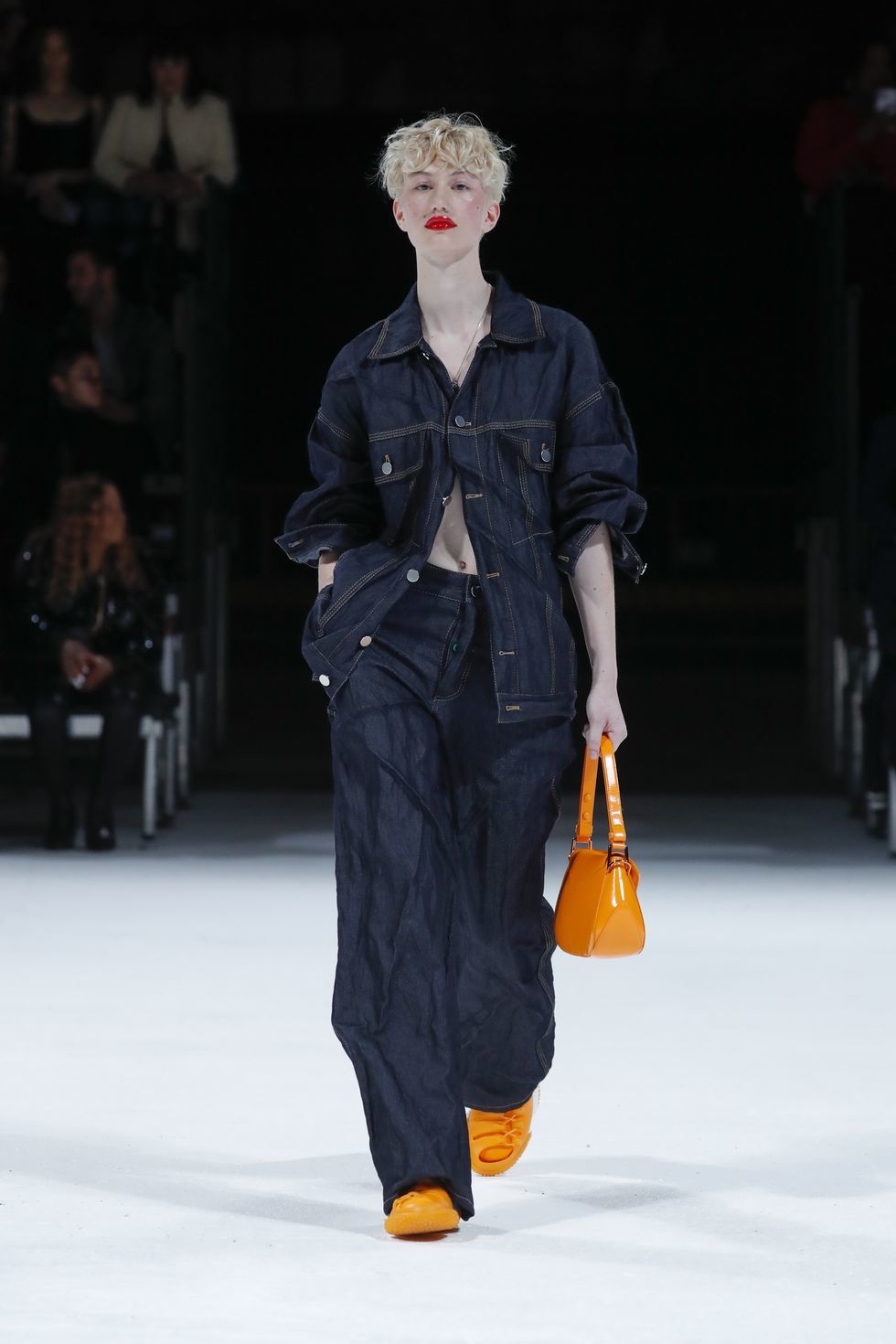 Bottega Veneta
Bottega VenetaVersace by Fendi
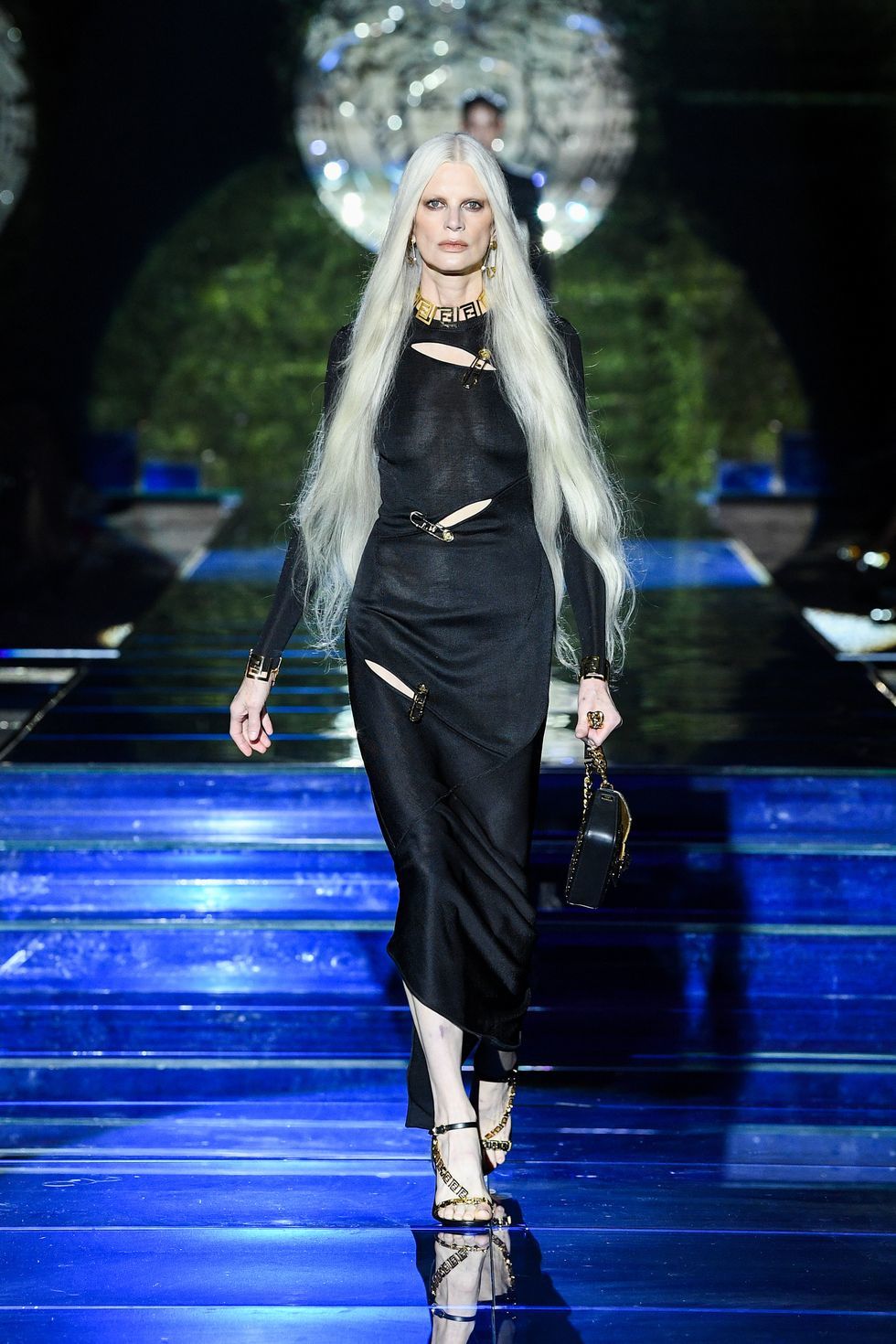 Versace by Fendi
Versace by Fendi
Stop everything: We are officially living in a parallel fashion universe. Donatella Versace, Kim Jones, and Silvia Venturini Fendi switched places for an epic fashion event that was something far fresher than the industry’s collaborations of yore. Fendace, a 50-look Frankenstein collection composed of Jones’s and Venturini Fendi’s riff on Versace and Versace’s take on Fendi, was conceived as a “celebration of Italian fashion and a to-hell-with-it disruption of the established order of things.” This merging of competitors, particularly two iconic houses not under the same ownership, just “isn’t done” in fashion—until now.
Fendi, Versace, and Jones are friends and colleagues, and after a tough year, they crossed party lines to have a little fun. The creative directors invited one another into their family archives for inspiration and crafted their take on the other’s DNA, honoring the work of Gianni Versace and Karl Lagerfeld in turn. Versace for Fendi melded the Fendi double-F monogram with its own Grecian key motif, while Fendi for Versace used the brand’s signature safety pins and sexiness with more of a punk rock edge. The event of Milan Fashion Week was, refreshingly, about fashion for style’s sake: “It’s about the need for sincerity in fashion today rather than strategy.”
 Versace by Fendi
Versace by Fendi  Versace by Fendi
Versace by Fendi 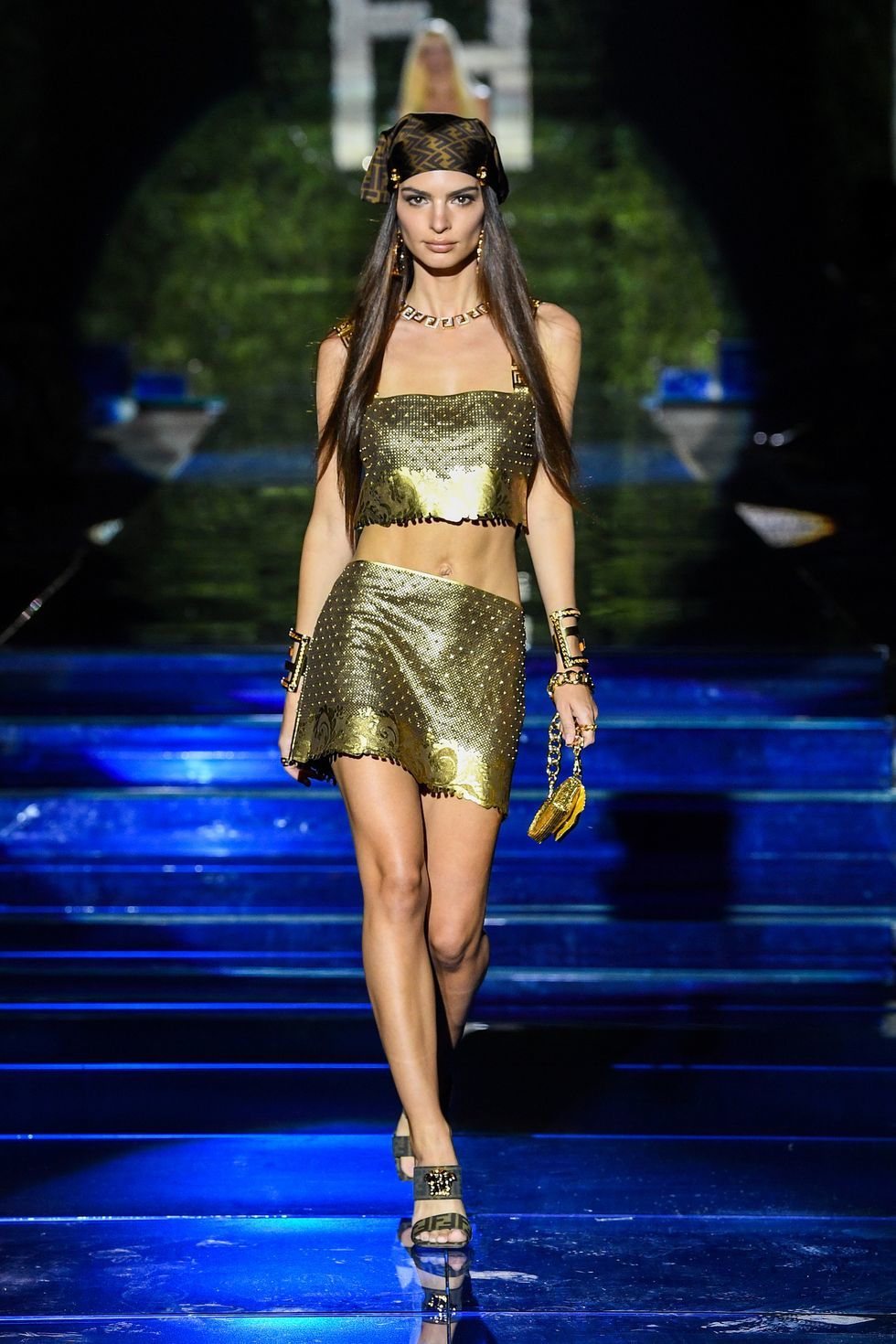 Versace by Fendi
Versace by Fendi  Versace by Fendi
Versace by Fendi 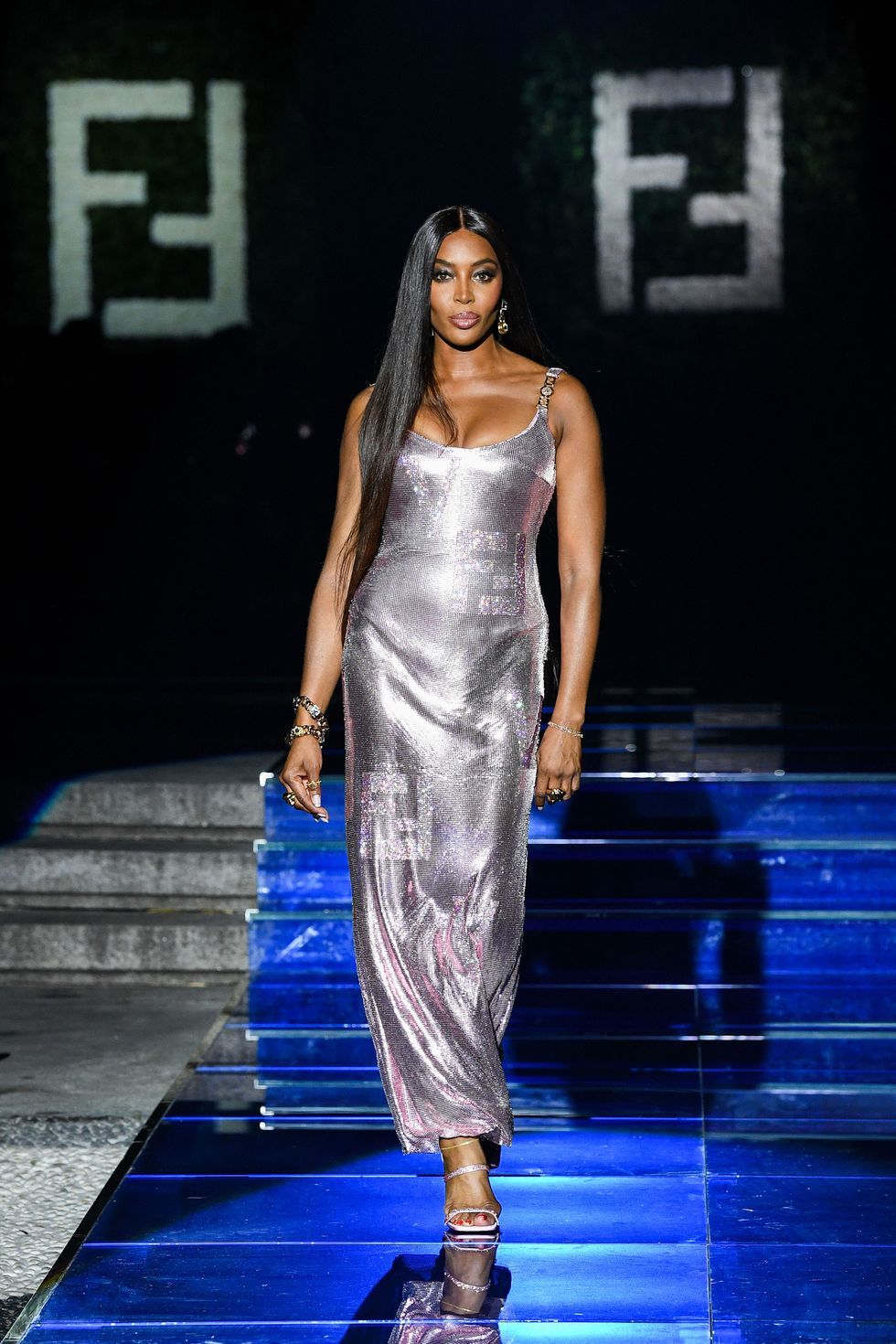 Versace by Fendi
Versace by Fendi Versace
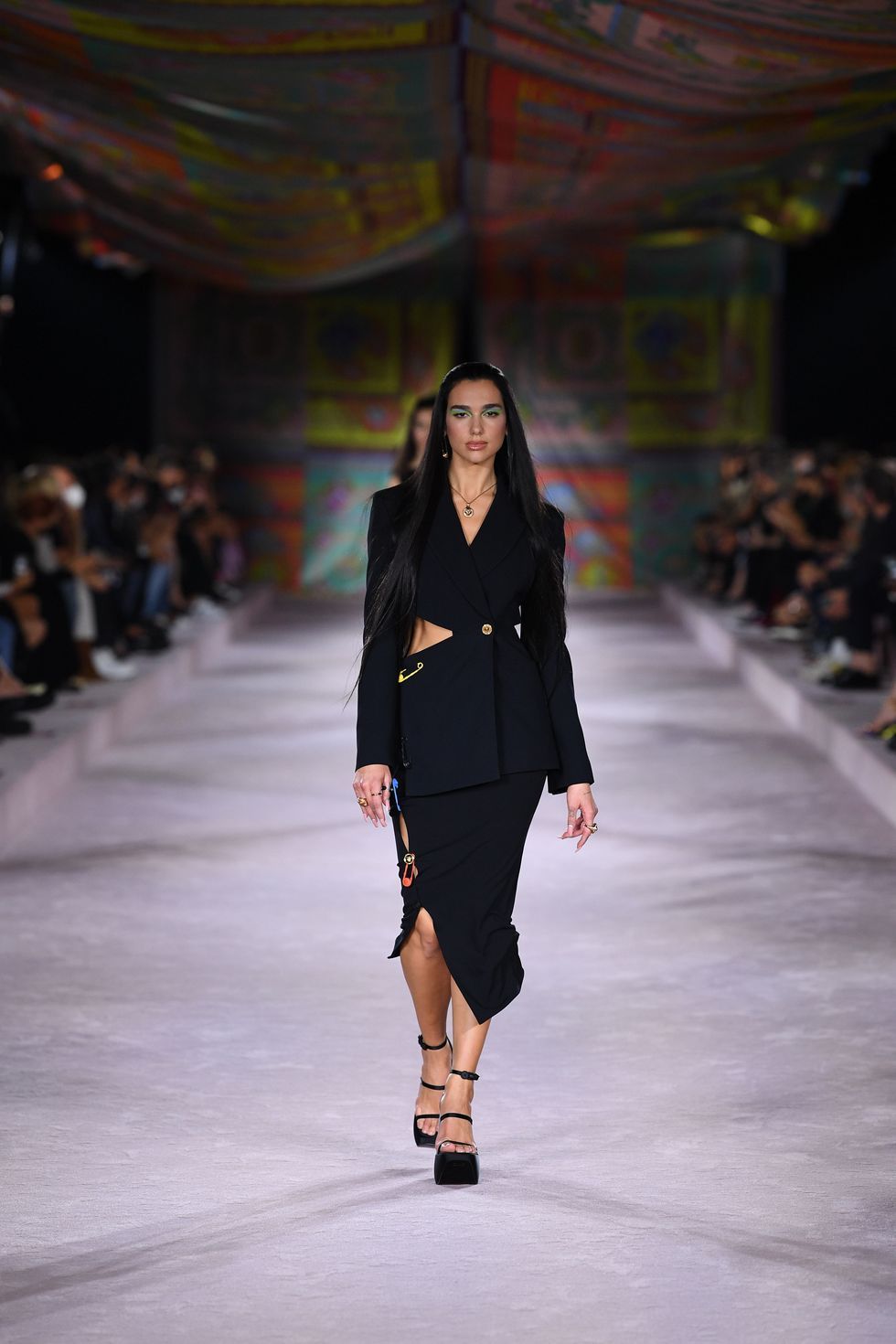 Versace
Versace
Versace is all about new interpretations of signature codes, whether it be the new Grecian key motif, La Greca—launched last season—or the brand’s signature Medusa emblem. For spring 2022, Versace began with its foulard, a silk scarf that can be worn as a headscarf, knotted into a top, constructed into a bustier dress, or worn freely as a pajama-esque set. How, you may wonder, does a simple silk scarf lead you to Dua Lipa, Emrata, Lourdes Leon, a neon color palette, and some of the sexiest looks of the season?
That would be the magic of Donatella Versace. From Dua Lipa’s opening look of a slashed, tailored suit-cum-party dress to the prints, bold fluorescent shades, and all the way to the pop star’s hot-pink, two-piece sequined set for the finale, Versace’s vision for spring 2022 was part red carpet, part Internet sensation, and a great night out in Miami and Milan—all in one.
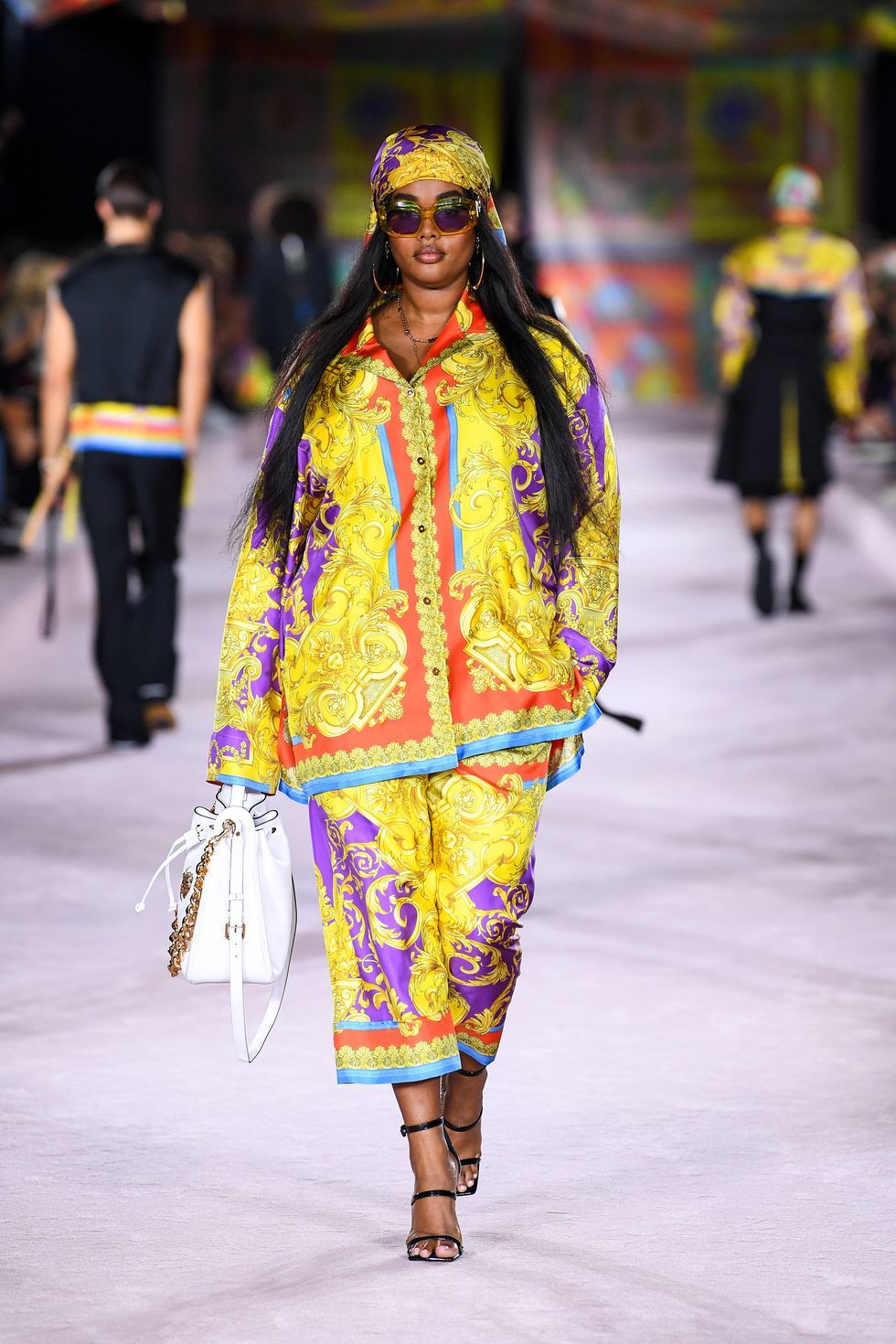 Versace
Versace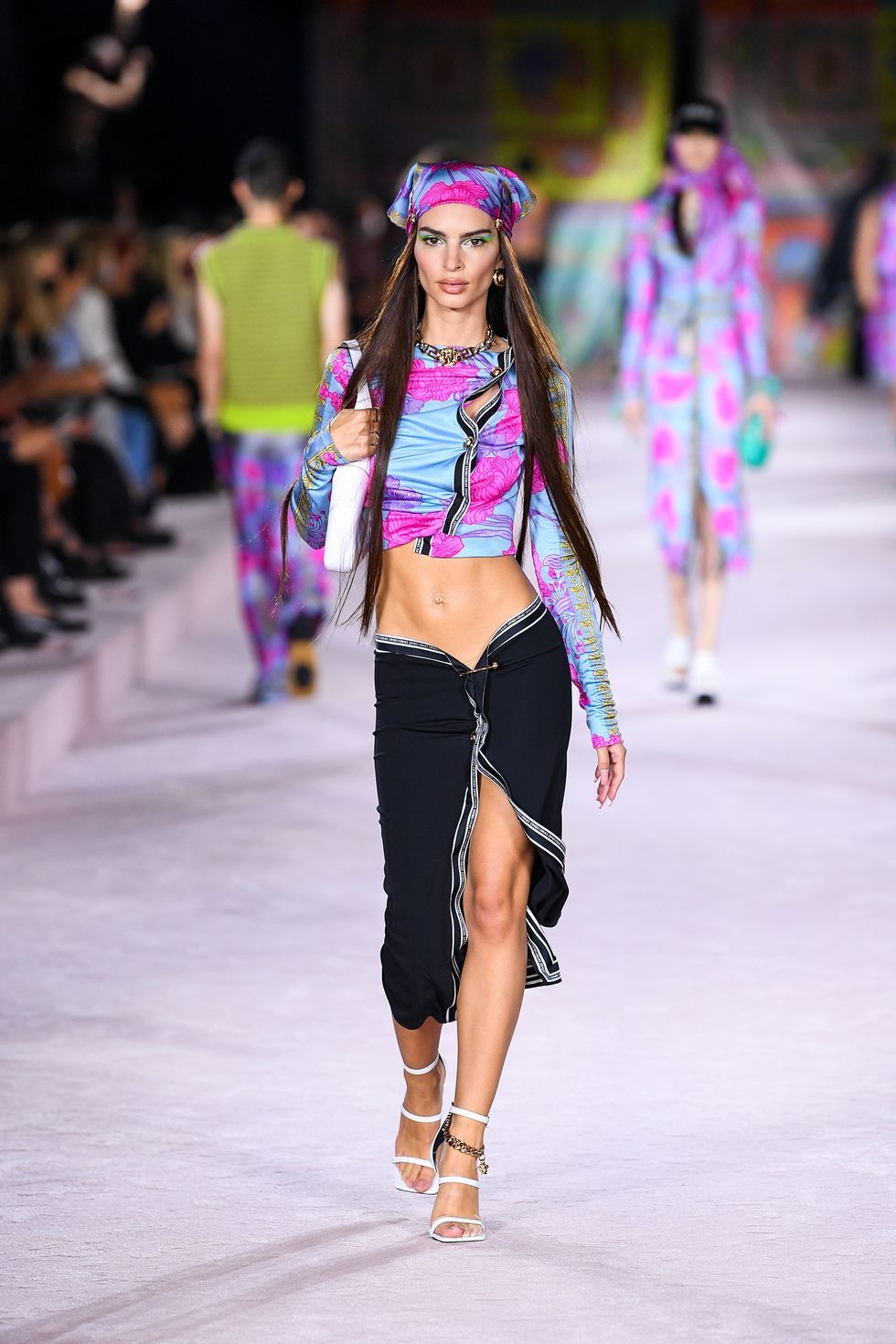 Versace
Versace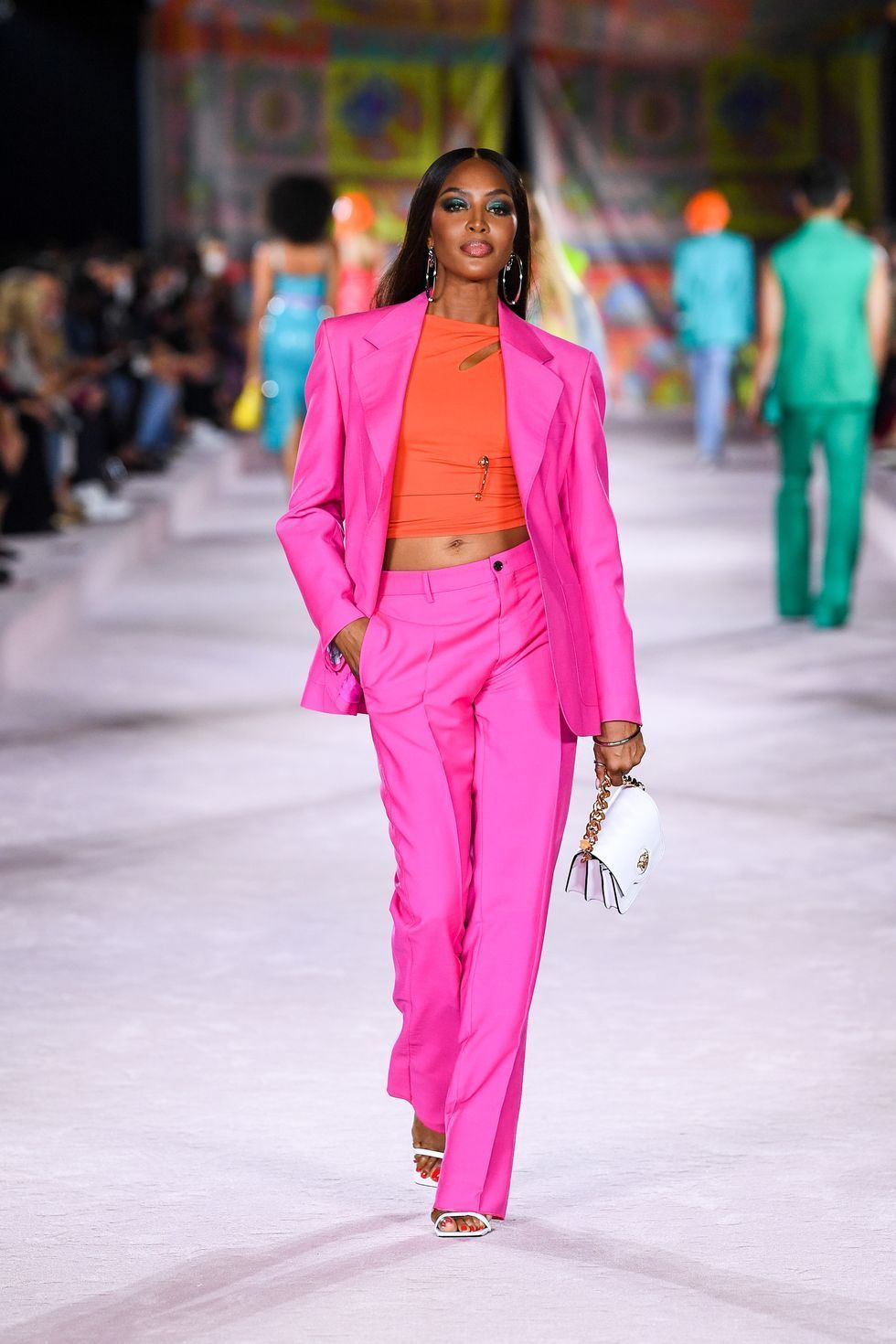 Versace
Versace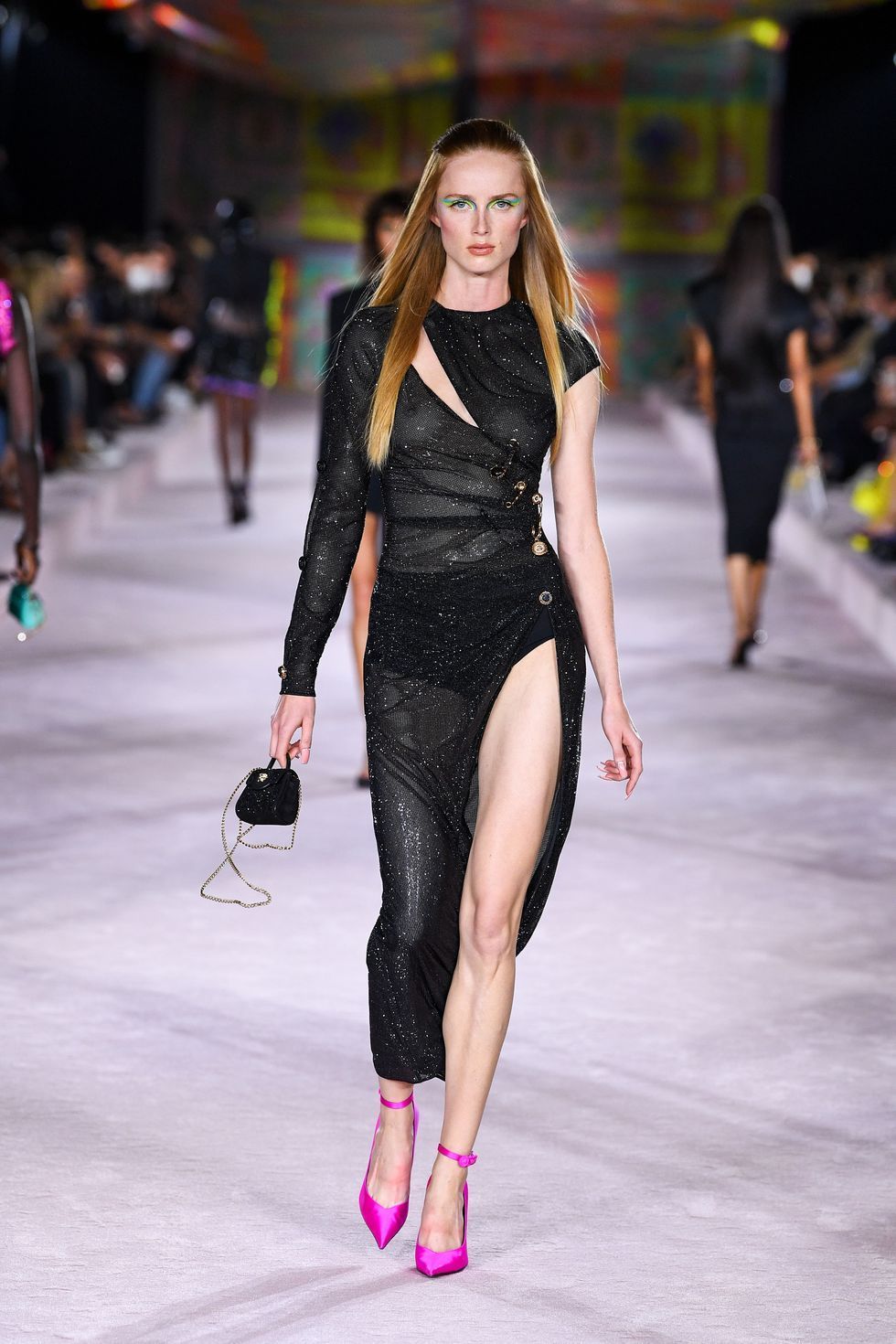 Versace
Versace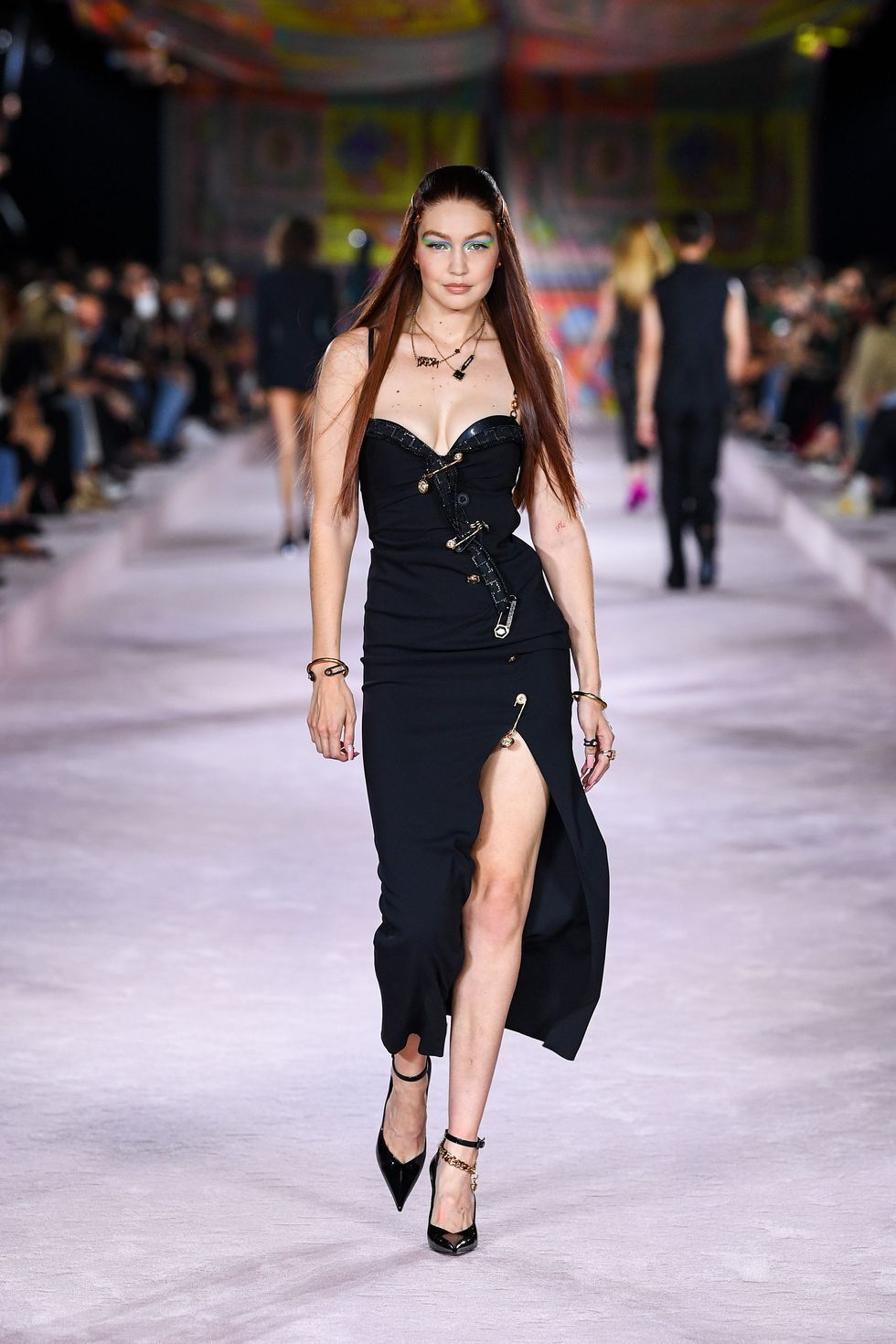 Versace
VersaceDolce & Gabbana
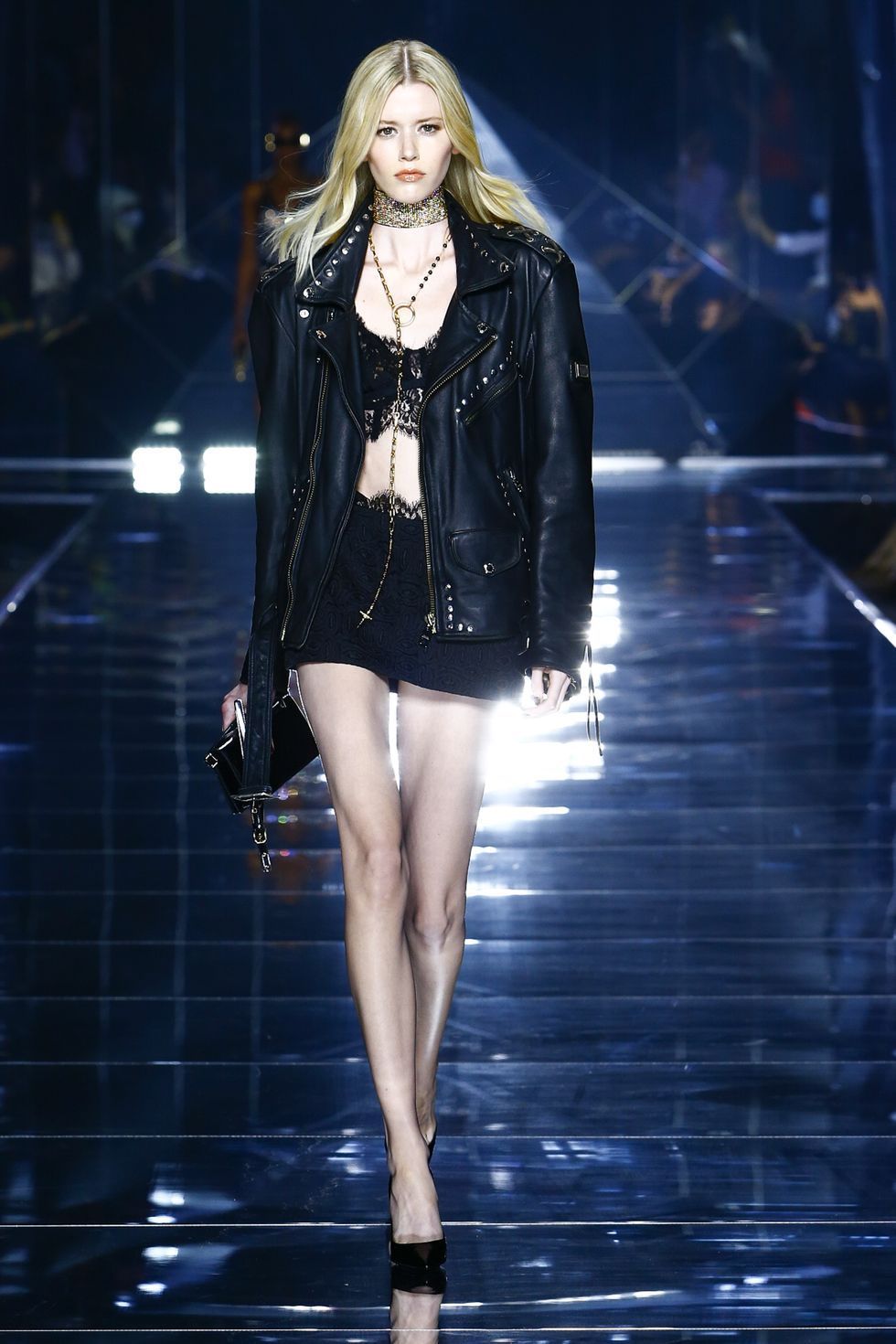 Dolce & Gabbana
Dolce & Gabbana
After a year of laying low, fashion lovers are finally turning their attention to post-lockdown glam—which couldn’t be better news for maximalists Domenico Dolce and Stefano Gabbana. The duo has never stopped being inspired by a more-is-more aesthetic. This collection was packed with the brand’s sexy energy, cheeky touches, and signature whimsy, but it was also decidedly more edgy and youthful than ever before—keeping Gen Z in mind. The designers dove into the past to look forward, studying their collections from the year 2000, when Y2K mania ushered in all things over-the-top.
The result? Lace, camo, leopard prints, and crystal covered everything. After a spectacle after the Venice Film Festival for Alta Moda and a collaboration with Harris Reed and Iman on the Met Gala red carpet, Dolce & Gabbana just proved once more that they have no issue keeping their clothes focused on the future—targeting a younger customer than ever before while still giving their hardcore fanbase what they crave.
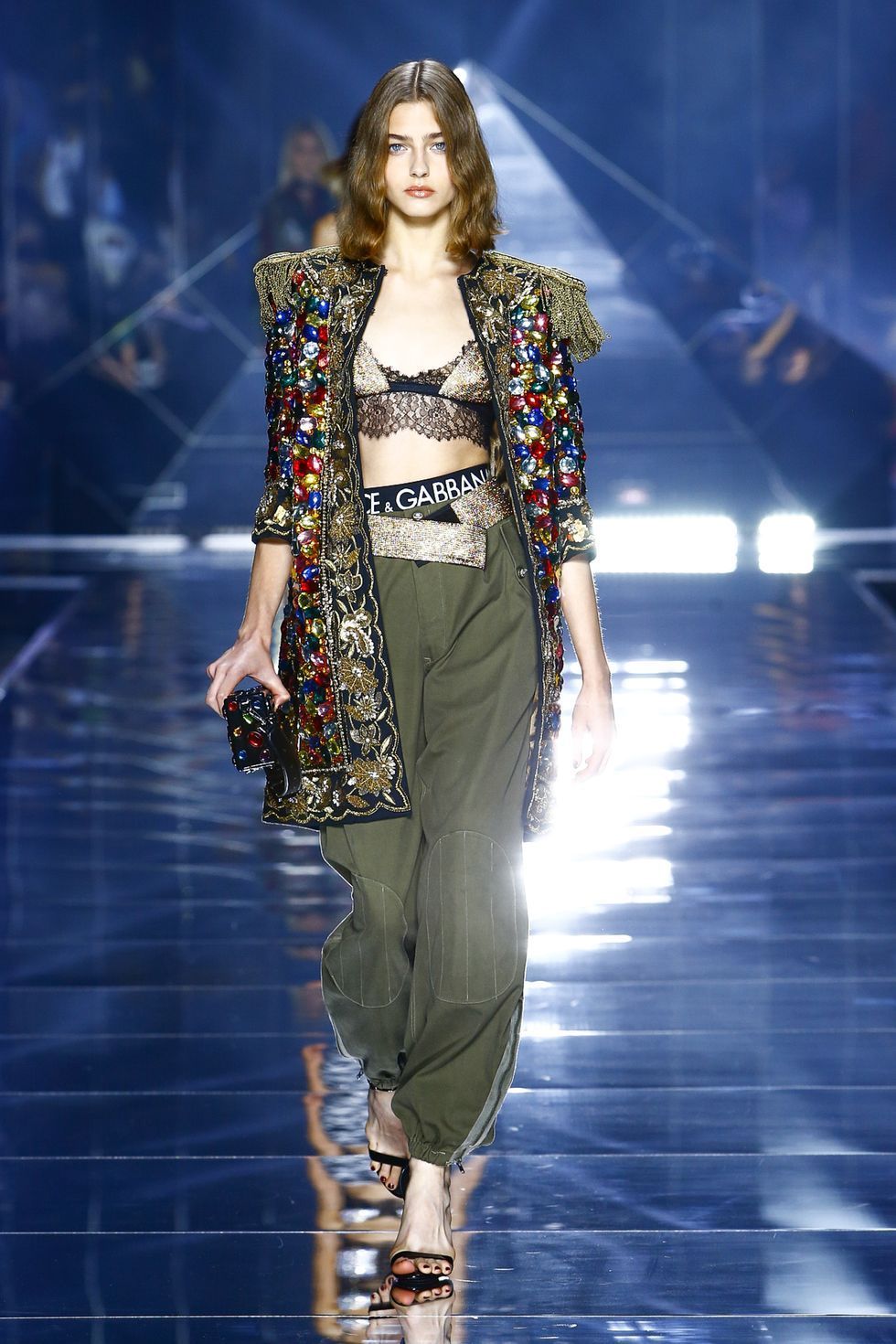 Dolce & Gabbana
Dolce & Gabbana 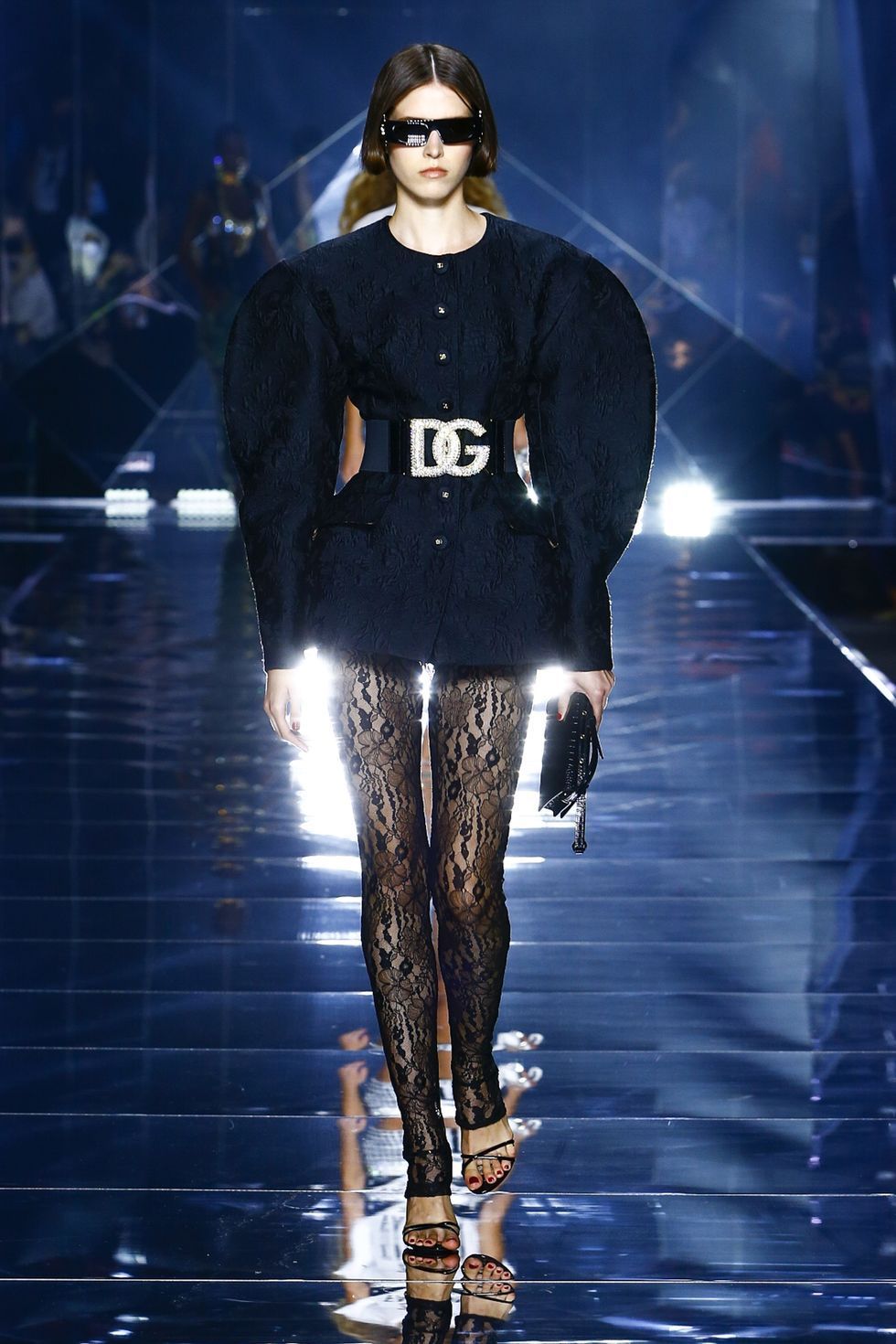 Dolce & Gabbana
Dolce & Gabbana 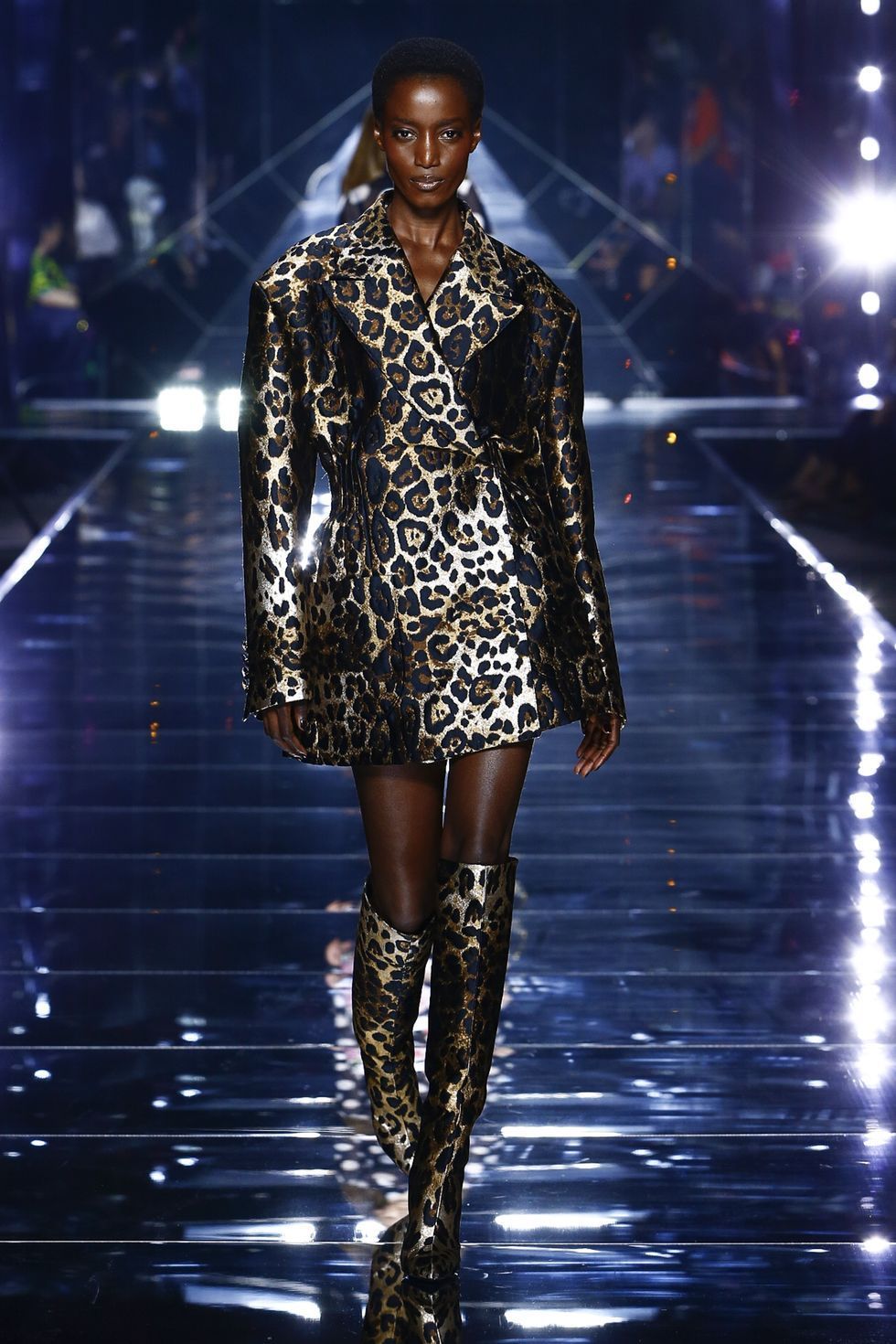 Dolce & Gabbana
Dolce & Gabbana 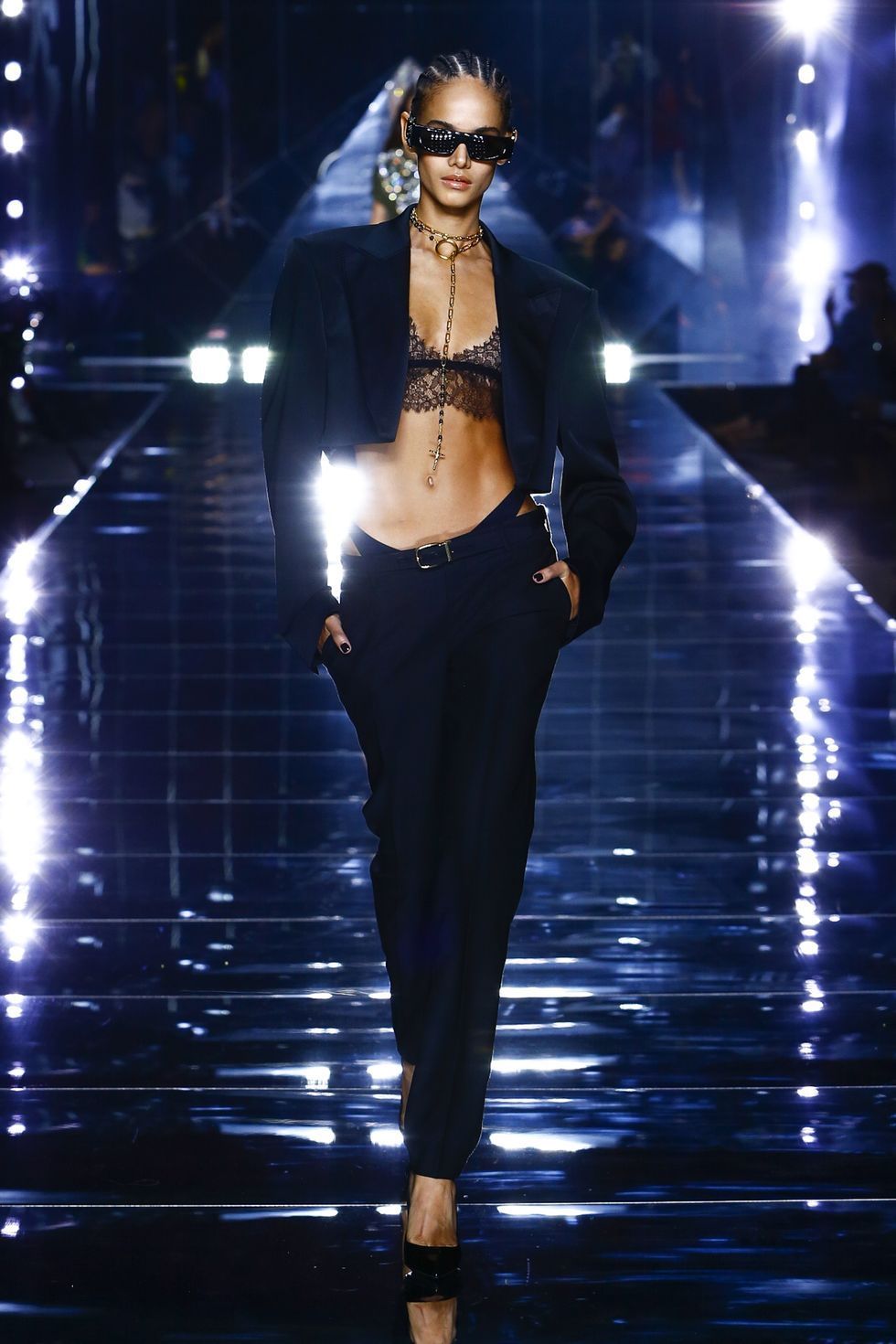 Dolce & Gabbana
Dolce & Gabbana Emilio Pucci
 Emilio Pucci
Emilio Pucci
Many people can spot a Pucci print from across the room—or the beach. That’s what the design team was musing on when they went back to the resort-forward way of thinking exemplified by founder Emilio Pucci for spring 2022. The spirit of kaleidoscopic beachwear goes hand in hand with a certain sort of bold freedom, especially when those signature swirls come embroidered. Also on the label’s mind? The iconic shape of the silk scarf, which has become synonymous with Pucci for decades.
We saw its core shape reappear in the form of halter-neck cutout dresses and maxi gowns constructed of wide swaths of flowing fabric. The difference between the Pucci of your mother’s closet and today, however, is a newly sharpened and structured impact that’s graphically intriguing. Patterned minidresses may seem like they’re for maximalists only, but when they’re cut so cleanly, they have a wide appeal even for the print-averse minimalist.
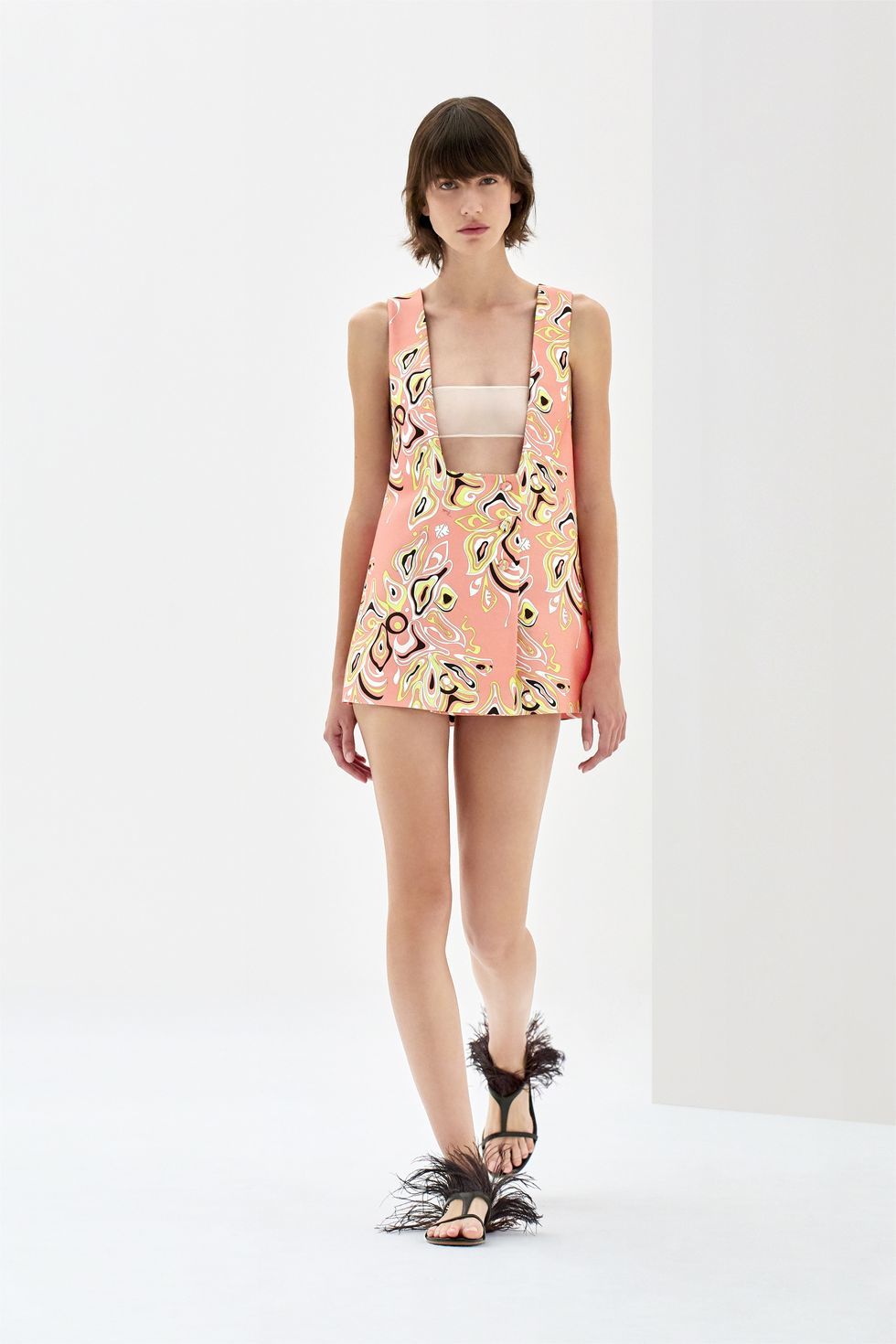 Emilio Pucci
Emilio Pucci  Emilio Pucci
Emilio Pucci  Emilio Pucci
Emilio Pucci 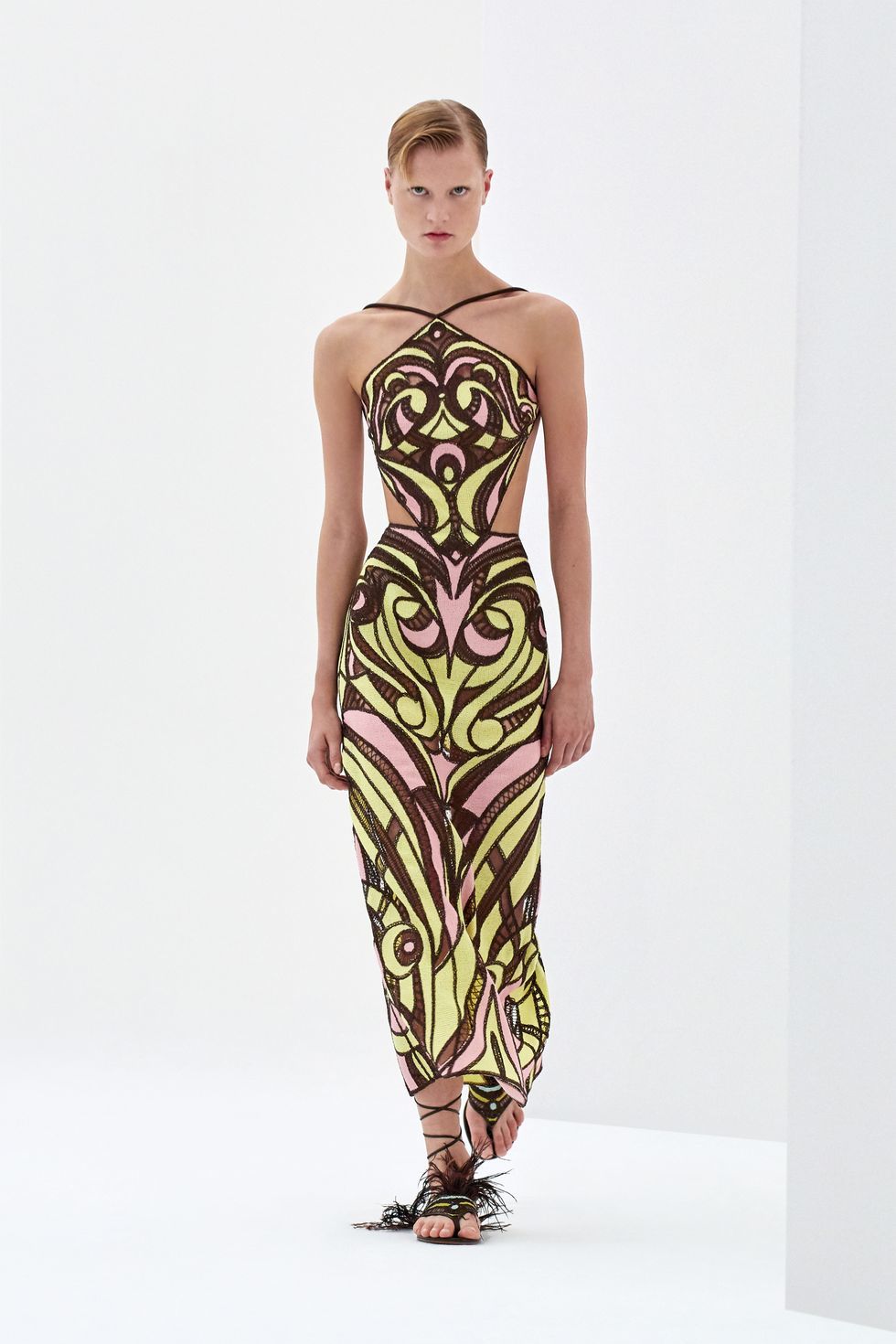 Emilio Pucci
Emilio Pucci Salvatore Ferragamo
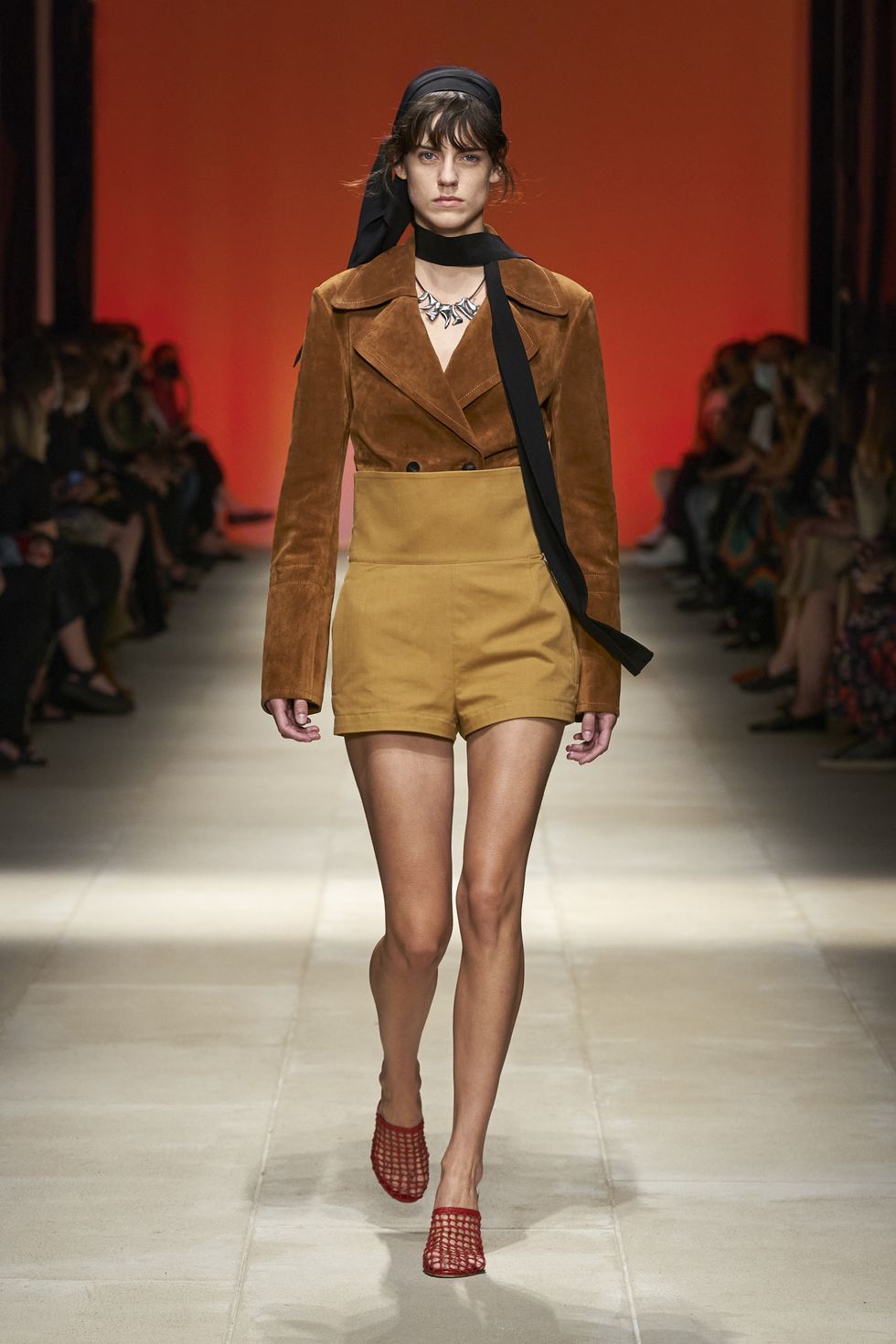 Salvatore Ferragamo
Salvatore Ferragamo
Salvatore Ferragamo offered for spring 2022 what the Florentine label called an “Italianate rainbow,” which translated to soothing shades of ochre, rust, mustard, cream, and peony, rather than the traditional ROYGBIV spectrum the founder once famously put on a pair of suede platforms he designed for Judy Garland.
The excitement came through unexpected details and styling, like a dramatic asymmetrical side cutout on a Grecian dress or a double-breasted blazer tucked into high waisted shorts. A repurposed 1970s Ferragamo floral foulard overprinted on a loose-yarn, tiger-striped jacquard created in collaboration with Parisian artist Julien Colombier was another key motif.
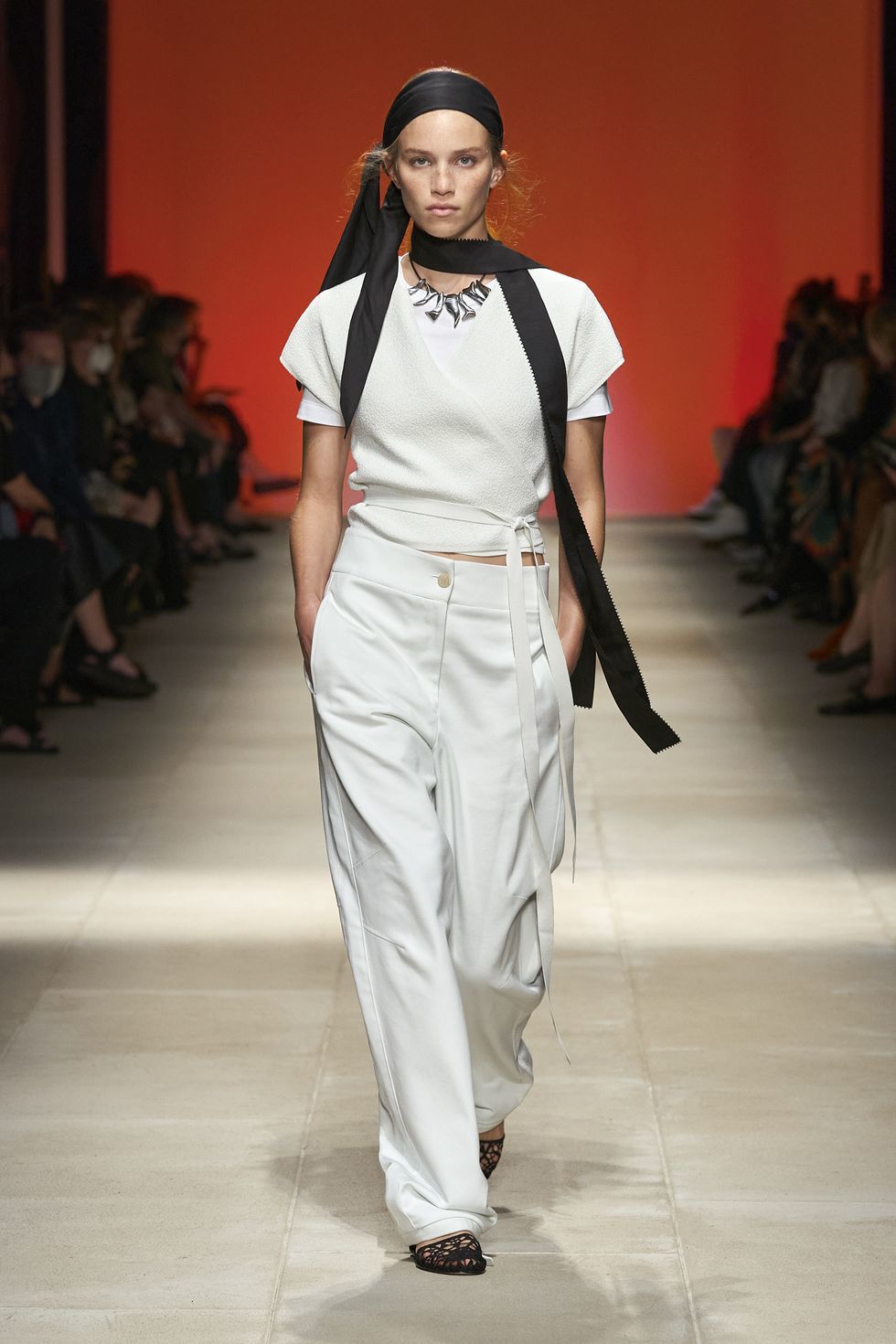 Salvatore Ferragamo
Salvatore Ferragamo 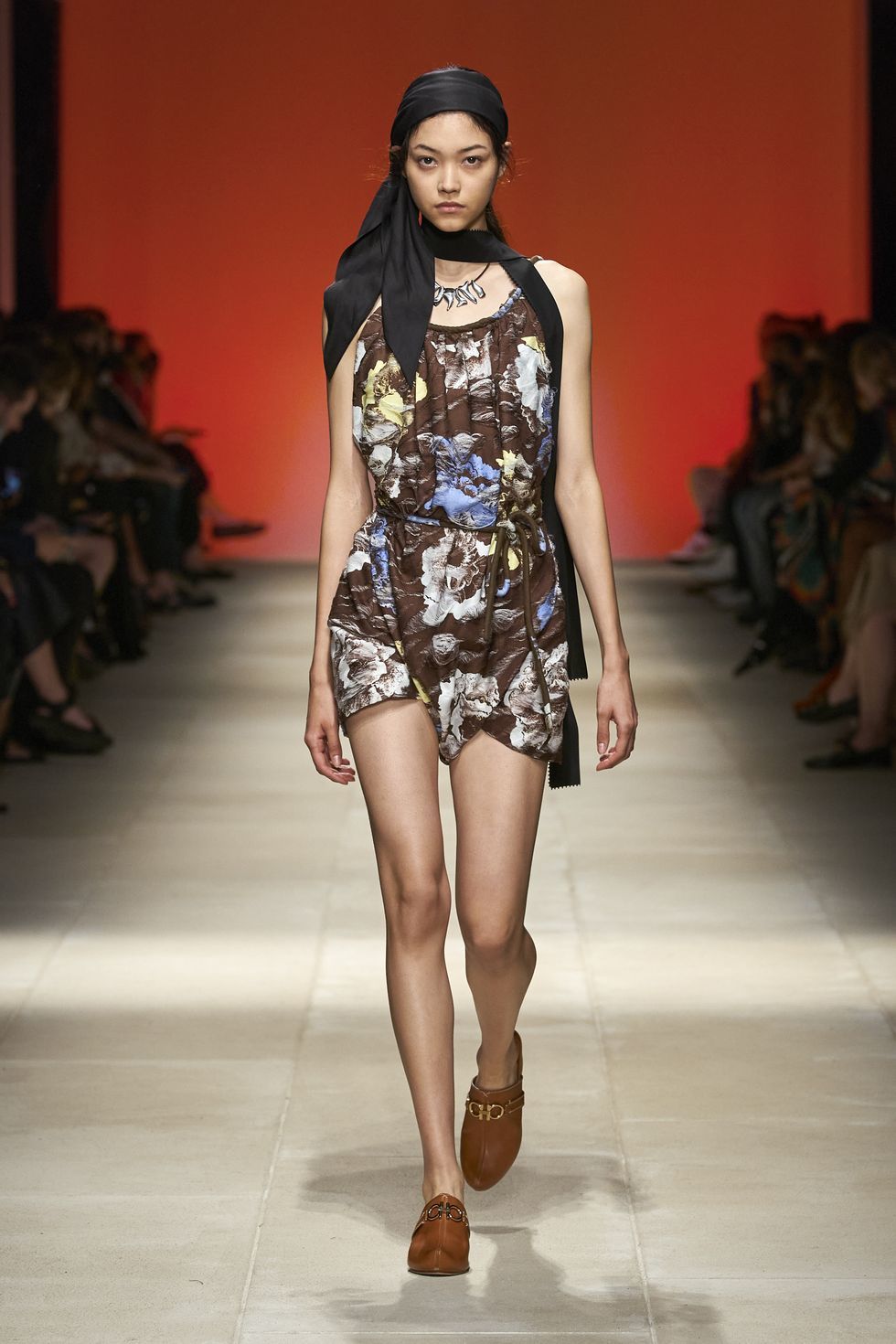 Salvatore Ferragamo
Salvatore Ferragamo 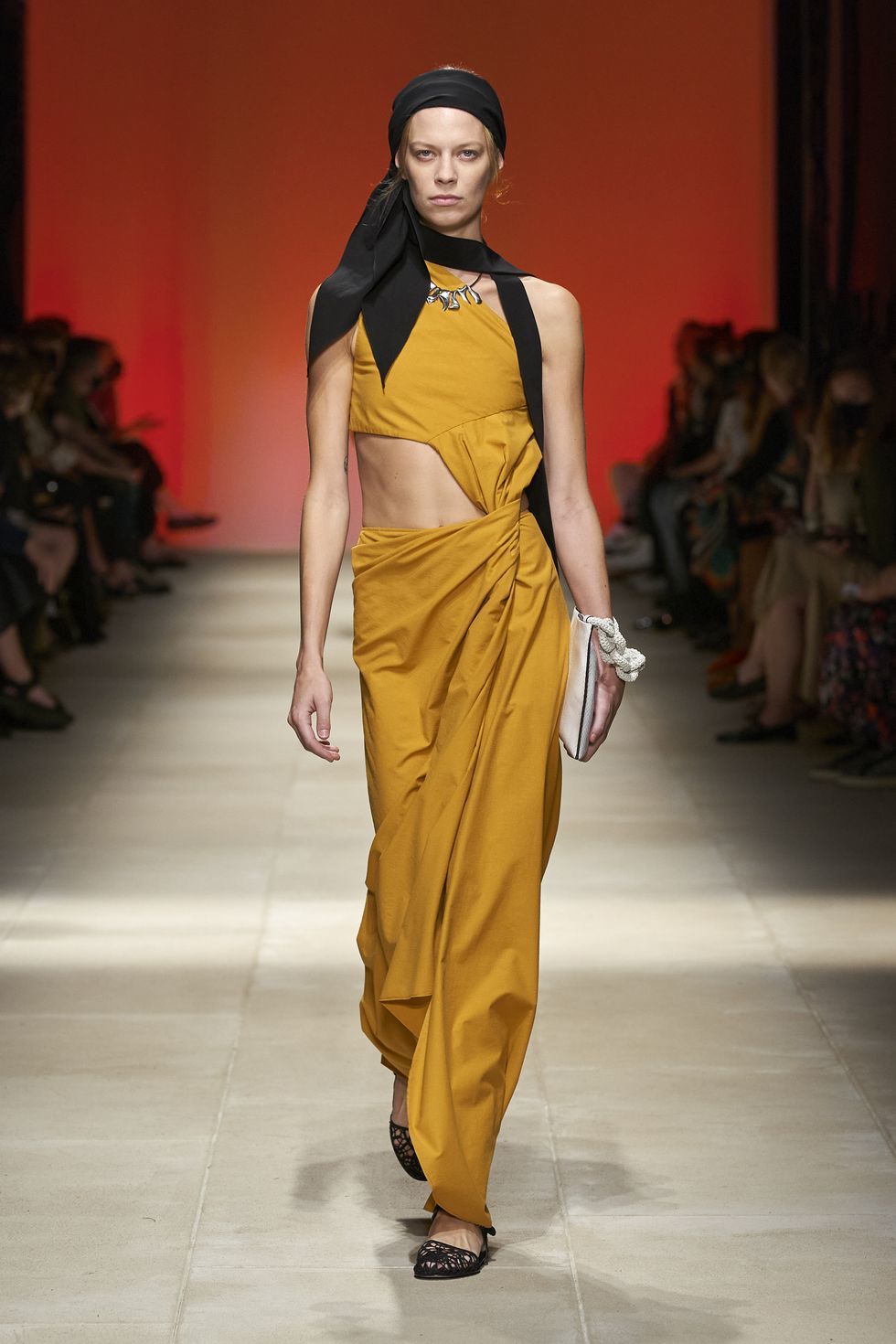 Salvatore Ferragamo
Salvatore Ferragamo 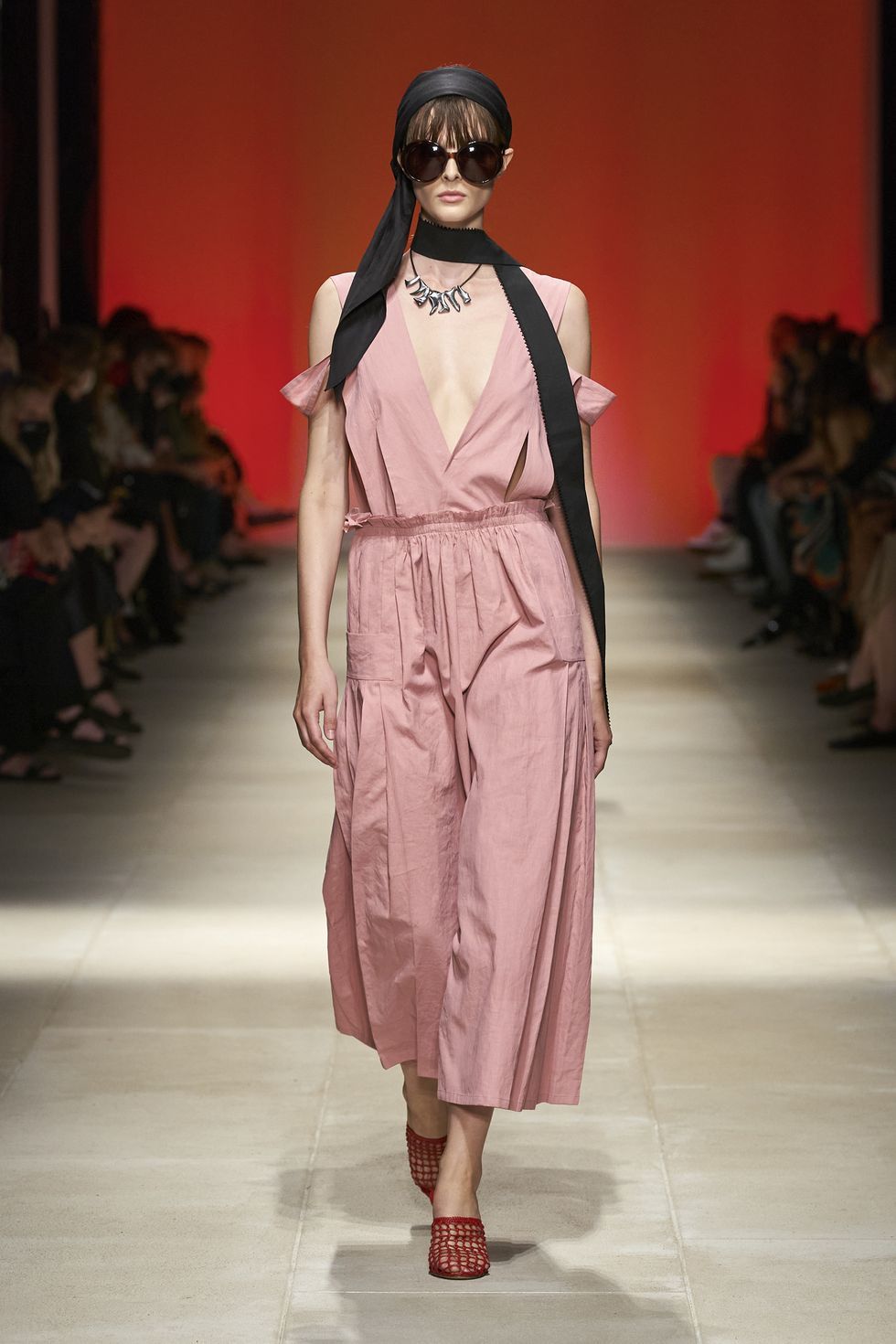 Salvatore Ferragamo
Salvatore Ferragamo Tod's
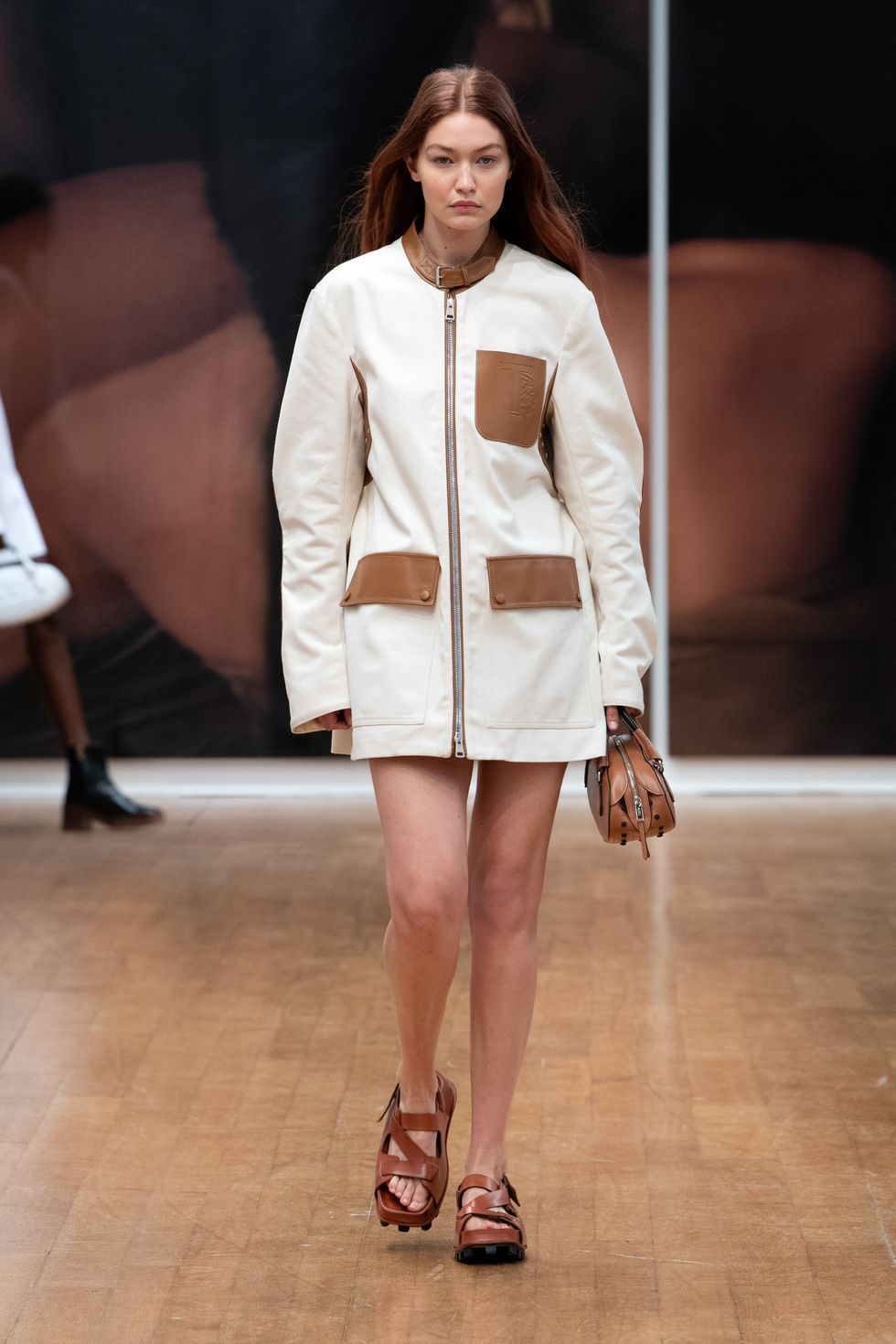 Tod's
Tod's
Quality, utilitarianism, and craftsmanship all come to mind immediately when thinking of Tod’s—so bold uses of color, platform loafers, and crop tops are a fresh take. The spring 2022 collection wasn’t short on luxe, wearable pieces, but the lightness evoked by the bright, new elements was intended to recall the world of sports and suggest an airiness intended to help us all forget the troubles of the past year and look toward a brighter future.
As for the accessories, sandals and sneakers were meant for pounding the pavement, although they had a chunkier, cool-kid energy. Boots and loafers came with a heftier, higher platform and sat in contrast to daintier kitten heels and the label’s signature asset: super-luxe handbags.
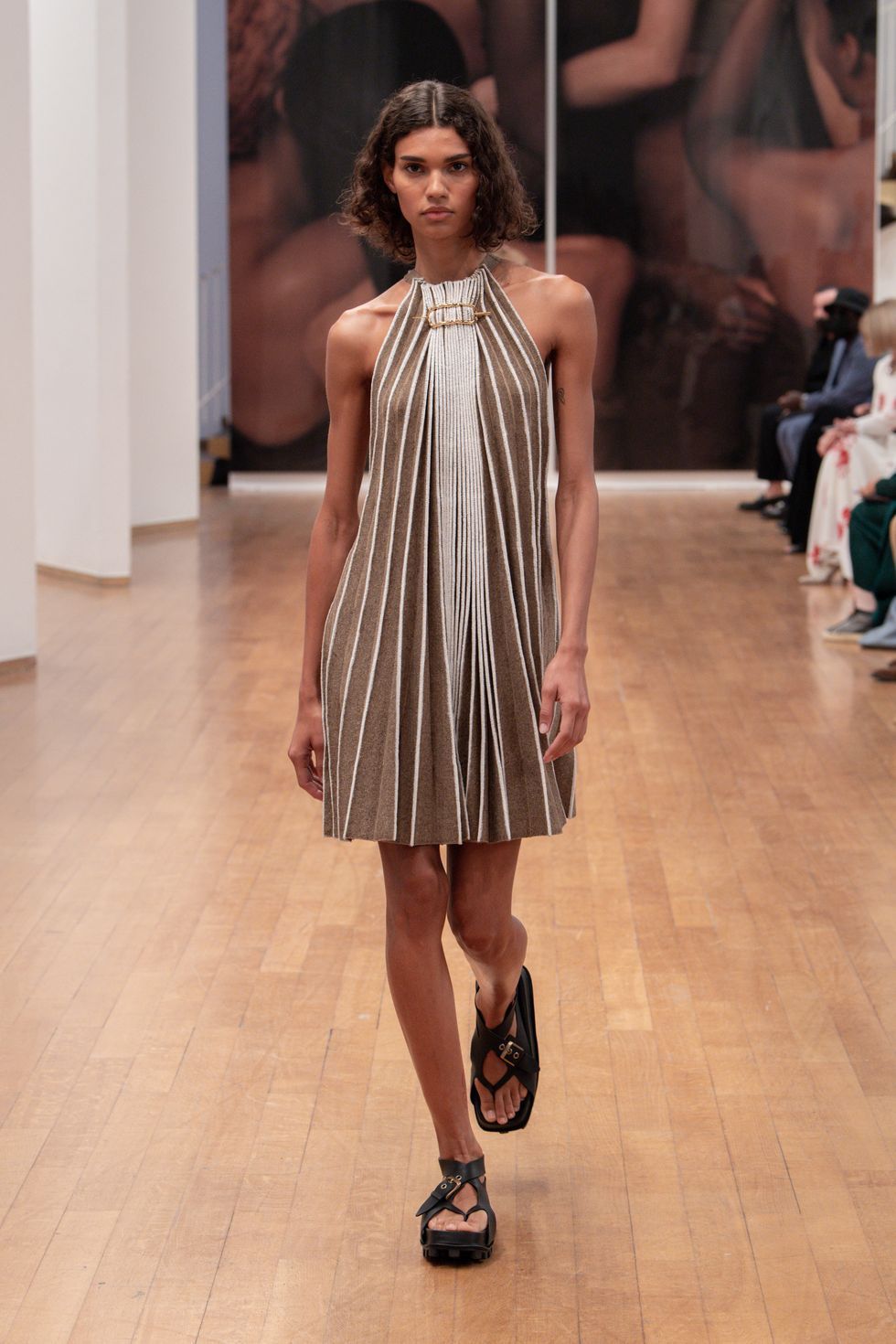 Tod's
Tod's  Tod's
Tod's 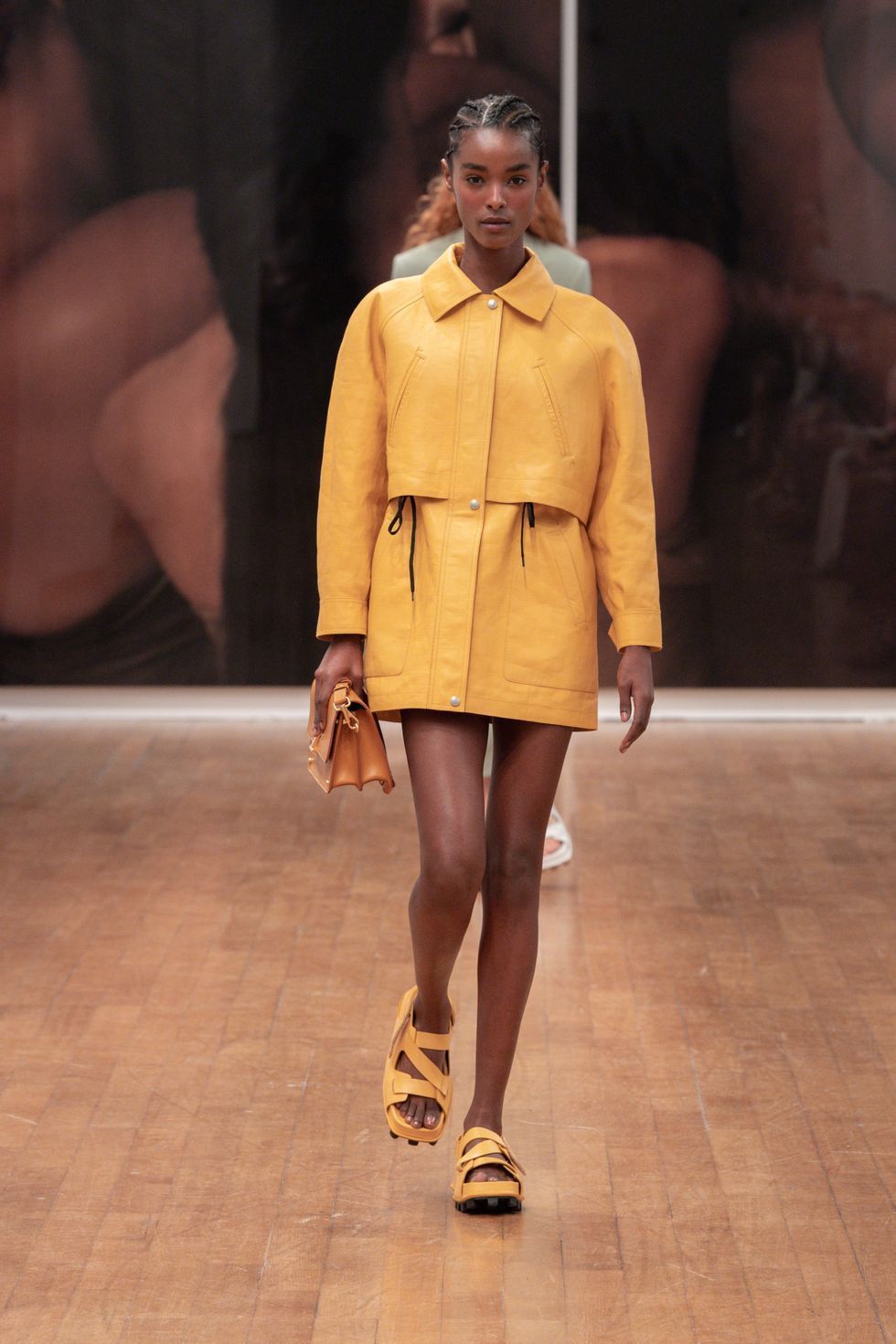 Tod's
Tod's 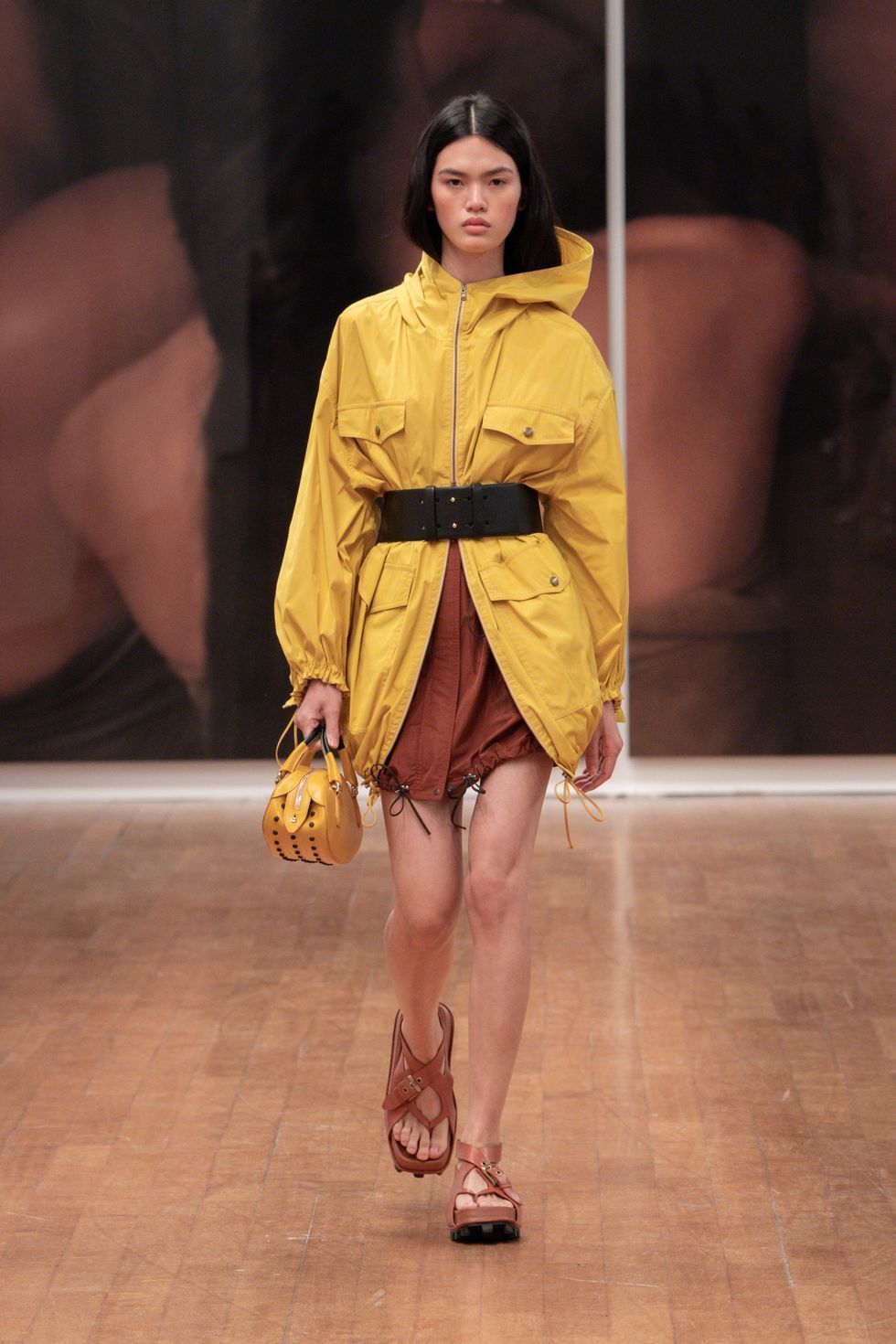 Tod's
Tod's MM6 Maison Margiela
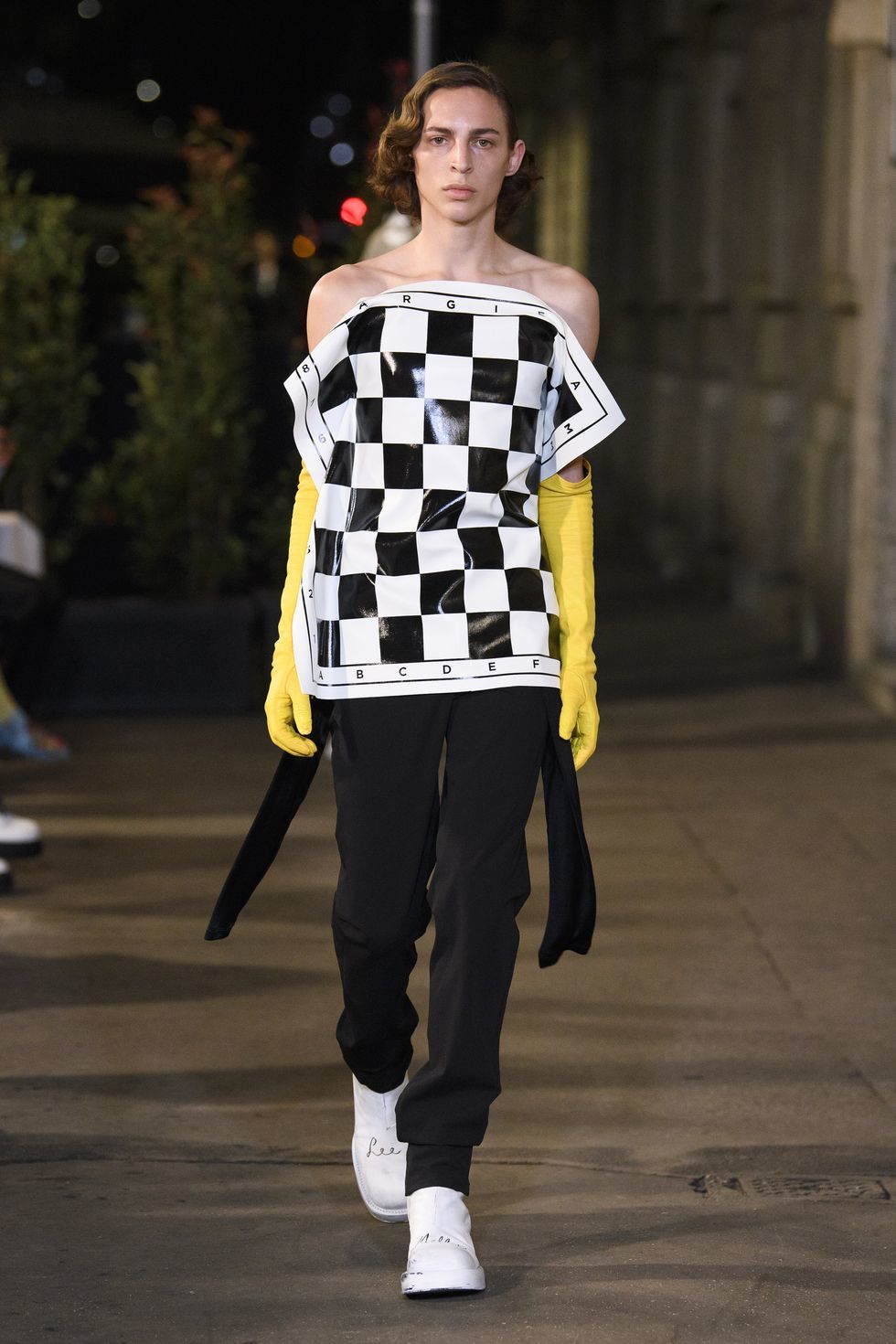 MM6 Maison Margiela
MM6 Maison Margiela
You know that saying, "He's playing chess, and they're playing checkers?" The latest collection from MM6 Maison Margiela kind of did both. On the surface, a checkerboard motif took literal riffs on pizzeria tablecloths, The Queen's Gambit, and the commedia dell'arte costumes of the Italian Renaissance.
But look a few moves ahead, and the slouchy slacks, layered suiting, and high-contrast color pops weren't just here for a good time—they will remain in your wardrobe for the long haul. As for the kooky spiderweb worn as a tank top? I mean ... we're knot mad about it.
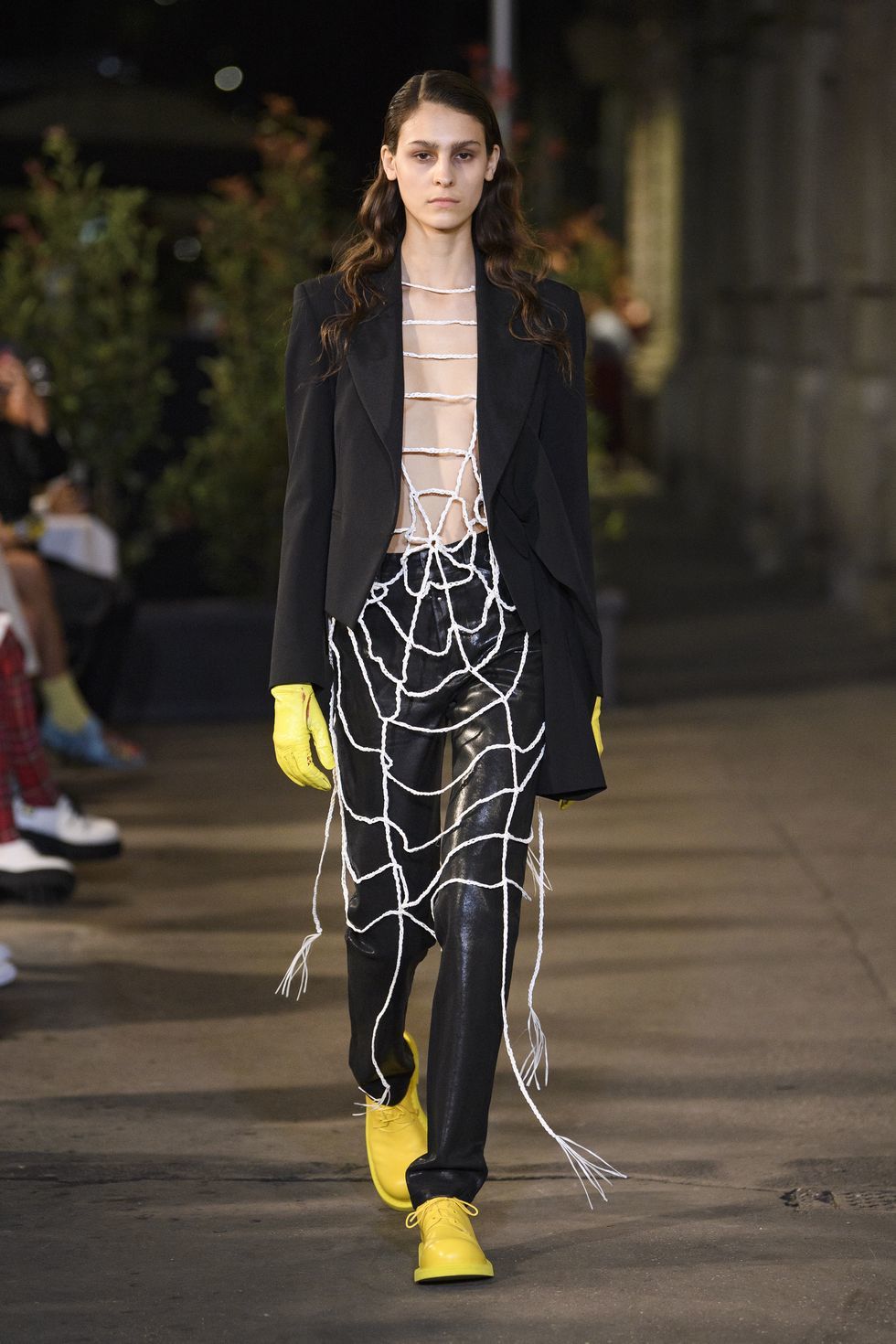 MM6 Maison Margiela
MM6 Maison Margiela  MM6 Maison Margiela
MM6 Maison Margiela 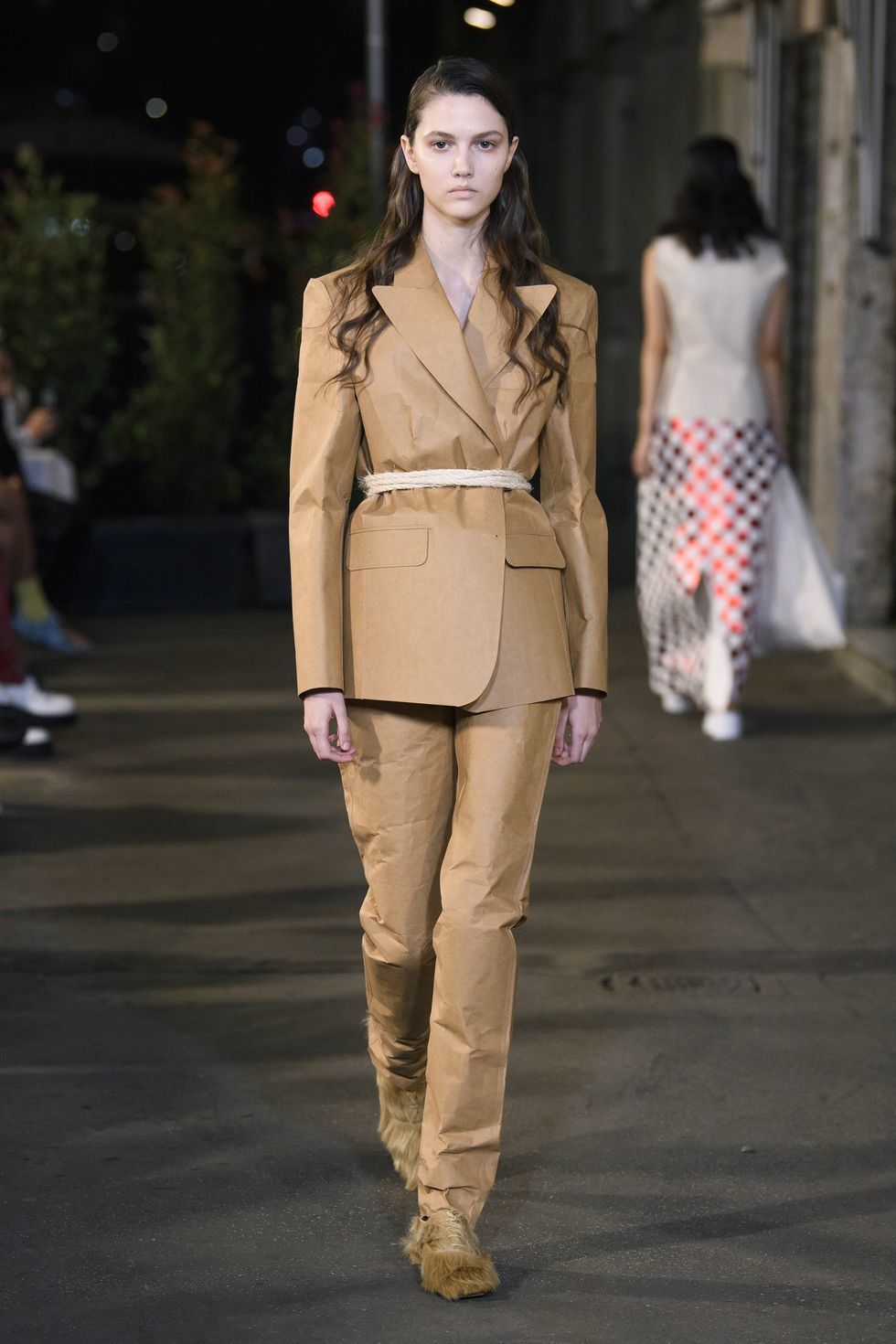 MM6 Maison Margiela
MM6 Maison Margiela 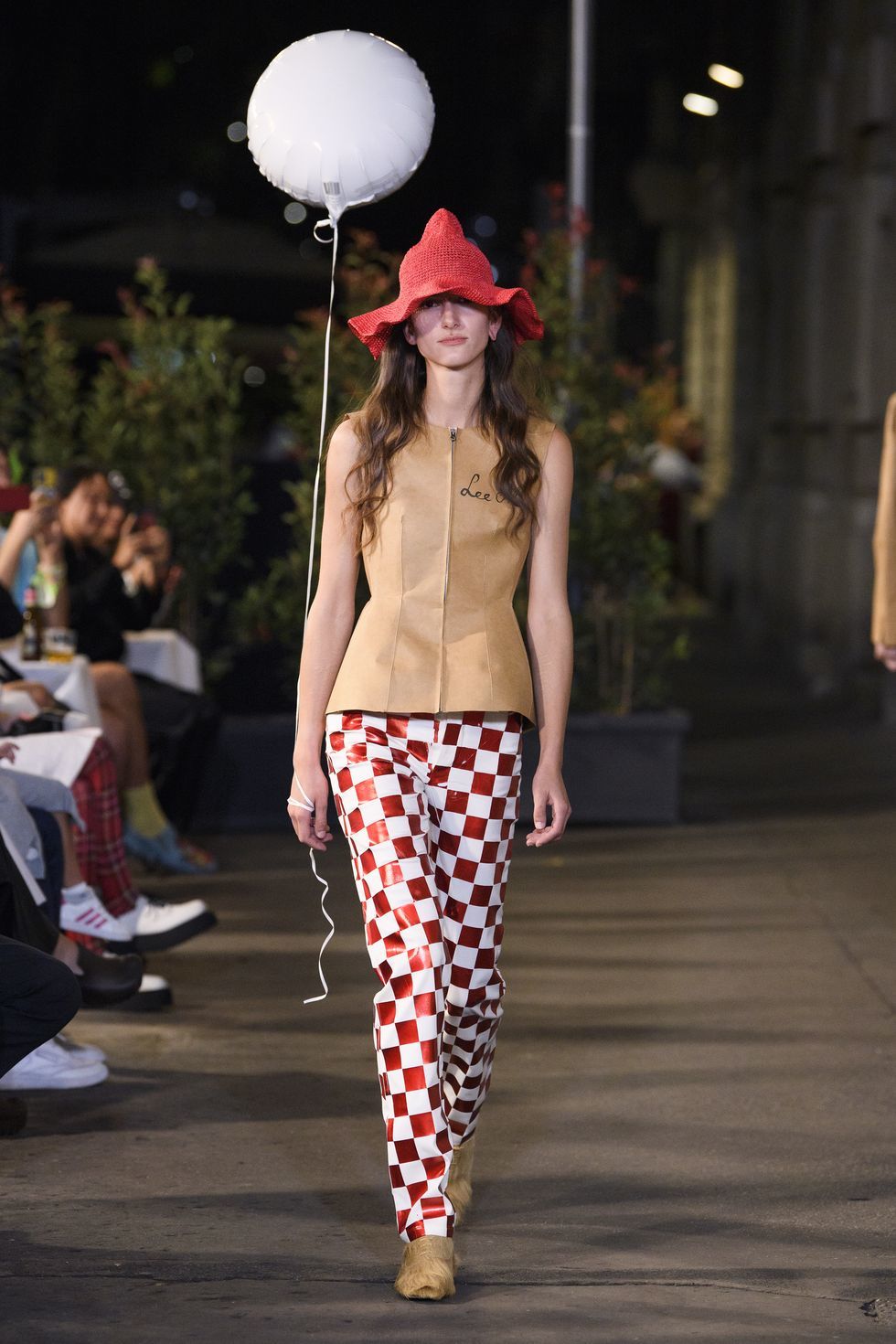 MM6 Maison Margiela
MM6 Maison Margiela  MM6 Maison Margiela
MM6 Maison Margiela Missoni
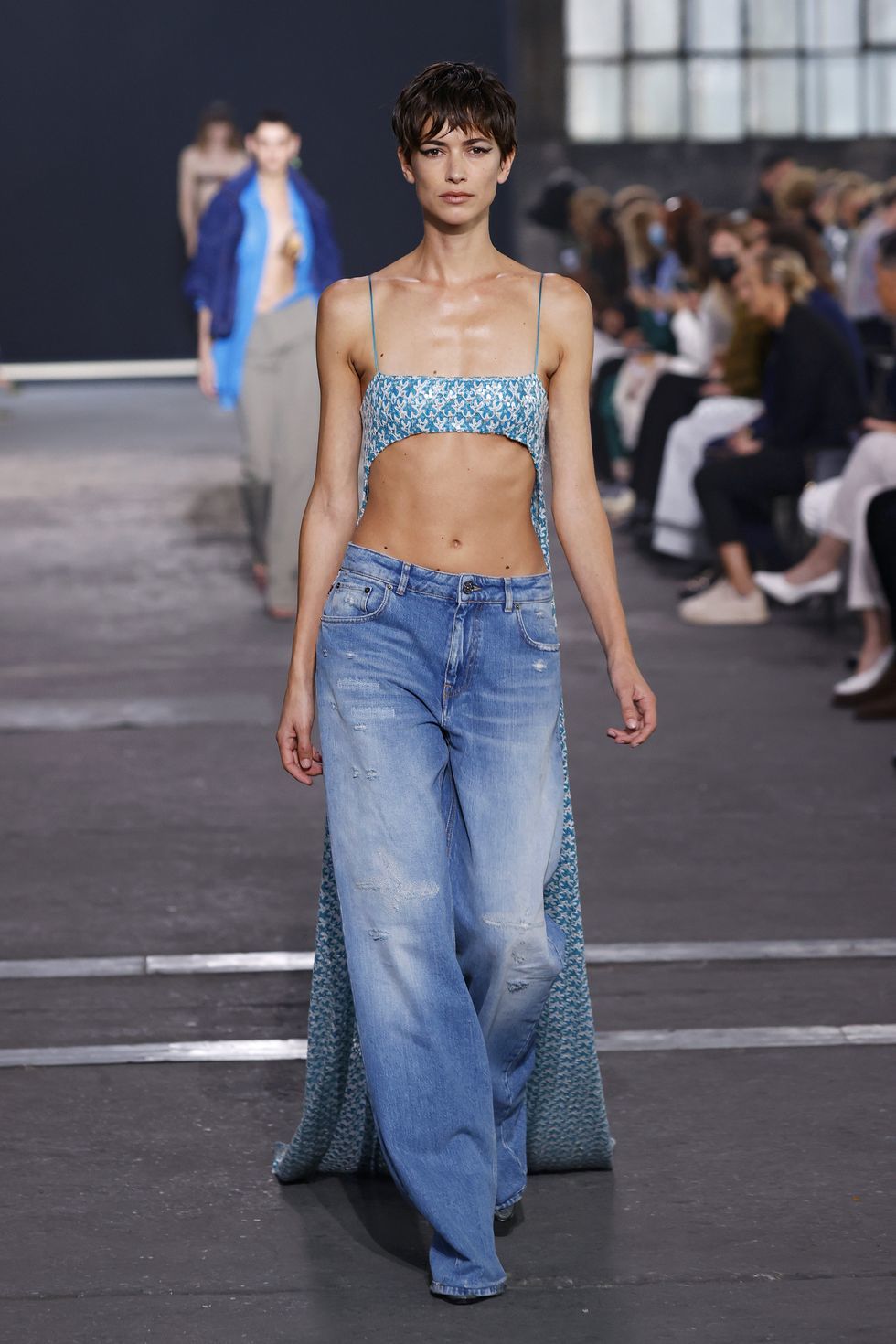 Missoni
Missoni
Well, that's new! Missoni's latest show marks Alberto Caliri's design debut, and a true change of the guard. Gone are the stretchy zig-zag clings with long sleeves and maxi hems that covered everything except the wearer's excellent taste. Now that same iconic fabric has been slashed and stretched into bodycon cut-outs, neo-Britney triangle tops, and a real reverence for underboob. Some fashion shakers wondered, for a female-power-and-ease brand like Missoni, what's bare flesh got to do with it? Others (including our own Nikki Ogunnaike) loved the vixen vibes, and the idea that TikTok teens can covet the same textiles as their '70s idols. (The DIY potential here is also off the charts, especially for all that Missoni x Target lurking on Depop just begging to be slashed and re-sewn.) Meanwhile, purists can skip ahead to the final looks: metallic maxi gowns for everyone.
 Missoni
Missoni  Missoni
Missoni 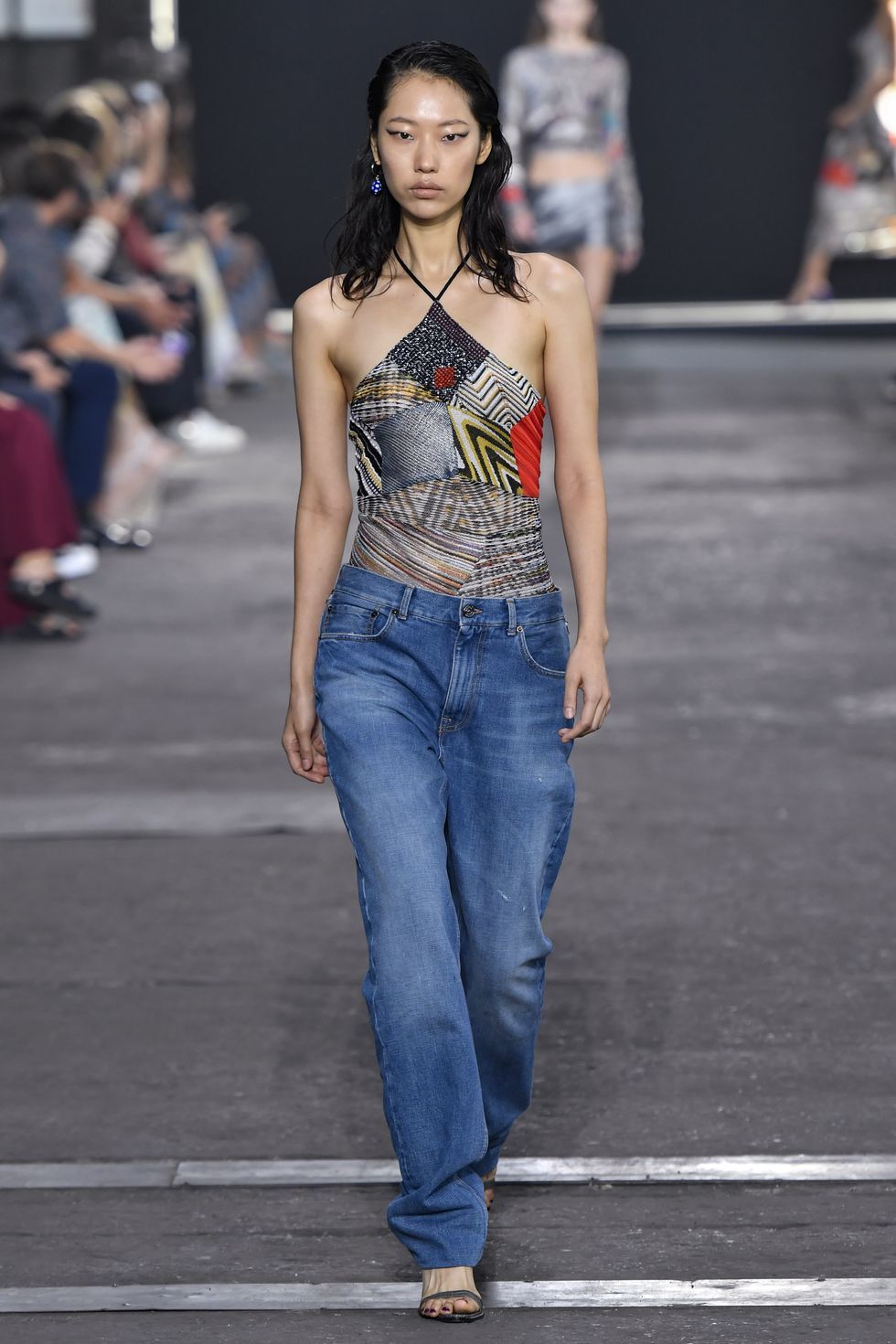 Missoni
Missoni  Missoni
Missoni Giorgio Armani
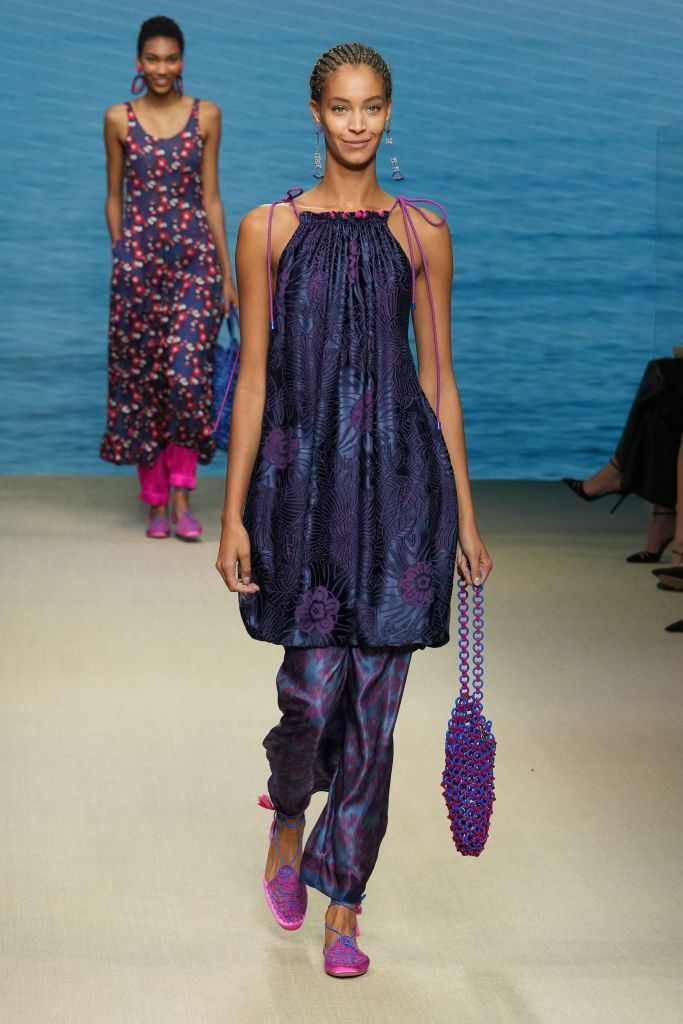 Giorgio Armani
Giorgio Armani
Seafoam green, oceanic blue, and calming shades of cloudy white: These are just a few of the hues Giorgio Armani delved into for the spring 2022 show. As a fixture of the Italian fashion world for decades, the label has become known for its singular shapes and streamlined aesthetic. Set against the backdrop of an endless ocean with a runway that mimicked the color of a sandy beach, the label showed all the signatures of its household codes, from oversized suiting to immaculately tailored, embellished gowns in frothy fabrics that seemed to float down the catwalk. Armani’s most surprising takeaway this season? Harem pants are back. But this time around, they come in delicious silk and chiffon fabrications, with dreamlike prints in jewel tones.
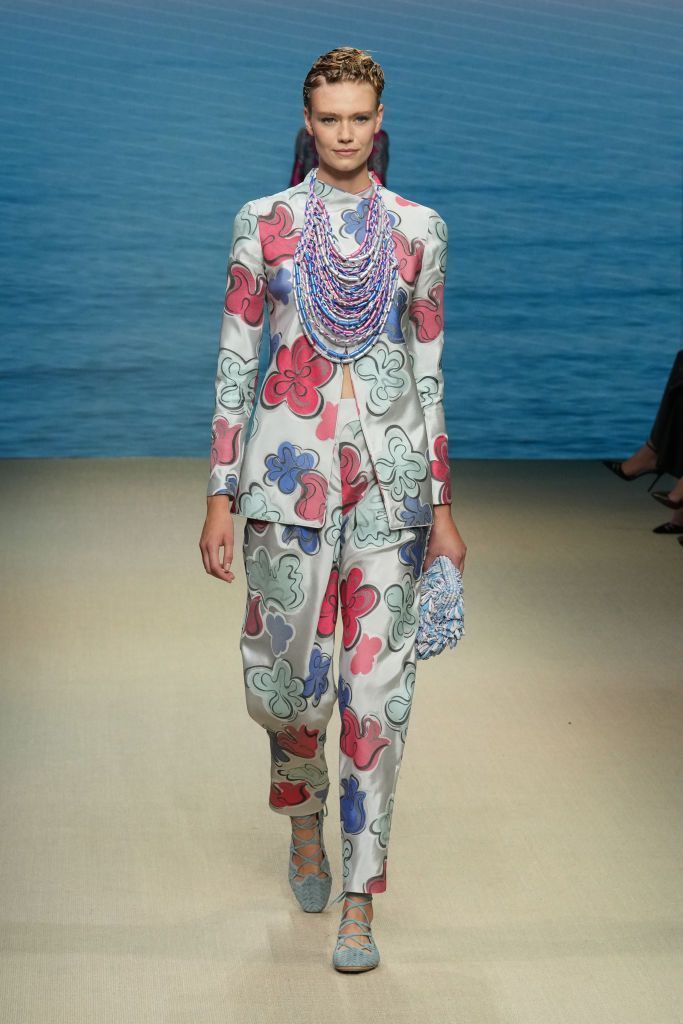 Giorgio Armani
Giorgio Armani 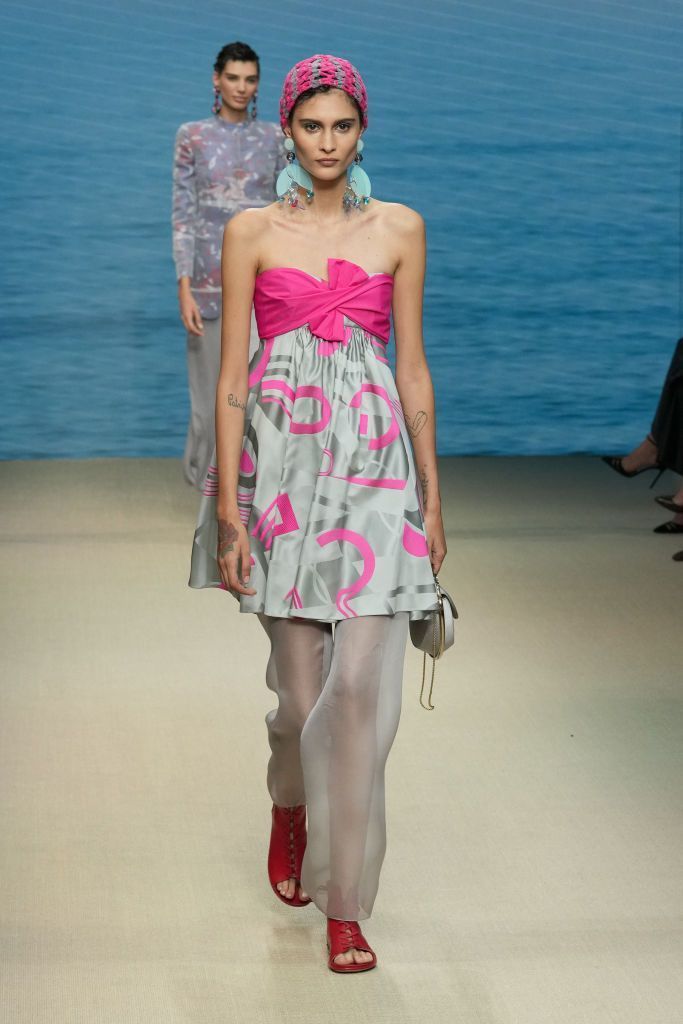 Giorgio Armani
Giorgio Armani  Giorgio Armani
Giorgio Armani  Giorgio Armani
Giorgio Armani Philosophy di Lorenzo Serafini
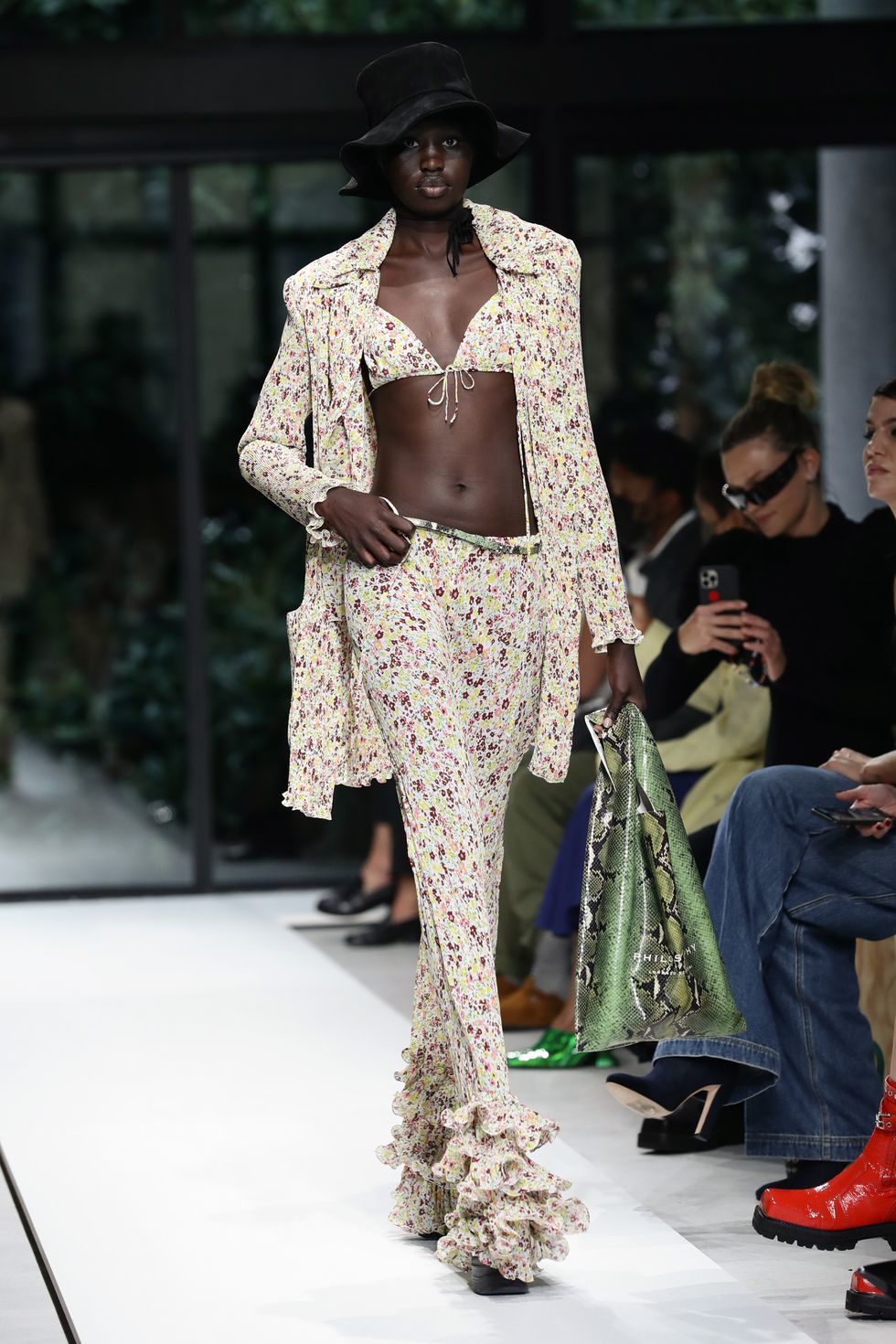 Philosophy di Lorenzo Serafini
Philosophy di Lorenzo Serafini
We can always count on Philosophy for a few things each season: an unbridled dedication to romanticism, a heavy dose of femininity, and an unwavering and unexpected punch of prep. For spring 2022, creative director Lorenzo Serafini took us on a trip to the '70s, as he envisioned it.
Models wore plush leather fringed jackets in shades of periwinkle and cognac, alongside flared floral sets, lamé button-down dresses, and easy deep-neck tops with simple bikinis peeking out. Vibrant hues like carnelian, emerald, and royal purple were a nod to the loud and individualistic style of the '70s, but for the dedicated Philosophy fan, there was no shortage of ruffled dresses, romantic frills and all, in subtle shades of lacy white. —Kristen Bateman
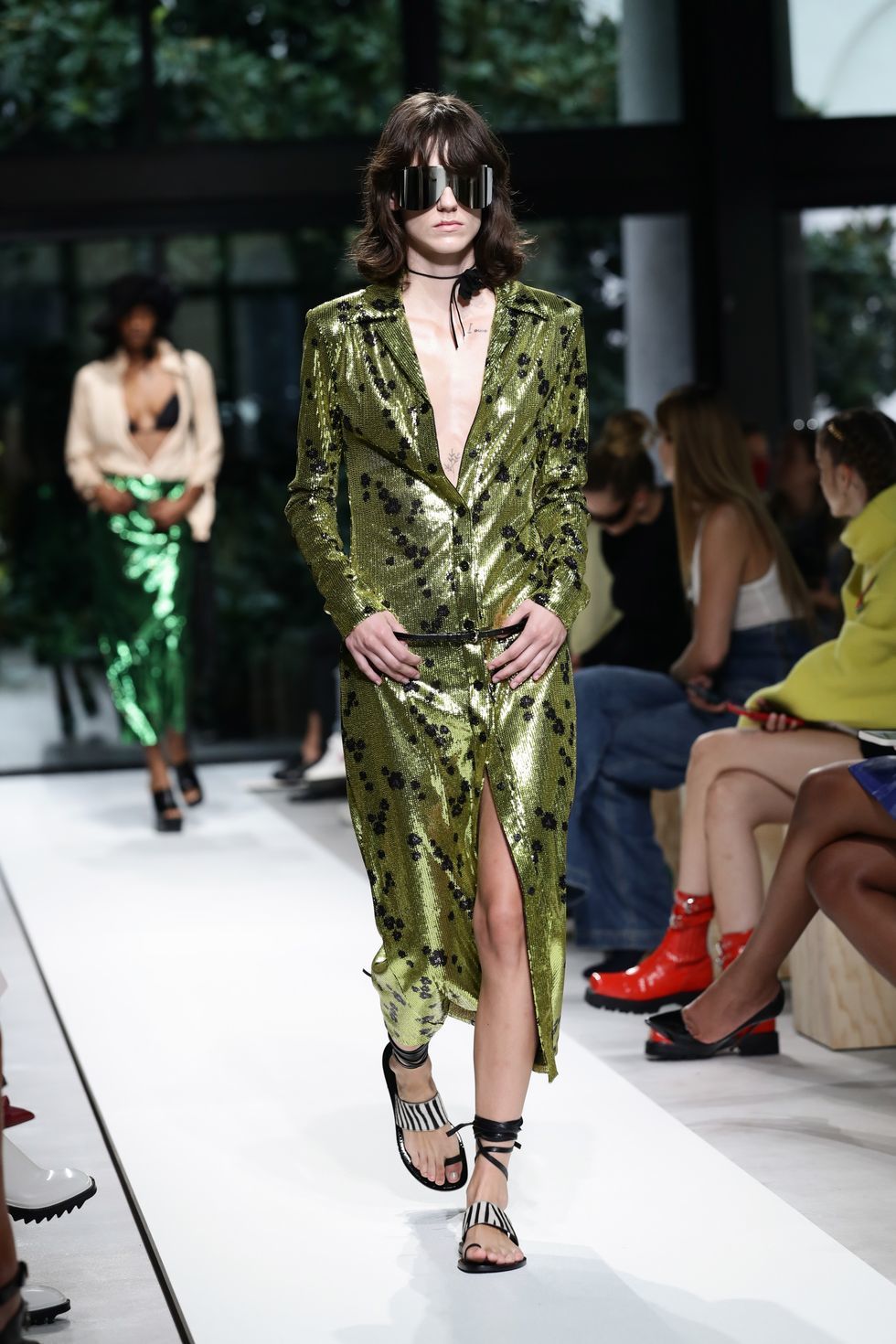 Philosophy di Lorenzo Serafini
Philosophy di Lorenzo Serafini  Philosophy di Lorenzo Serafini
Philosophy di Lorenzo Serafini 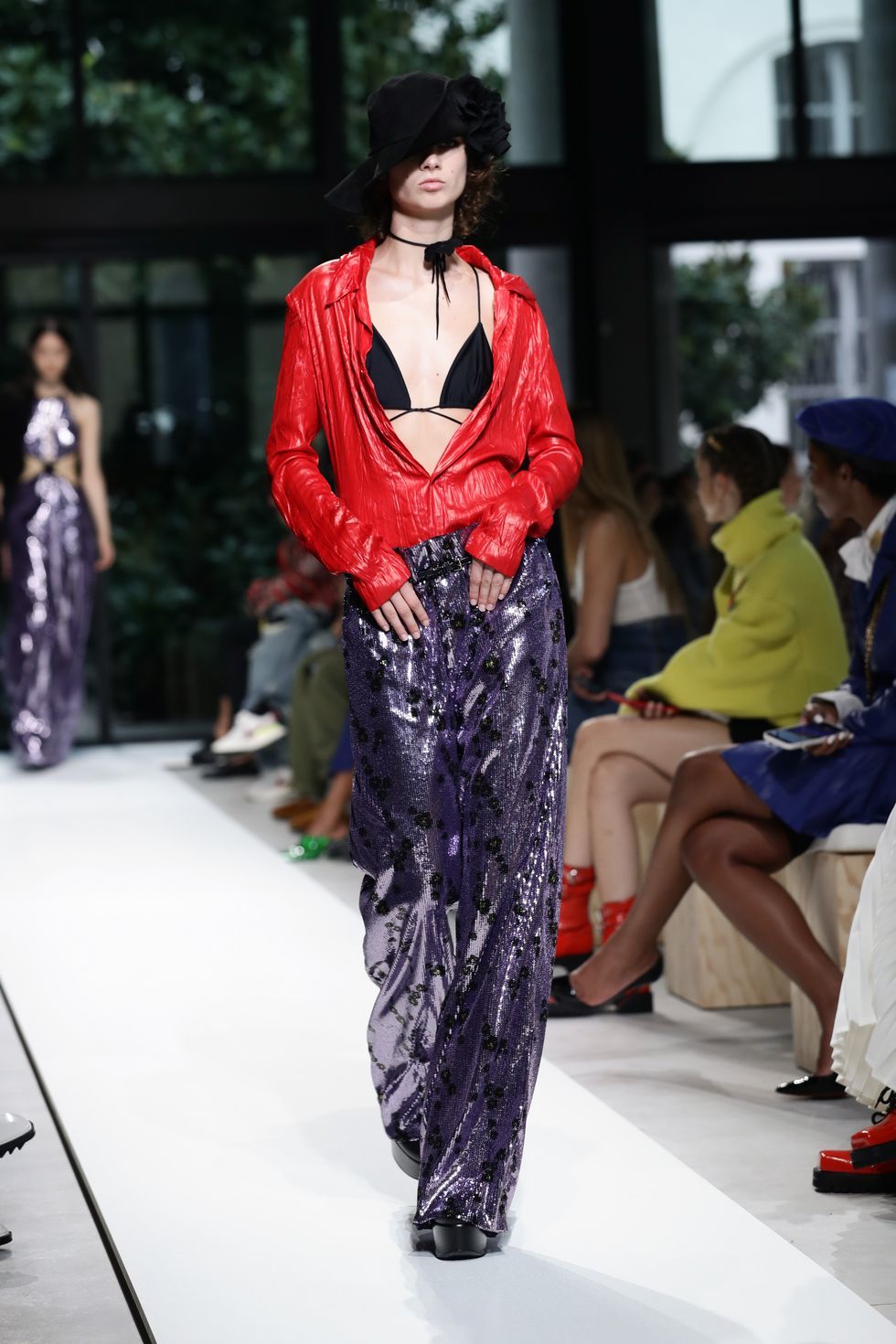 Philosophy di Lorenzo Serafini
Philosophy di Lorenzo Serafini  Philosophy di Lorenzo Serafini
Philosophy di Lorenzo Serafini Prada
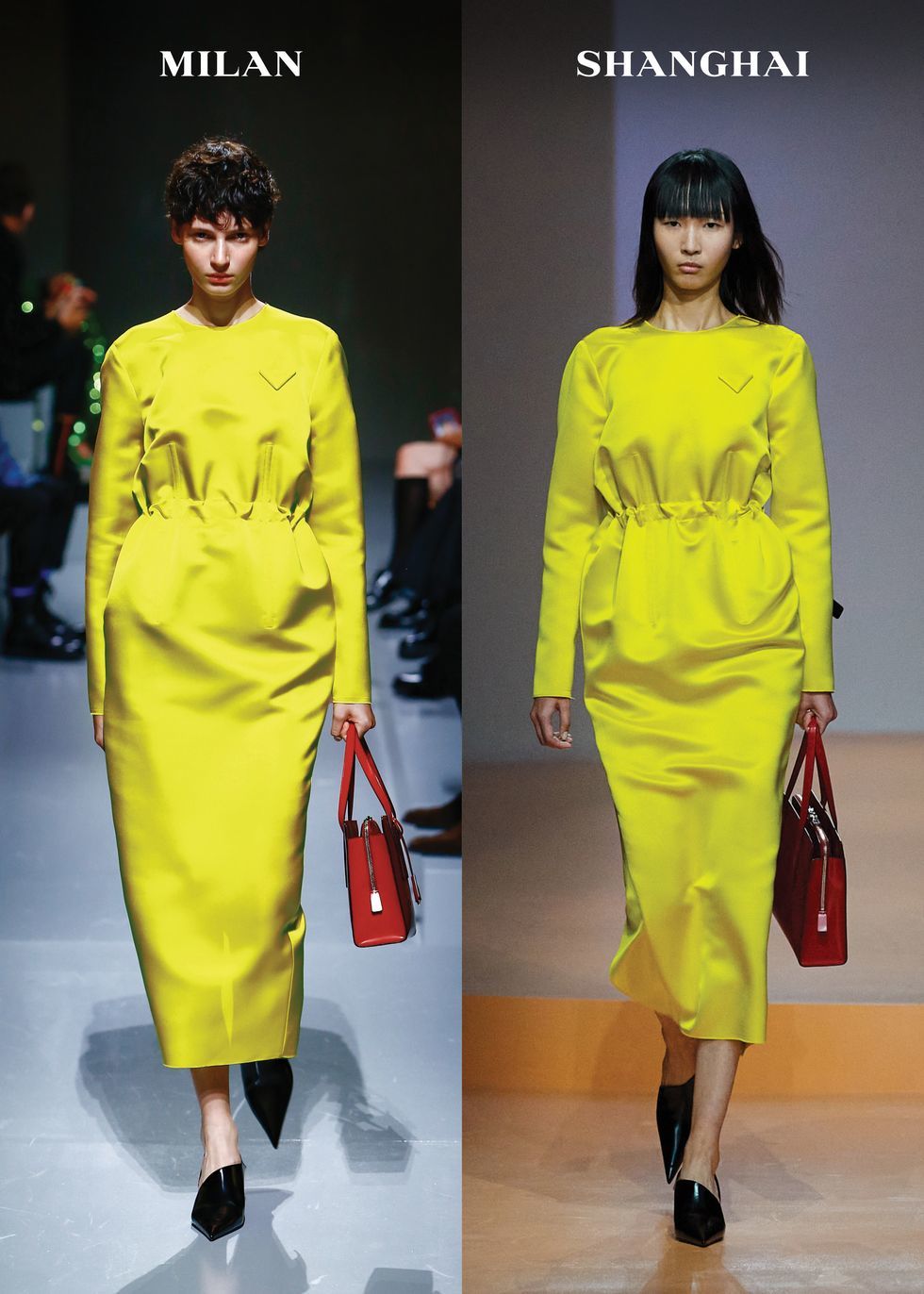 Prada
Prada
Leave to Prada to make sex intellectual. Miuccia Prada and Raf Simons’s spring 2022 collection may be titled Seduction, Stripped Down, but there were none of the bra tops and naked dresses seen on other runways in this show simulcast from Milan and Shanghai. In the Prada-verse, the heels are always kitten height, and sex appeal is all about suggestion.
The co-creative directors reduced tropes of classical femininity like lingerie and corsetry to their purest forms and re-contextualized them. So the curve of an underwire was applied to a polo-collar sweater, while graphic tees and jackets came embellished with corset laces. Many of the aforementioned looks trailed anomalous strips of couture silk, which the show notes poetically called “the memory of a train.”
 Prada
Prada Prada
Prada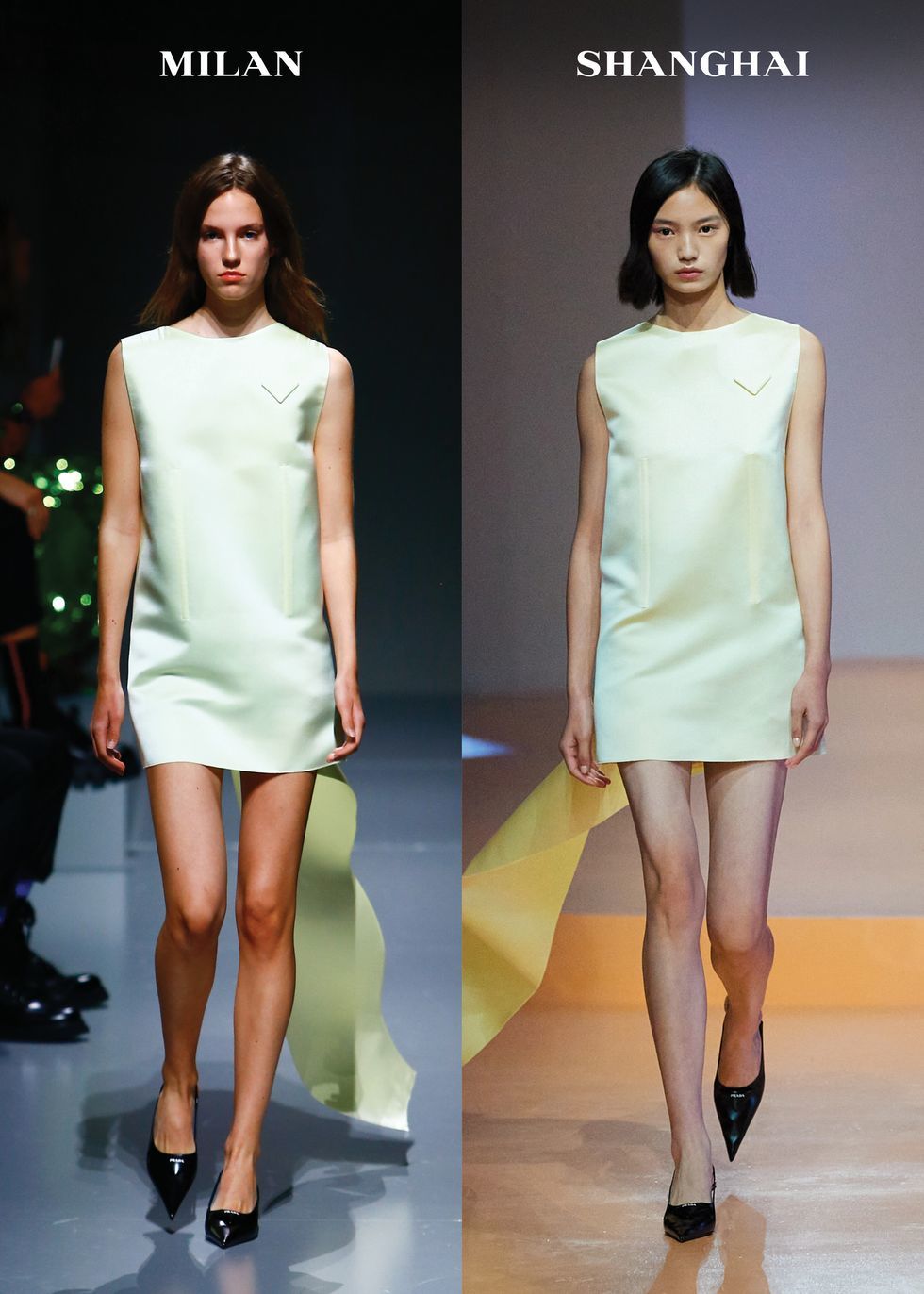 Prada
Prada Prada
PradaSportmax
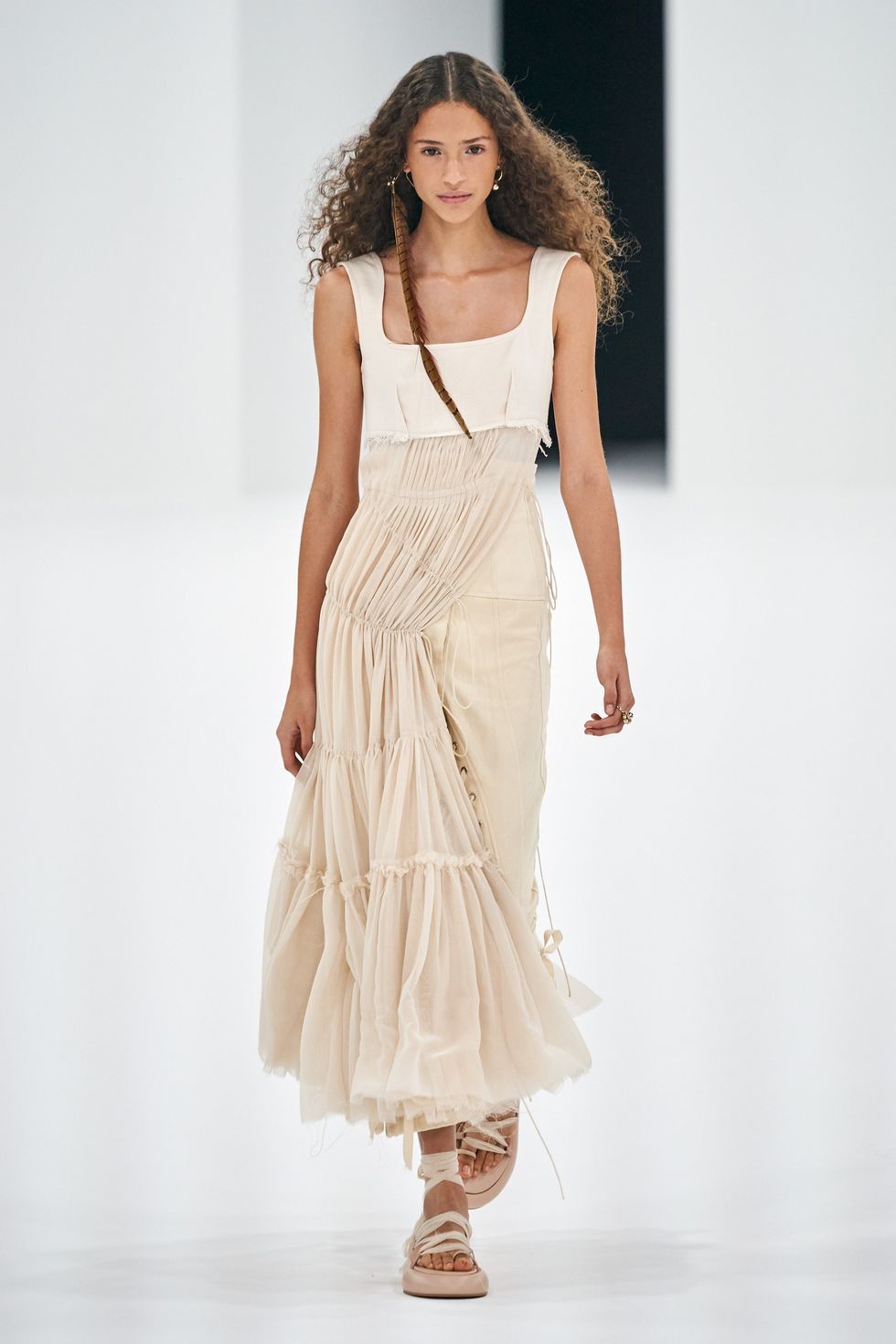 Sportmax
Sportmax
For every instance of cottagecore romance spotted on the Sportmax runway, there was a dose of unapologetic, here-to-take-up-space attitude for counterbalance. Corsetry, scooped-out necklines, raw-edged tulle, and dainty florals were the stuff of sublime sweetness—and best taken in small doses.
The presence of that tougher stuff added interest and intrigue, making one wonder what the woman behind the clothes is all about. Wide-leg trousers and oversized jackets were ready to work, but in a slouchy way that didn't impersonate menswear. Rather, it was sensual and soft, clearly for her and not stolen from the boys.
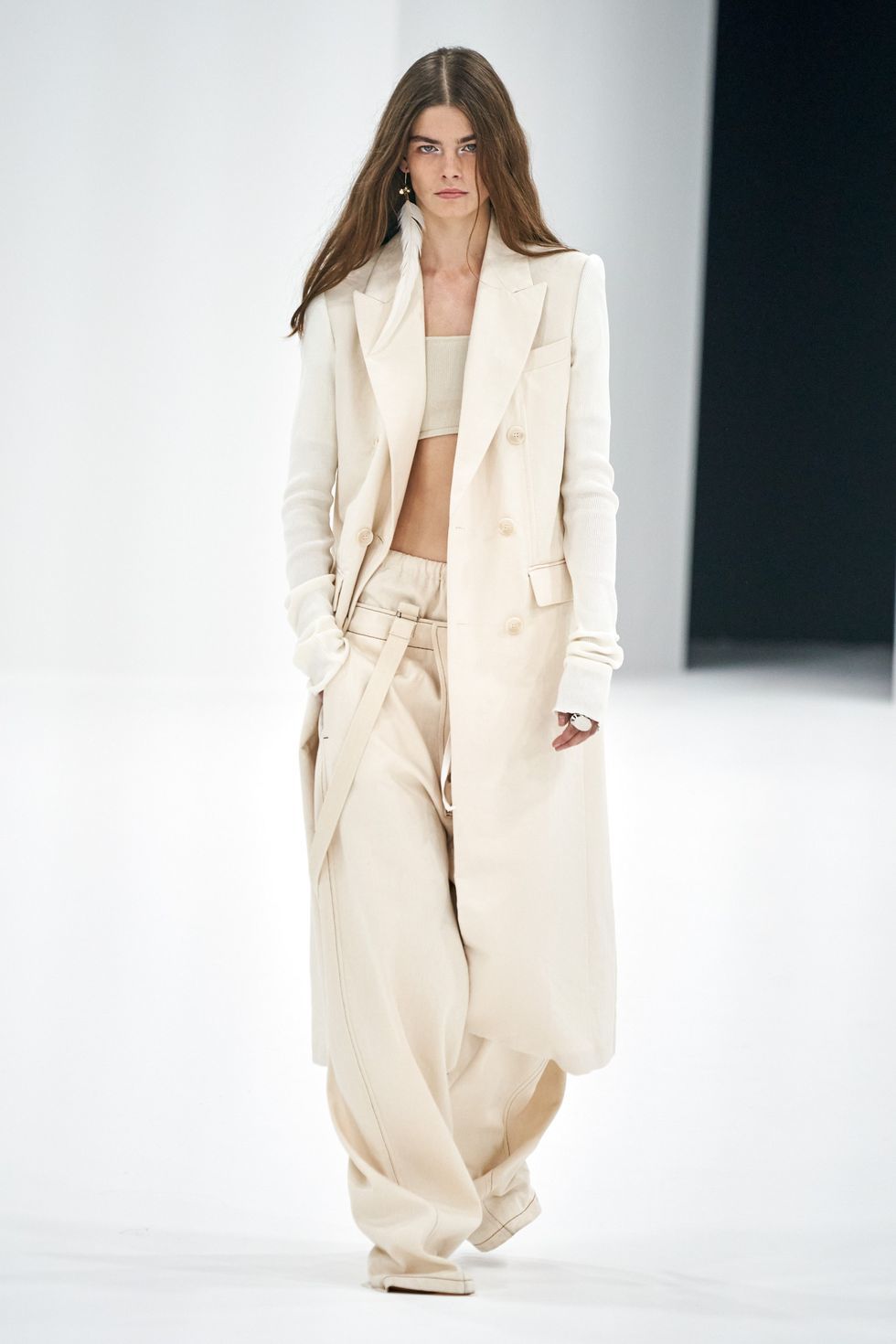 Sportmax
Sportmax  Sportmax
Sportmax  Sportmax
Sportmax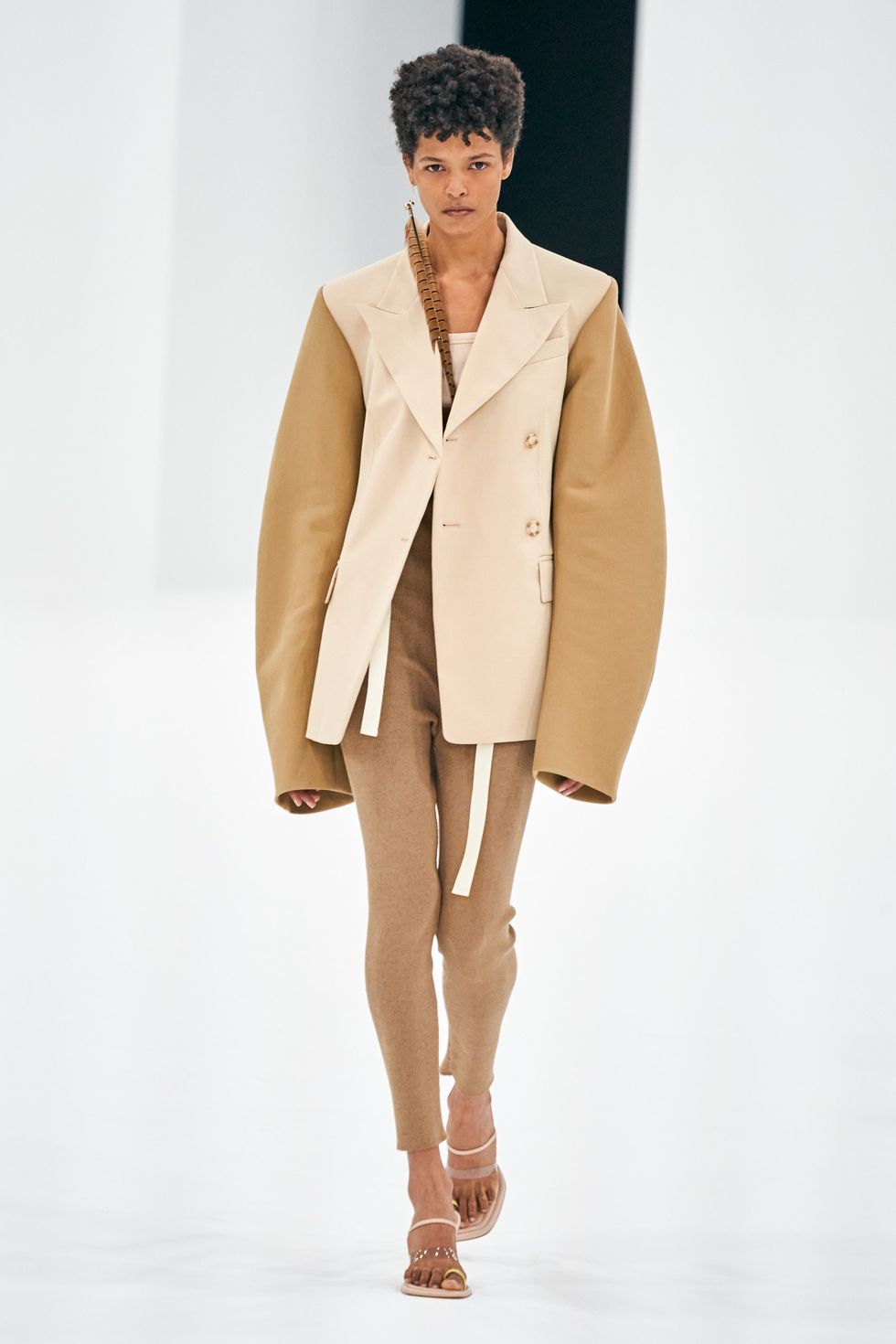 Sportmax
SportmaxBlumarine
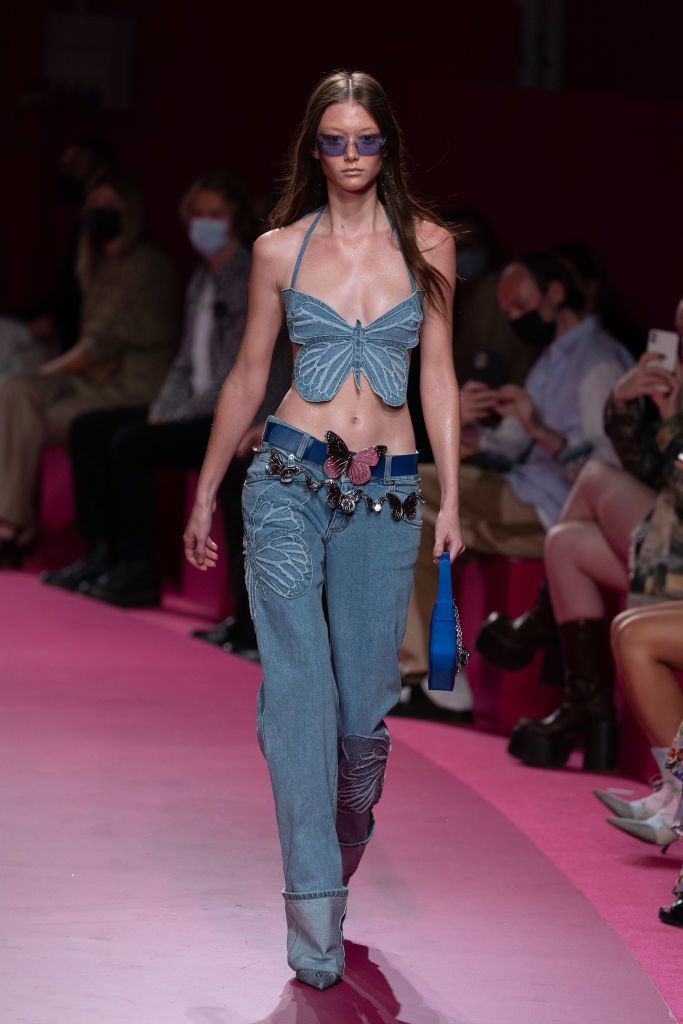 Blumarine
Blumarine
The Y2K style renaissance was out in full force for Blumarine’s spring 2022 collection. Butterfly motifs emerged on necklaces, supersize belts, and tie-on tops, while a symphony of pastels took the form of gossamer-thin V-cut gowns in buttercup yellow and bubblegum-pink halter-neck dresses printed with roses. Nicola Brognano’s creations looked a lot like something the pop stars of the early '00s would easily gravitate to—Britney and J.Lo included—but we think Gen Z would be equally enchanted by a pair of chiffon low-waist cargo pants and a baby crop top.
You only have to scroll through TikTok to see that. With the transparent oversized glasses, silk head scarves, big hoop earrings, and low-slung belts against patchwork denim and shrunken bomber jackets, there was proof, too, that styling has a lot to do with Blumarine’s early-aughts aesthetic. Lotta Volkova, the stylist behind Vetements' fast rise, was behind it. Slap on one of the brand’s bedazzled logo belts and consider it a celebration of more is more.
 Blumarine
Blumarine Blumarine
Blumarine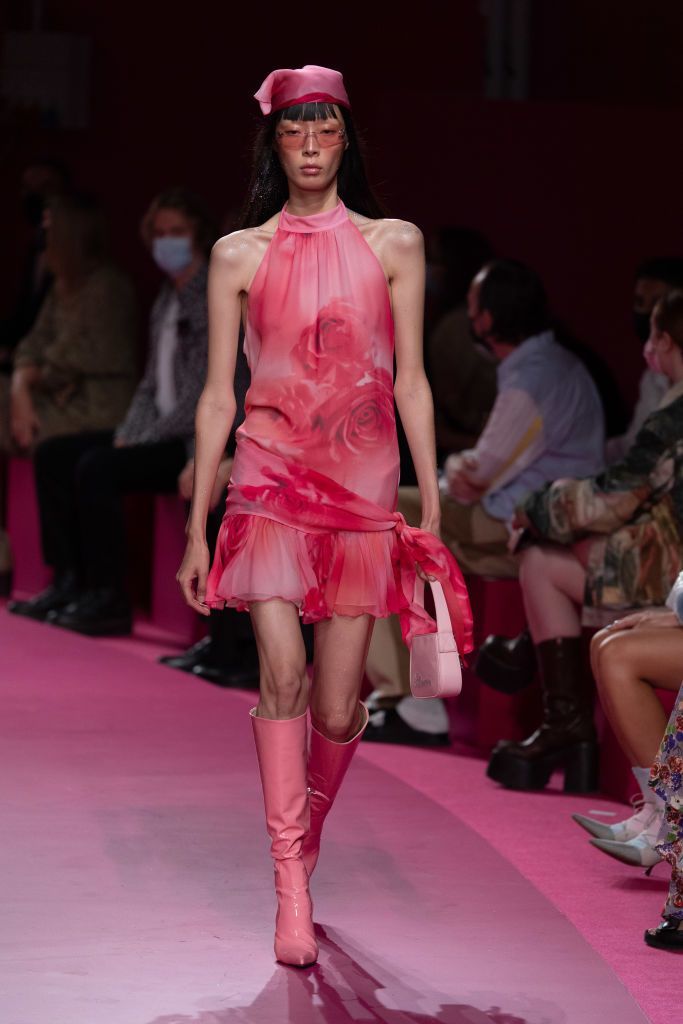 Blumarine
Blumarine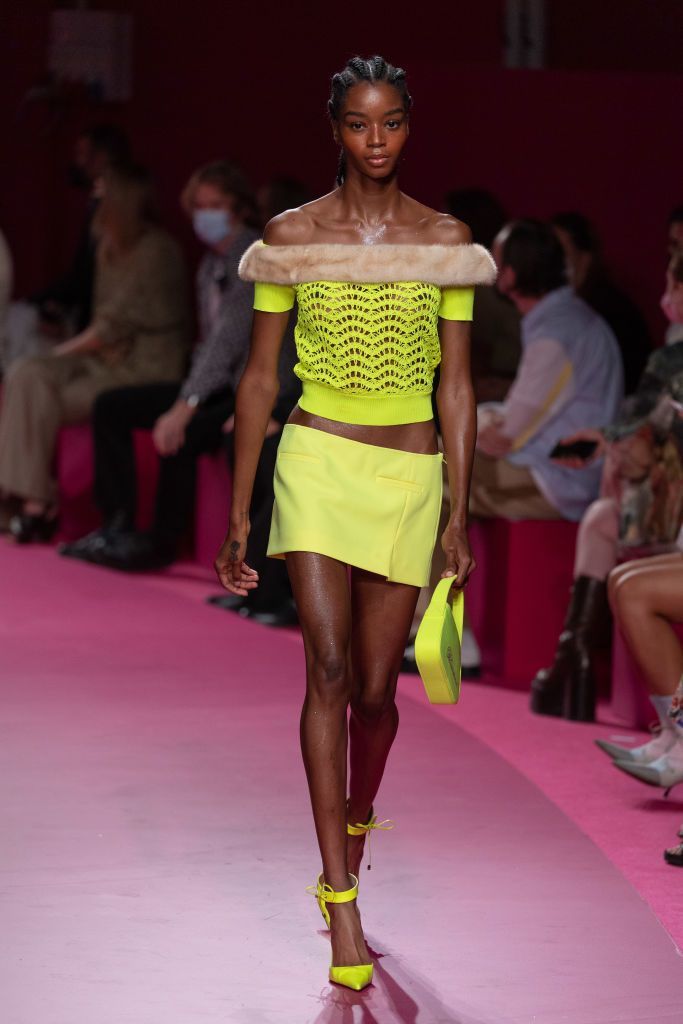 Blumarine
BlumarineMax Mara
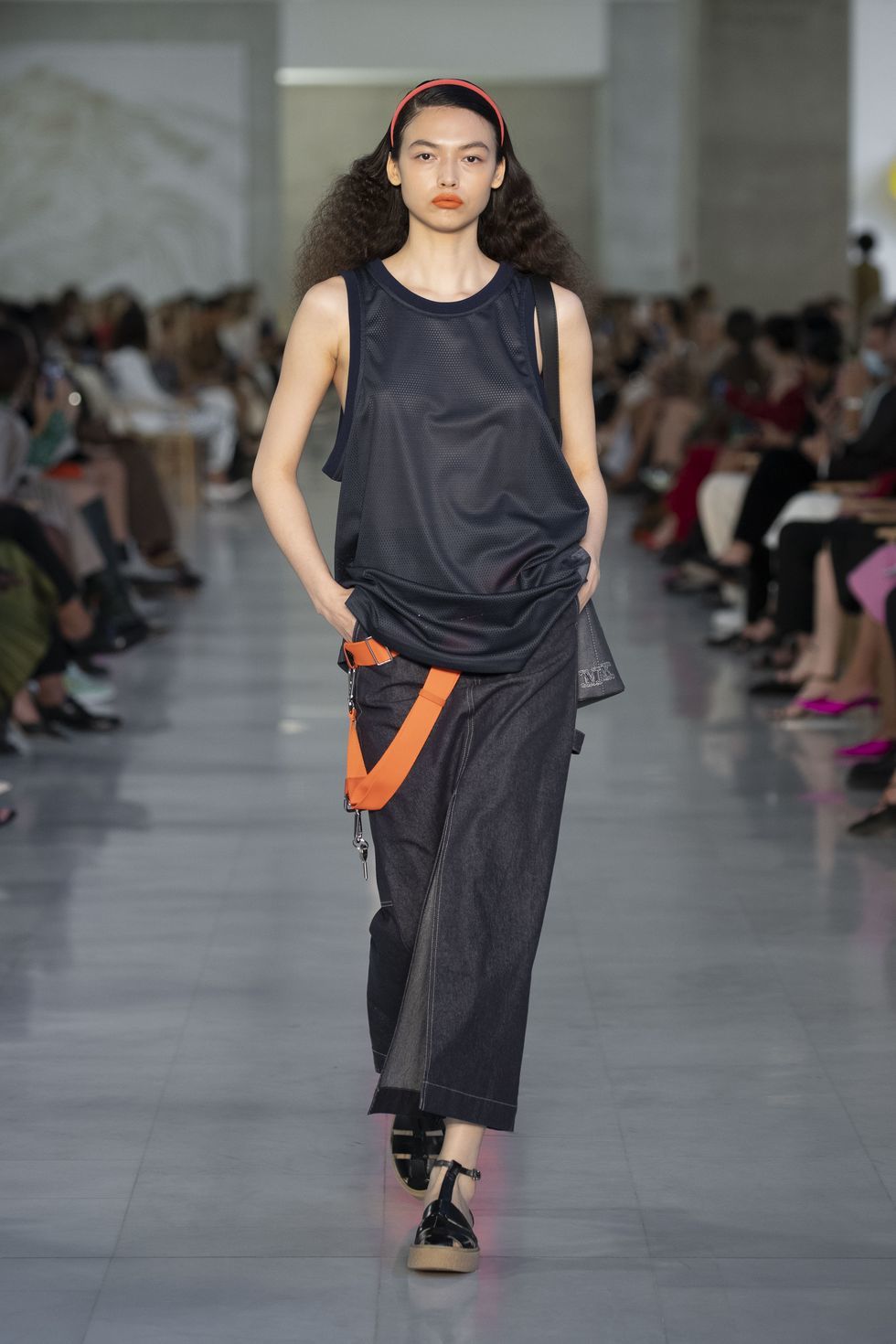 Max Mara
Max Mara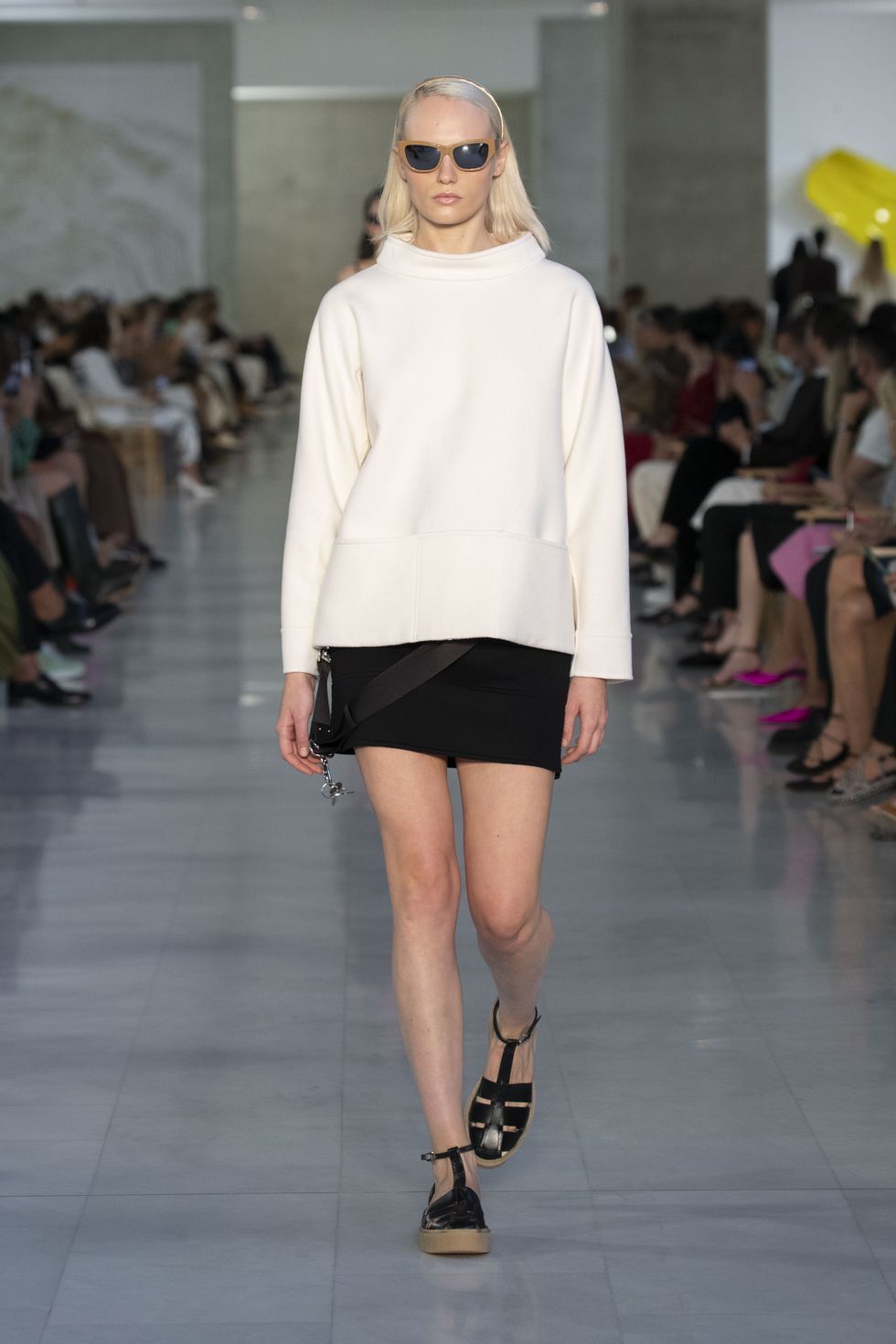 Max Mara
Max Mara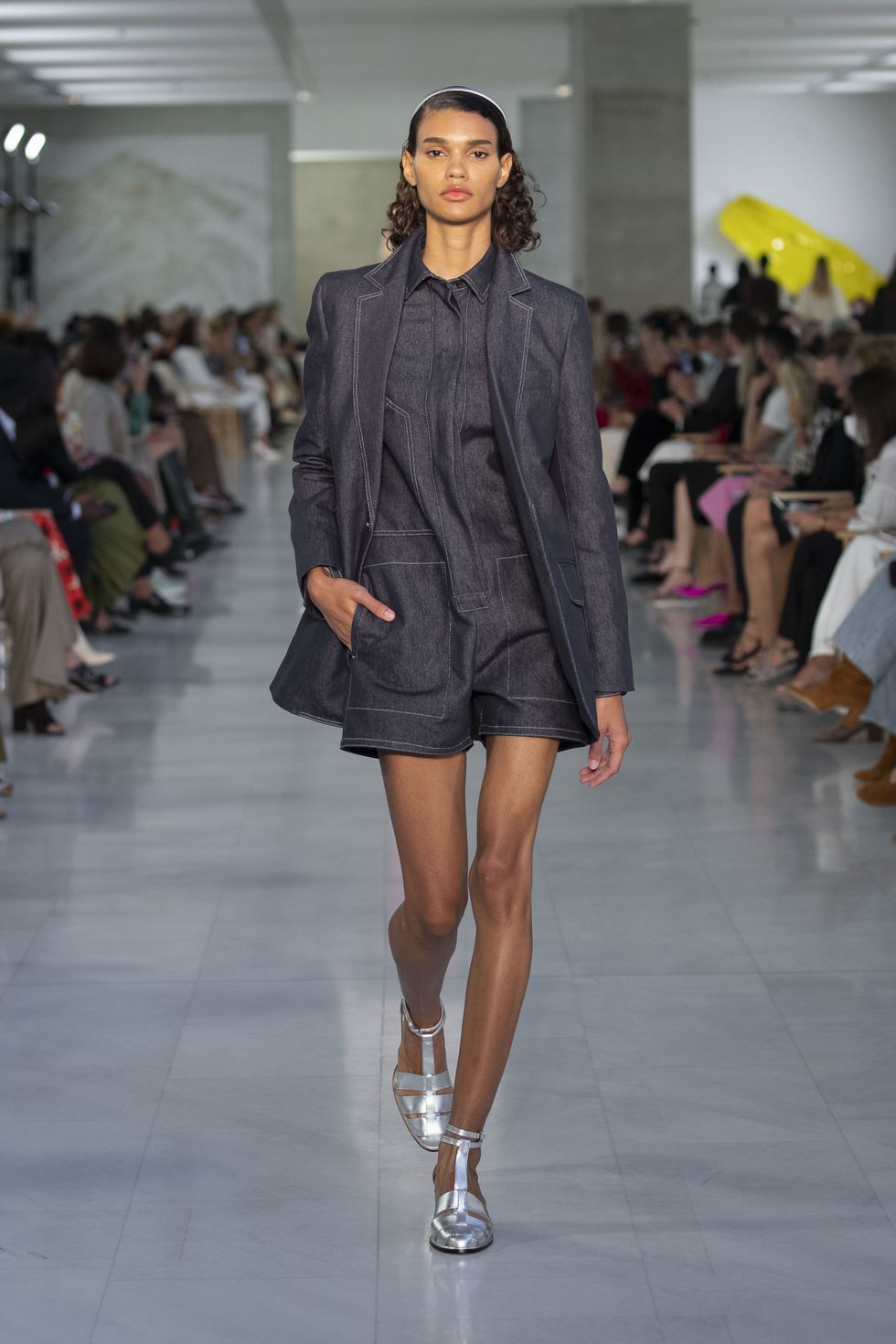 Max Mara
Max Mara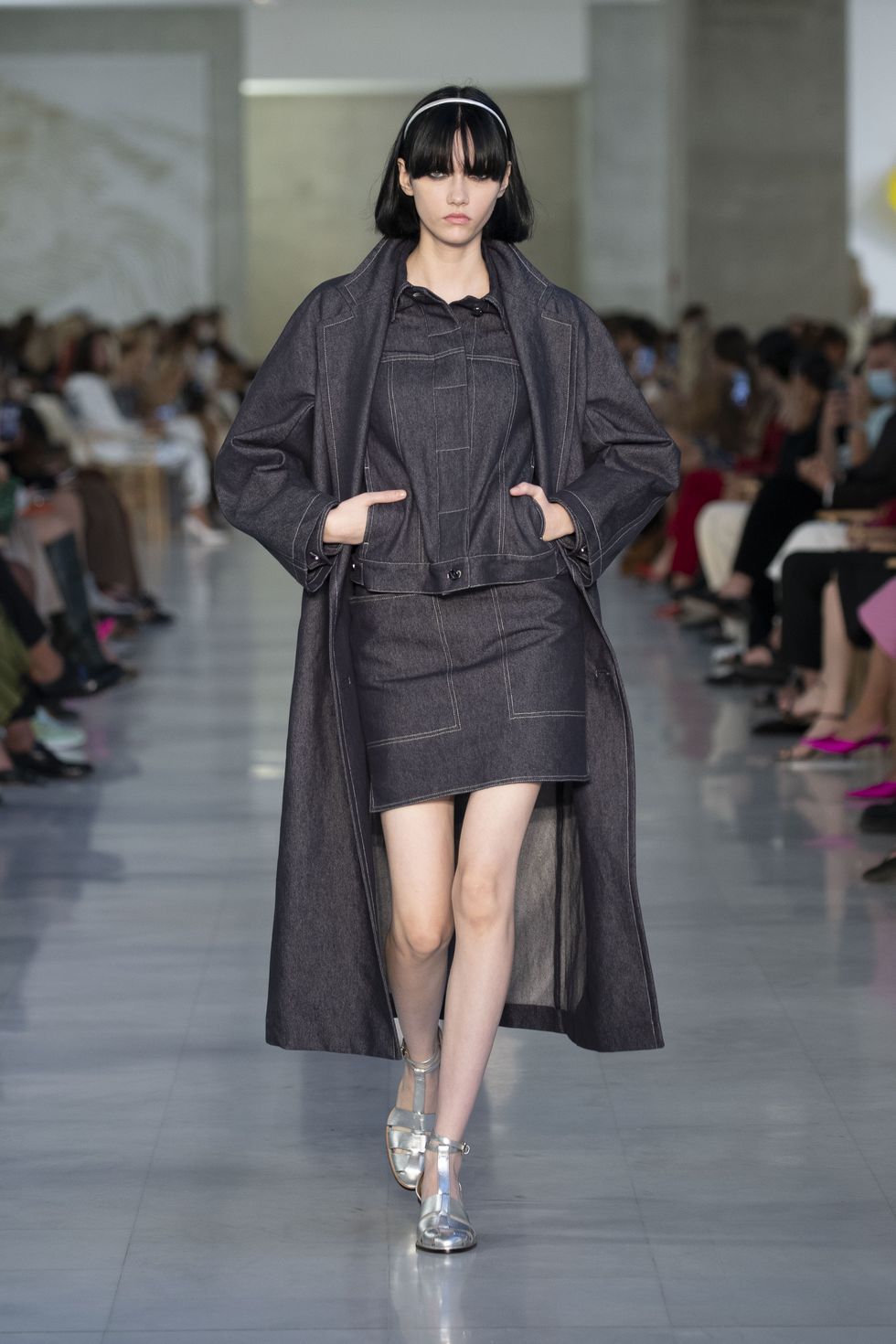 Max Mara
Max MaraEtro
 Etro
Etro
Say “magic carpet ride” and you either get Disney’s Aladdin (1992) or Steppenwolf’s hit song (1968). Both applied to Etro’s newest collection, which sewed its signature textile mix onto hippie-approved rainbow crochet and rave-worthy vinyl jackets alike. Veronica Etro did some denim-and-track pant fusions, too, which will hopefully inspire DIY fashion fans worldwide to remix their old clothes instead of chucking them entirely.
A whole new world? Not exactly. Etro stuck pretty close to its DNA. And with both runway newbies and megastars like Joan Smalls on the catwalk, the brand made the case that boho chic isn’t going anywhere, and that it’s just as appropriate on a new mom (we see you, Grace Elizabeth!) as a teen starlet whose wish is every fashion brand’s command.
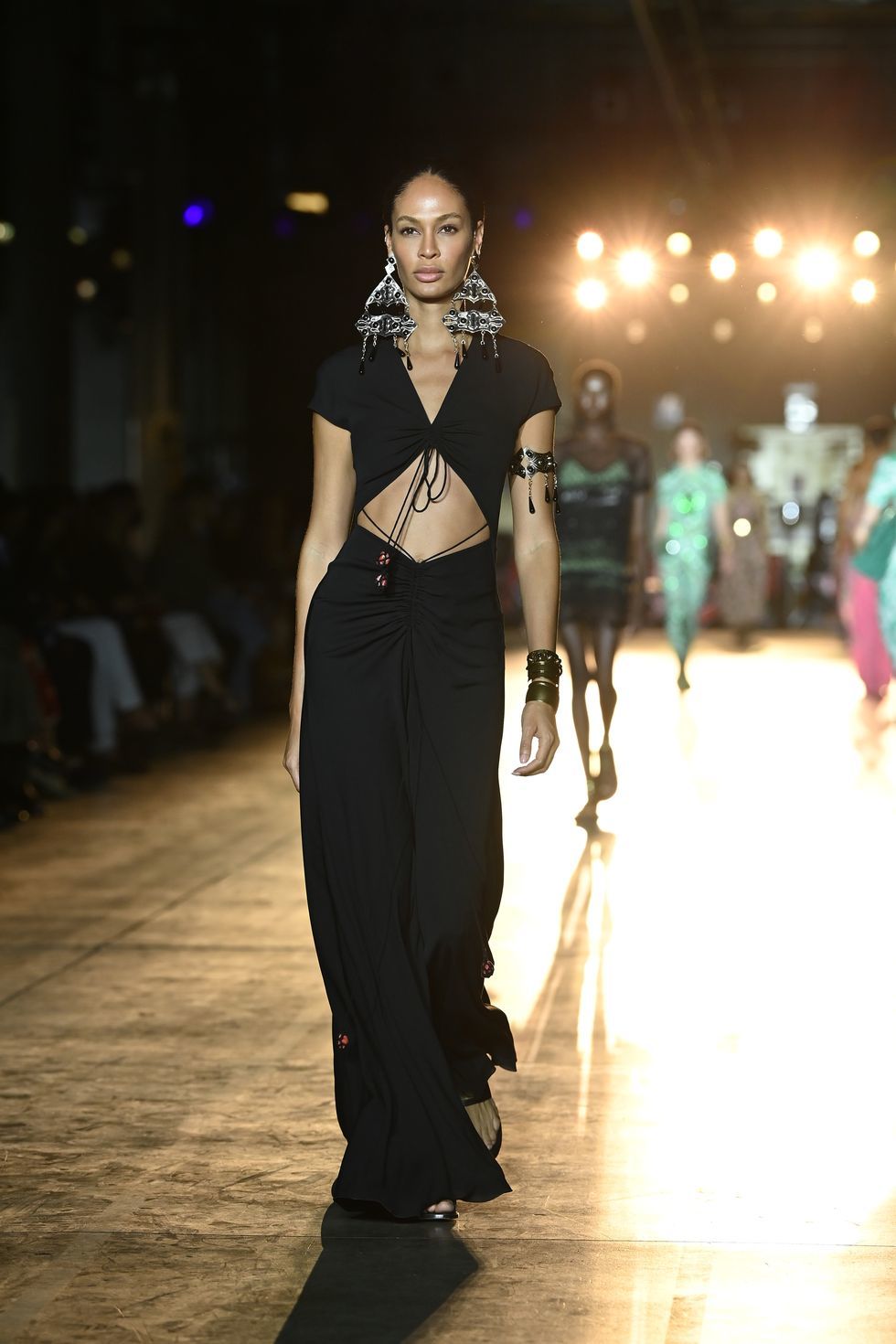 Etro
Etro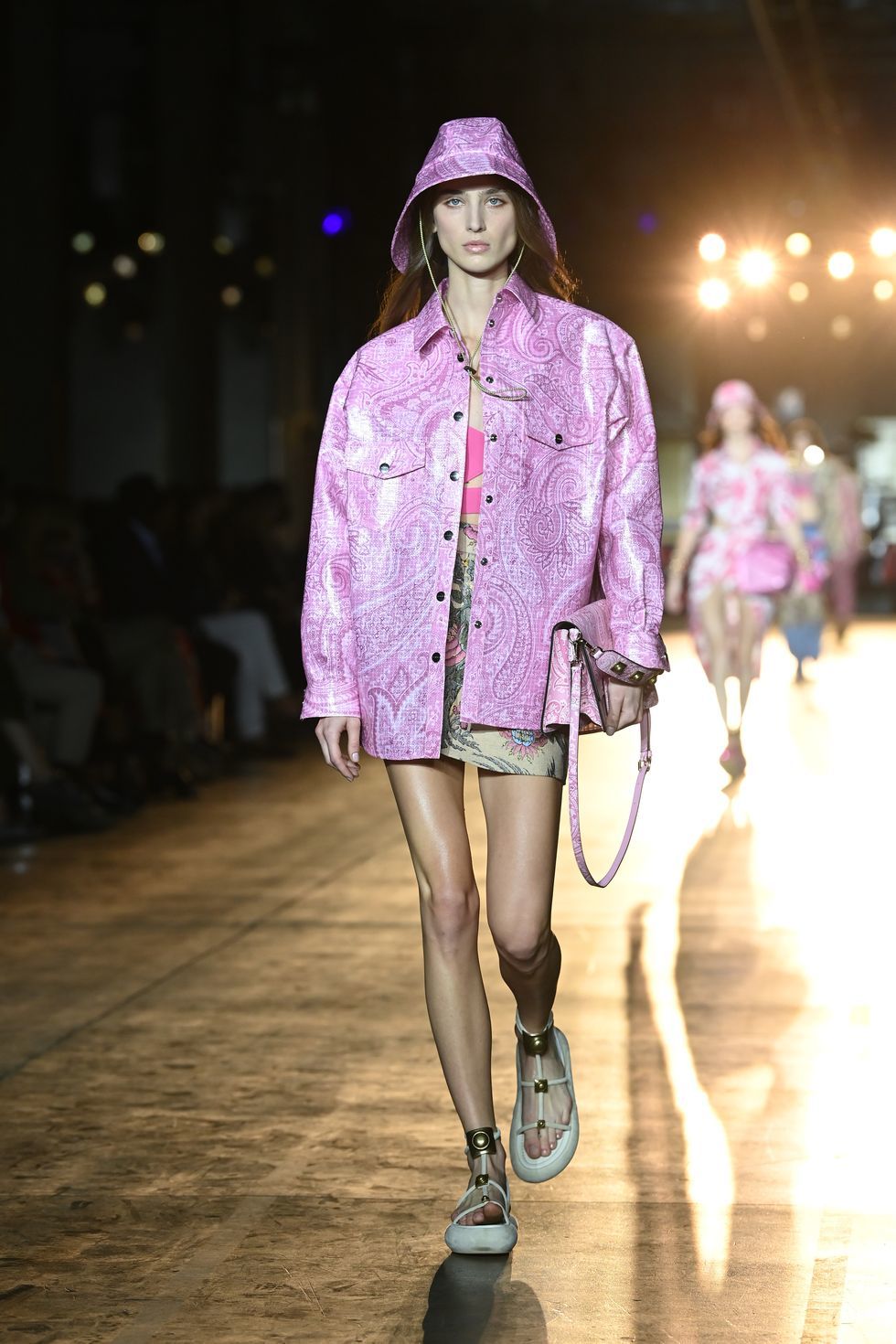 Etro
Etro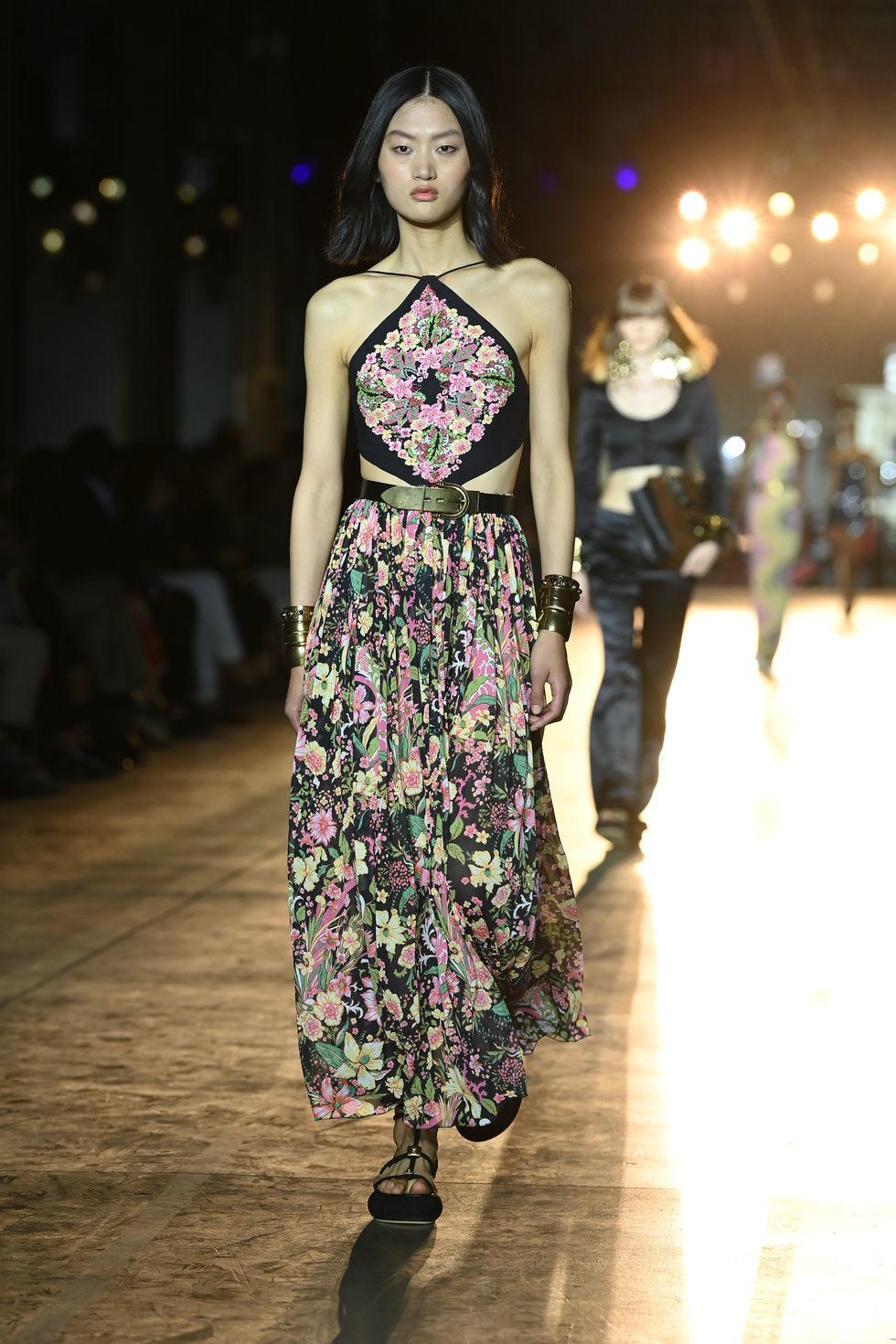 Etro
Etro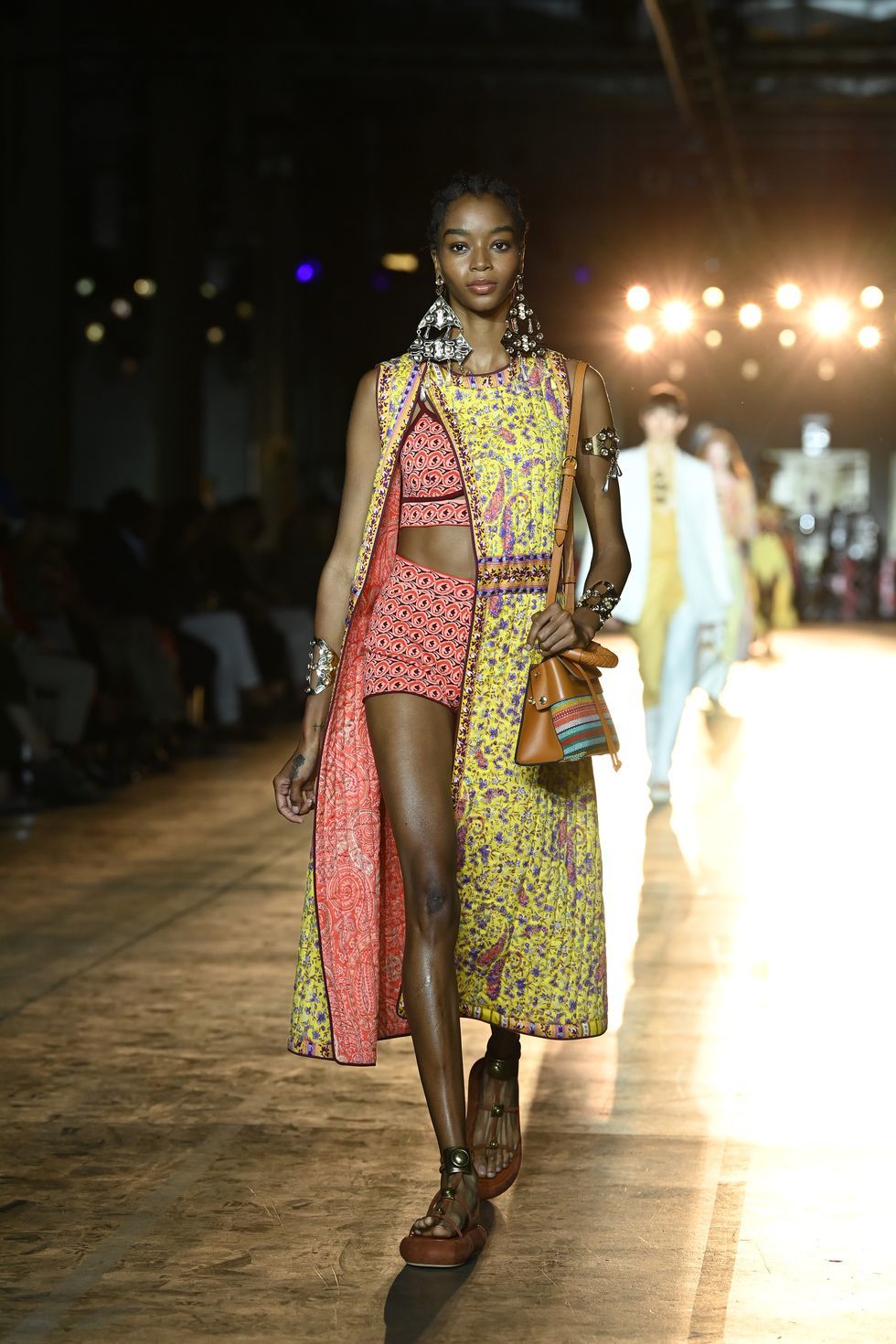 Etro
EtroJil Sander
 Jil Sander
Jil Sander
Lucie and Luke Meier are designing clothing that women want to wear—intellectual women, chic women, choose your elevated adjective. The palette for spring 2022 was soft, as if filtered: pale greens, peach, buttercup yellow, ivory. There were strong jackets layered over trousers or jeans, oversized pieces, nipped and tailored pieces, a perfect sweetheart-neckline white dress, knitted separates, and a crochet series.
Blouses were wrapped and textural—nothing was as expected. To wit, there was even a zebra print and some sequins. In accessories, the brand’s new Cannolo bag was cylindrical, mirroring jewelry that leveraged circles in gold and geometric patterns. Mule boots will be a winner this season; they look cool and are easy to wear. The message was this: What appears simple probably isn't. Still waters run deep, as they say.
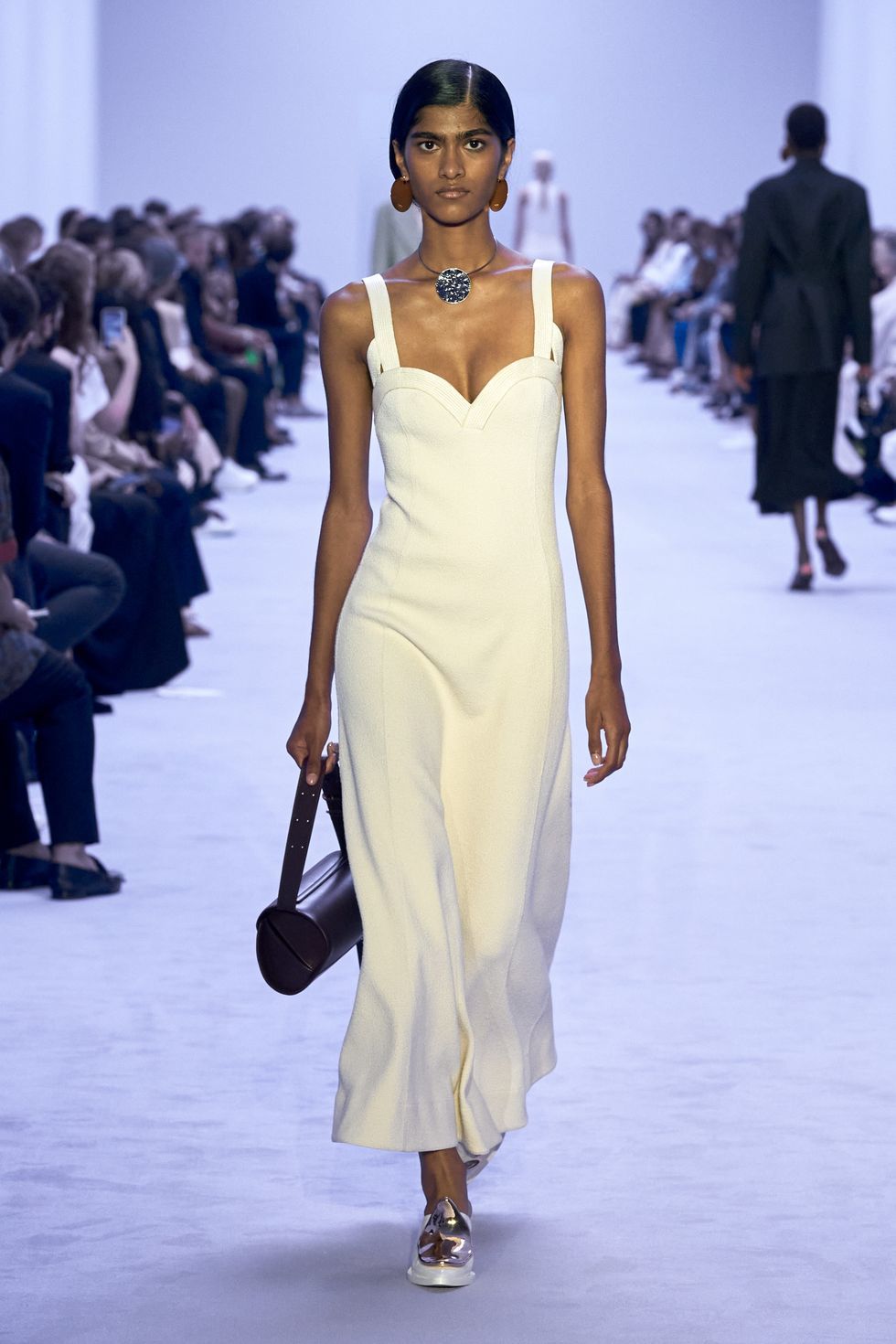 Jil Sander
Jil Sander 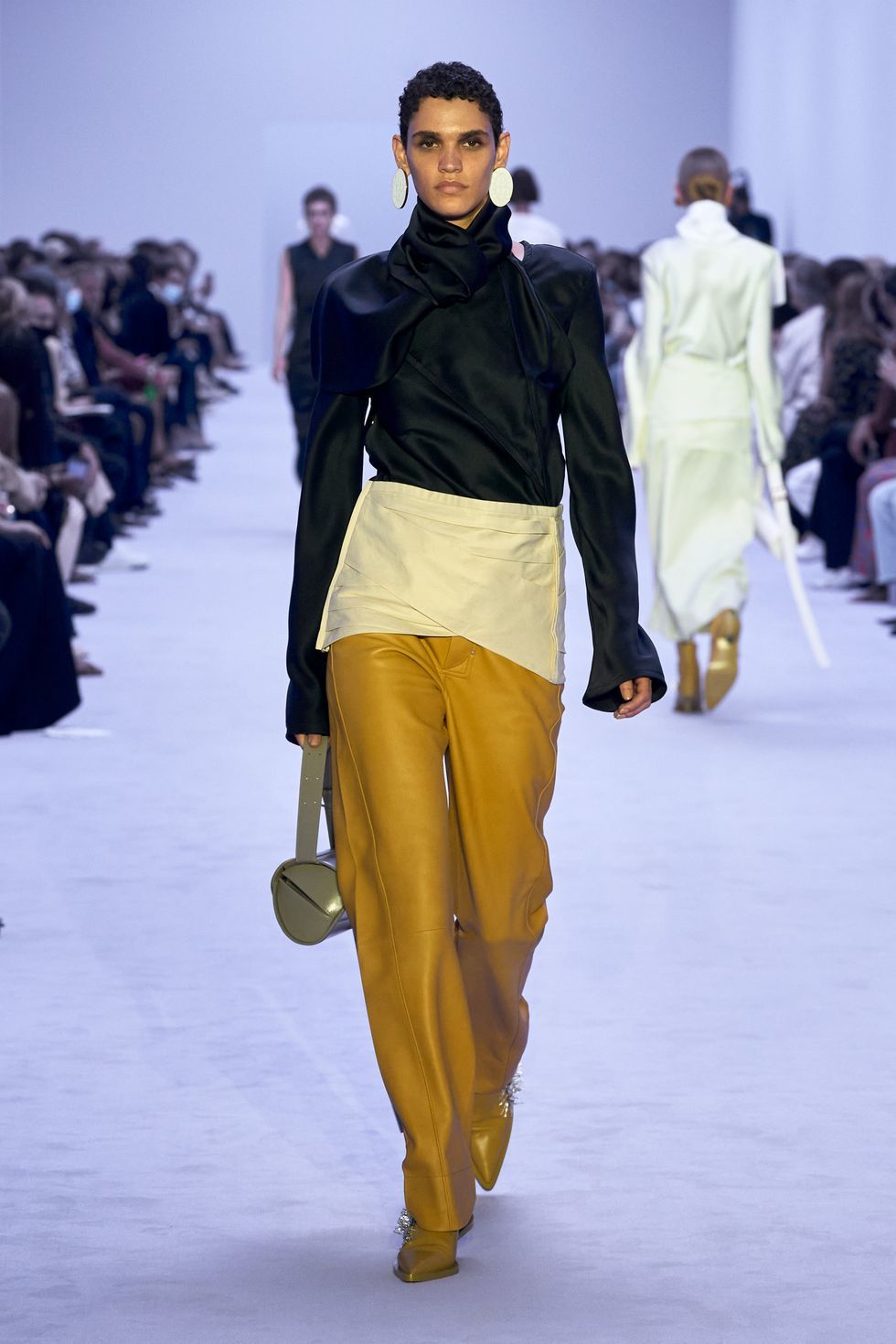 Jil Sander
Jil Sander  Jil Sander
Jil Sander 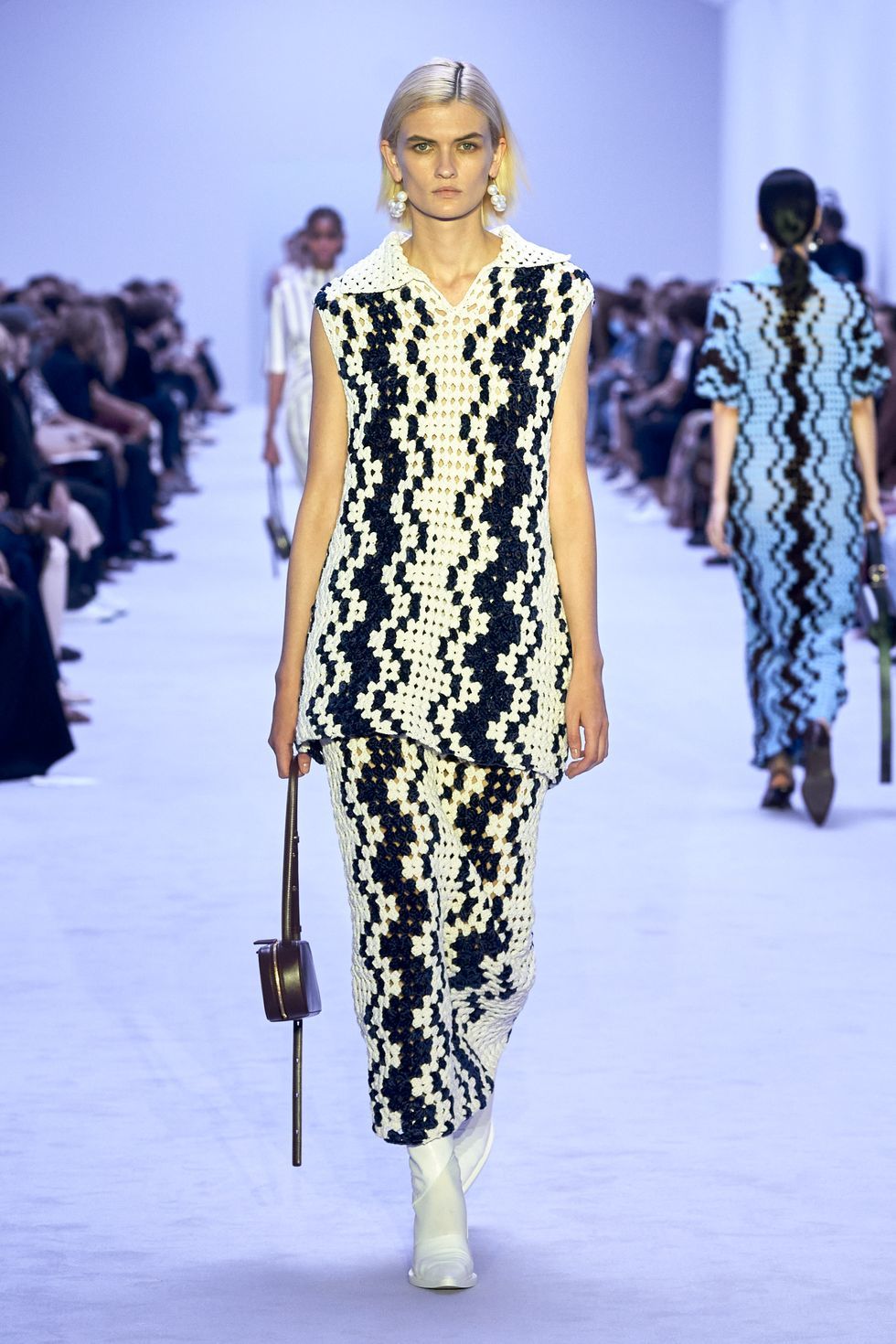 Jil Sander
Jil Sander Roberto Cavalli
 Roberto Cavalli
Roberto Cavalli
Today was a big one for the Roberto Cavalli label—it marked the first runway collection under the creative direction of Fausto Puglisi. Puglisi is a dream fit for the brand—an Italian designer who embraces sensuality in clothing and clearly appreciates an animal print.
He dug into the extensive Cavalli archives and came up with many references to the ’70s—dresses were slim and cut on the bias, with cutouts and single shoulders. All ripe for after dark. If the Cavalli girl needs a break from the dance floor, boxy suits looked just as cool. As the show notes said, the collection, “shouts ‘I’m the party.’” There's never been a better time to bring back some fun and remember you had it in you all the time.
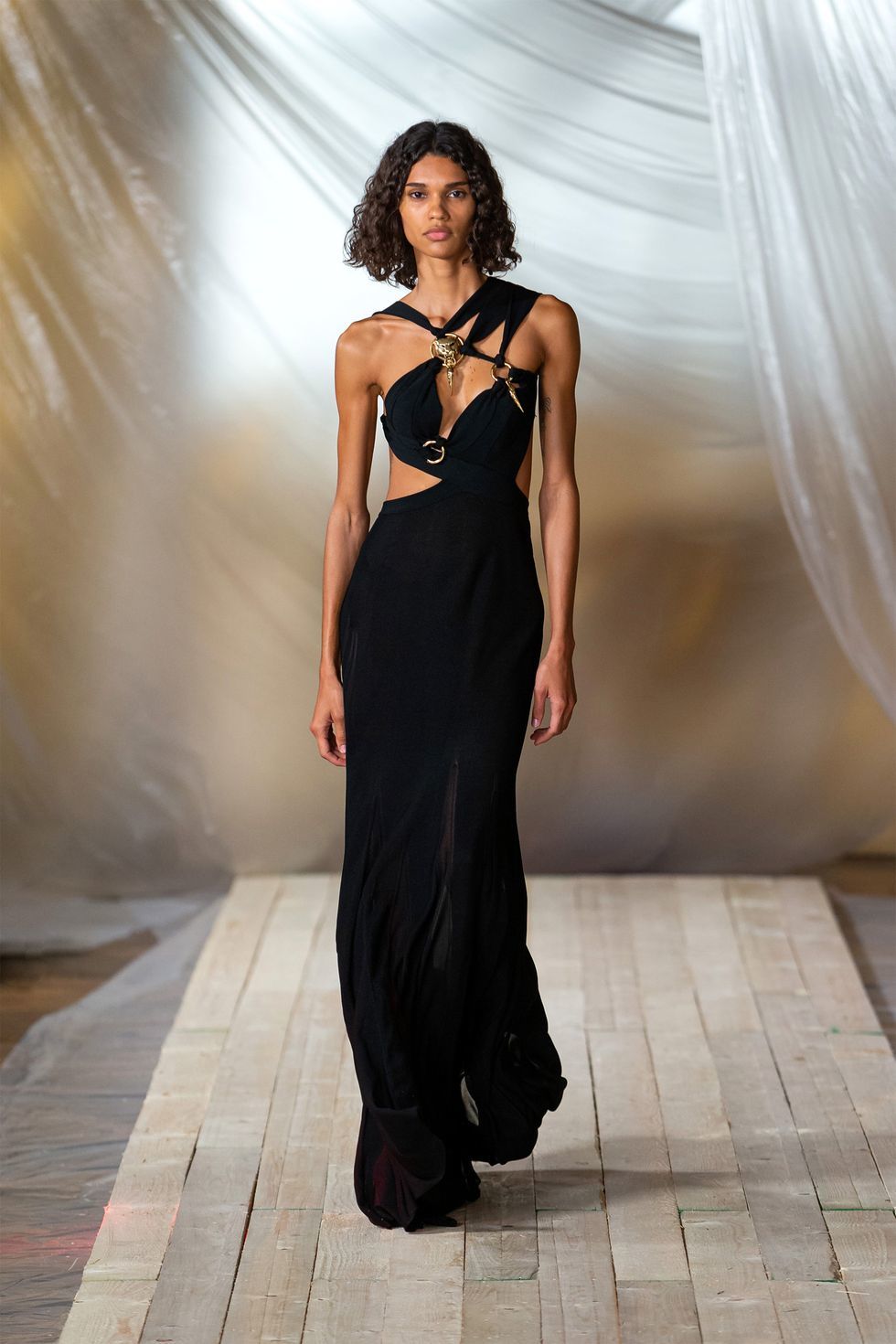 Roberto Cavalli
Roberto Cavalli 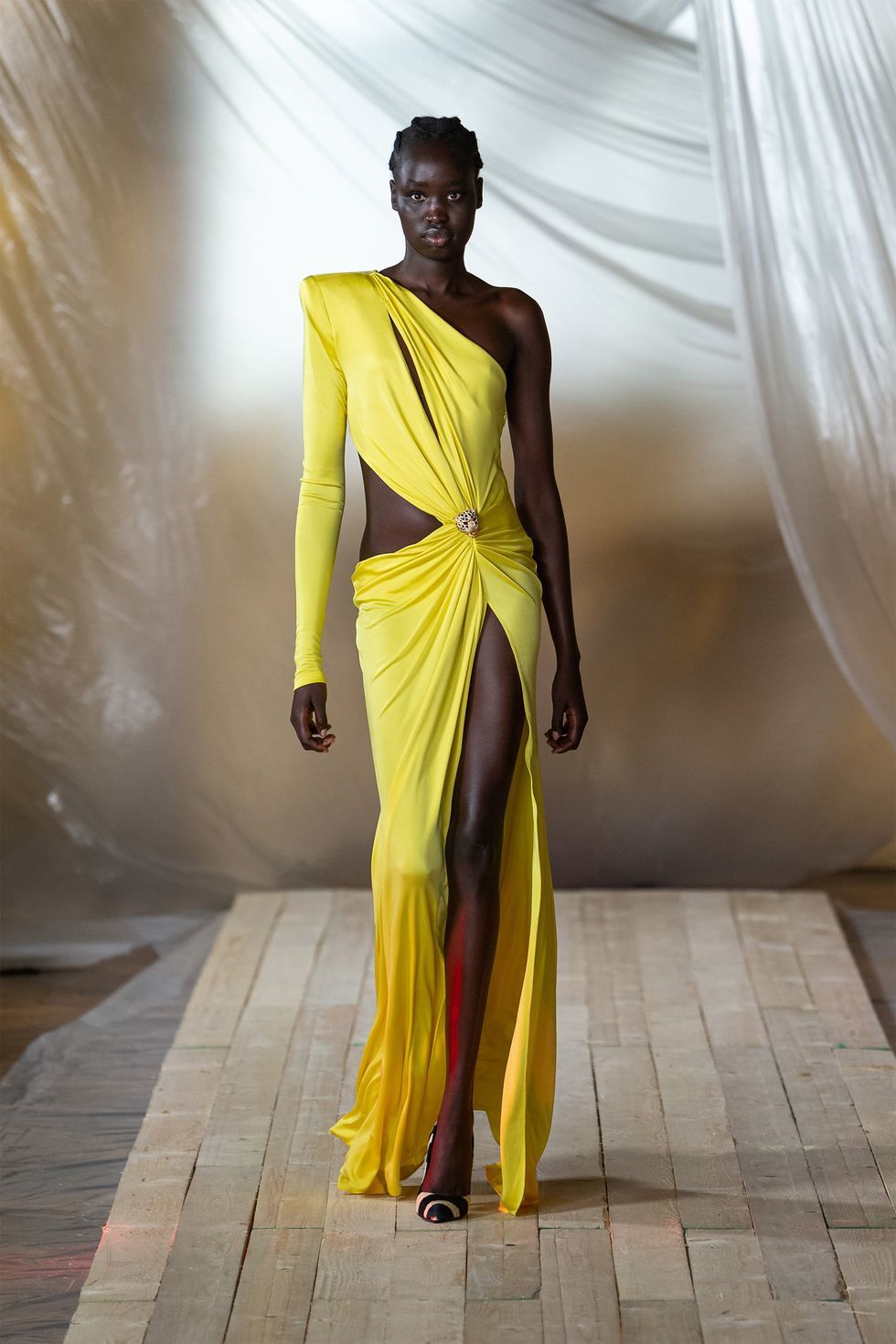 Roberto Cavalli
Roberto Cavalli 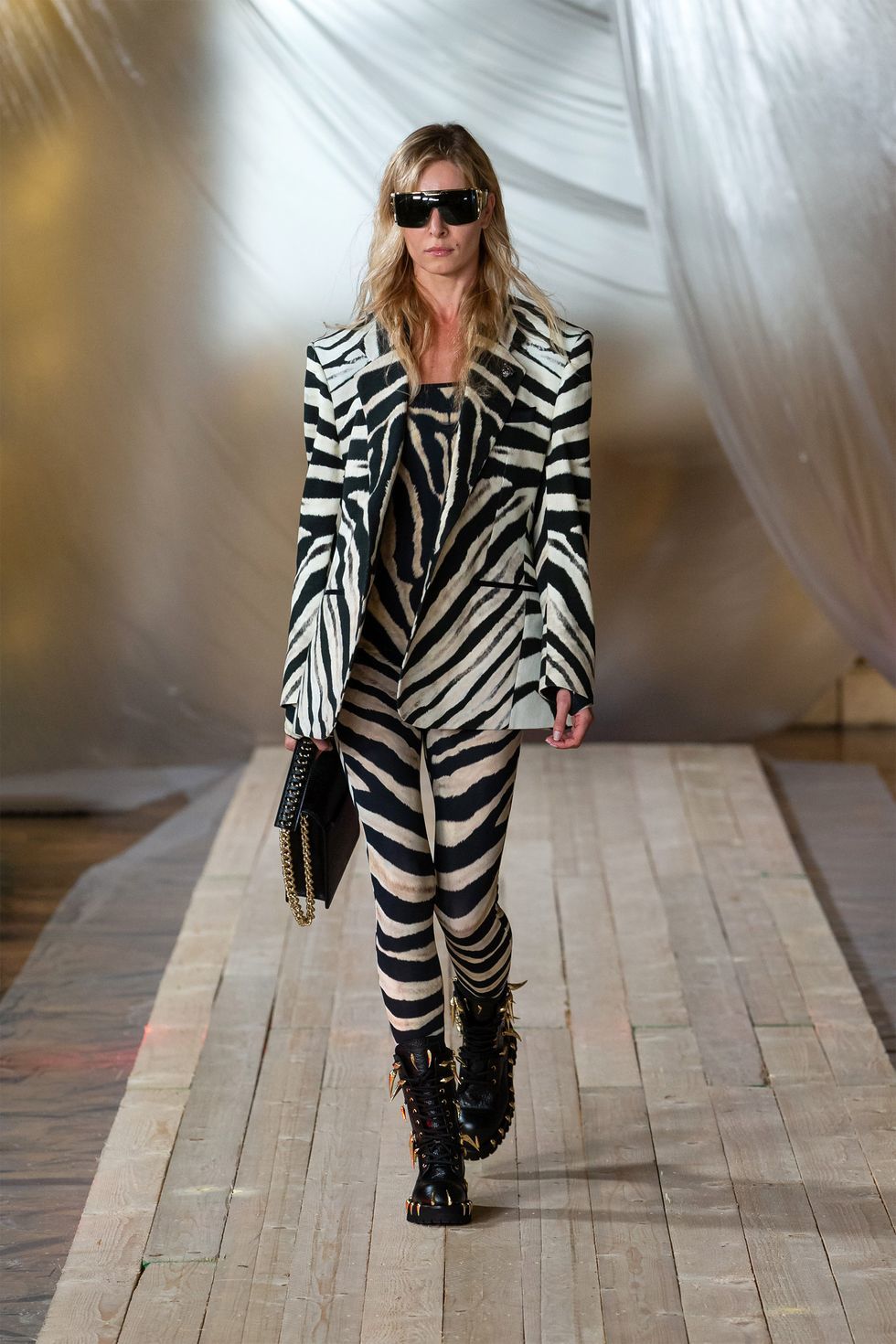 Roberto Cavalli
Roberto Cavalli 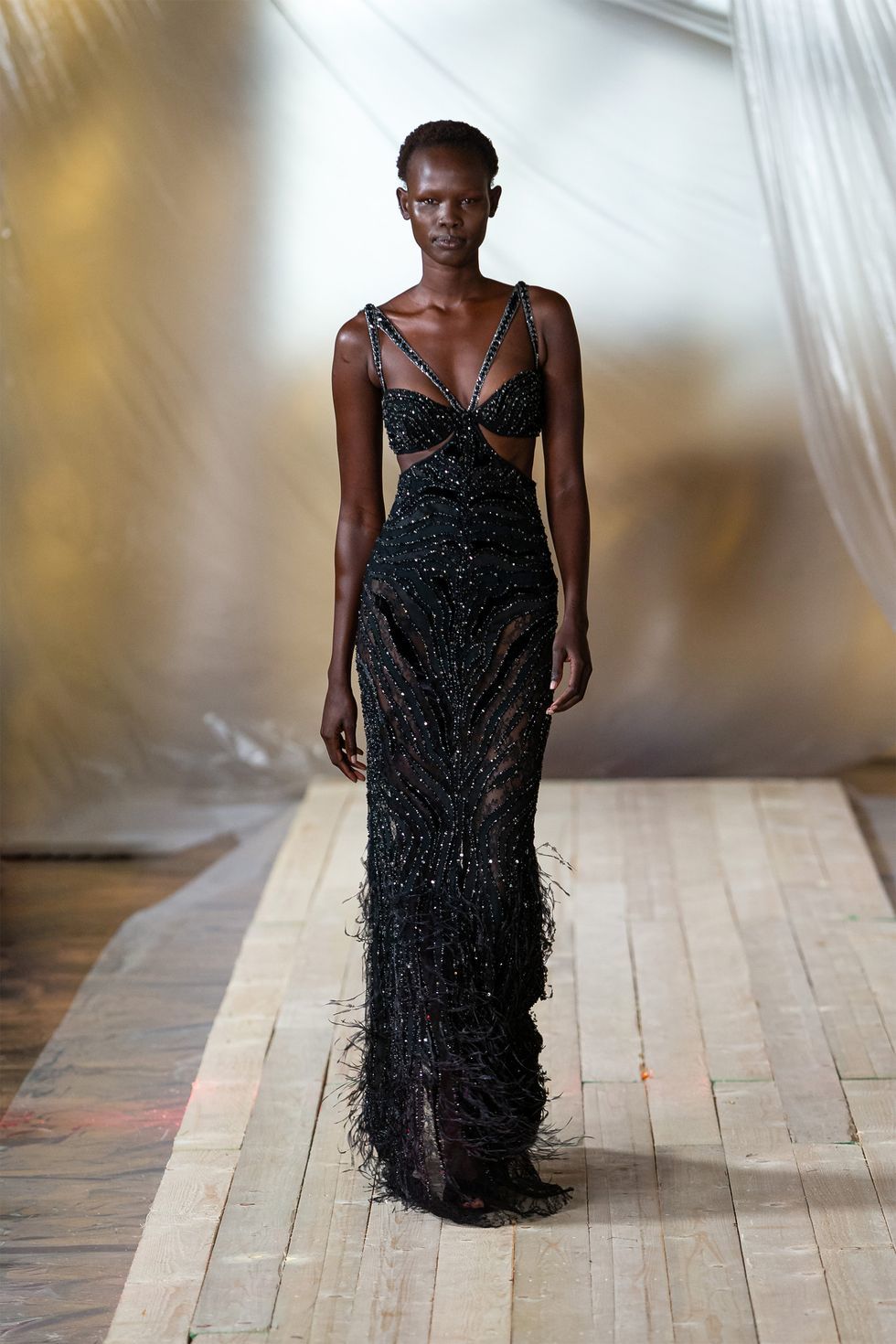 Roberto Cavalli
Roberto Cavalli Brunello Cucinelli
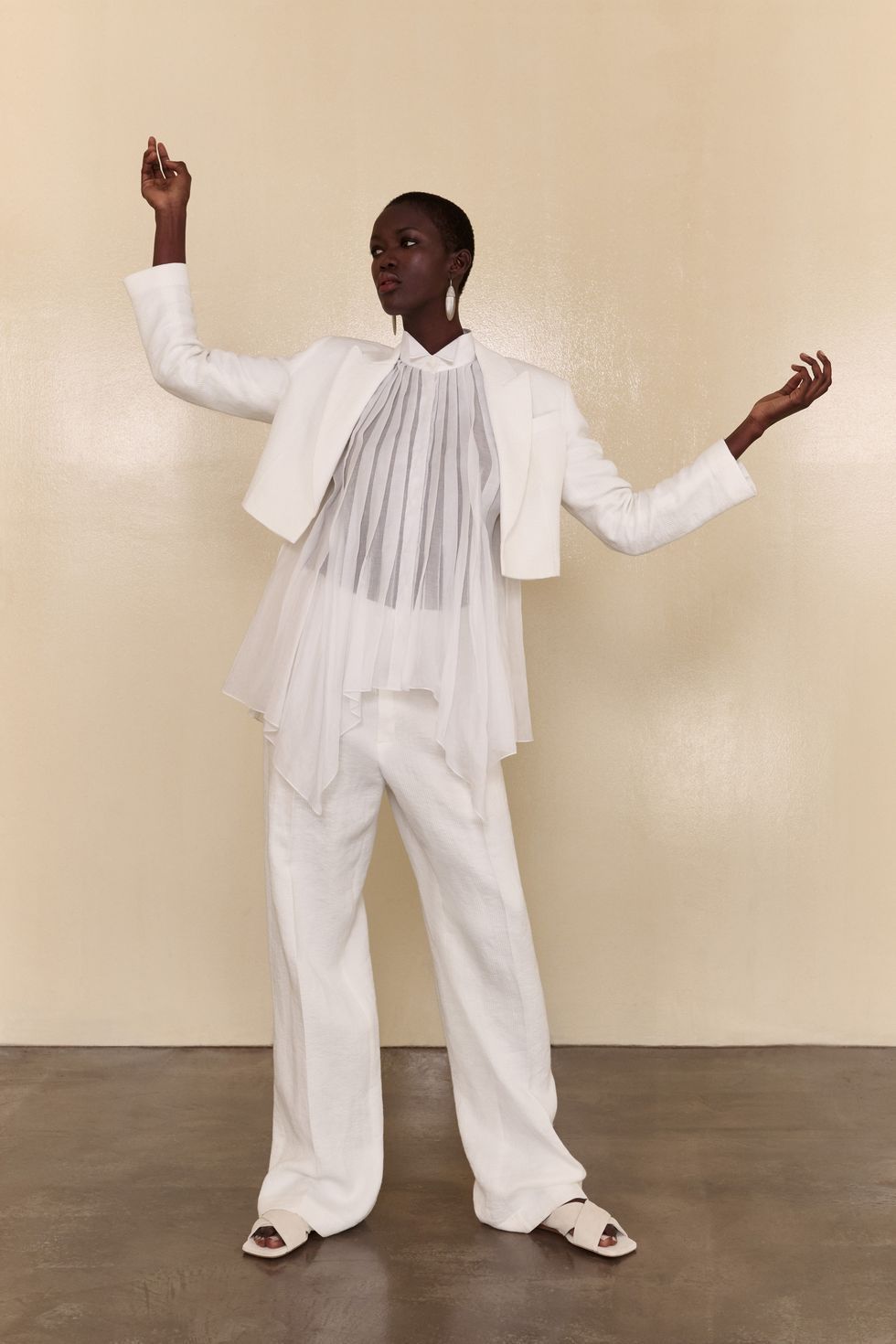 Brunello Cucinelli
Brunello Cucinelli
For many women, the current vibe is “love thy loungewear as thyself.” Brunello Cucinelli is cool with that—but he’s going to give you a major upgrade. The Italian label went into full slouch mode with its latest collection, which mixes slinky metallic knitwear and silky pleated separates that feel like pj's, but look like you’ve consulted a famous Italian tailor. (Maybe because one made these clothes ...) And though some models did wear sweatbands and tube socks as part of their looks, these pieces are made to be so easily cool, you can get dressed for work without breaking a sweat. Pay special attention to the suiting and square-toed ballet flats, along with a red embroidered varsity sweater that’s truly game for anything.
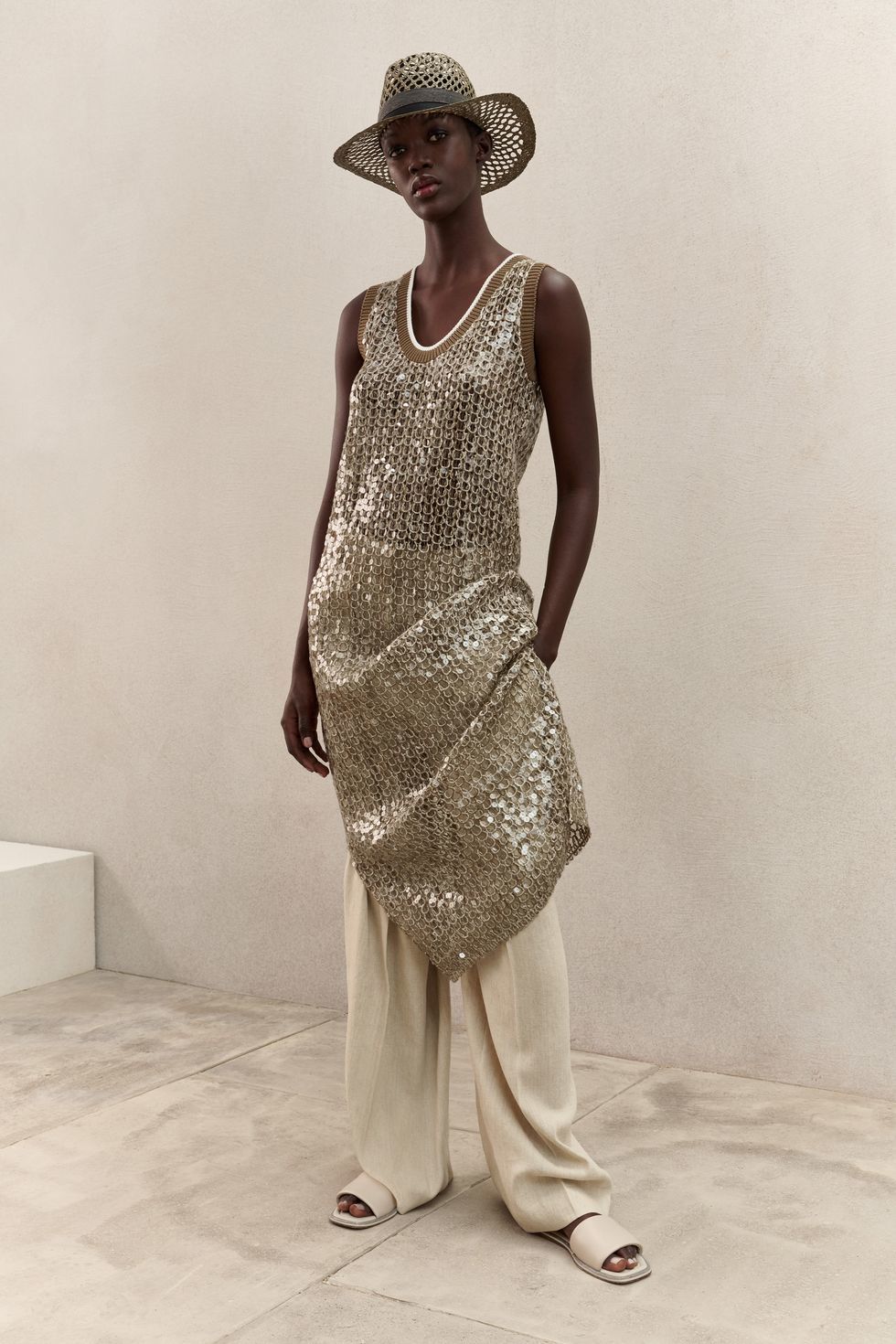 Brunello Cucinelli
Brunello Cucinelli 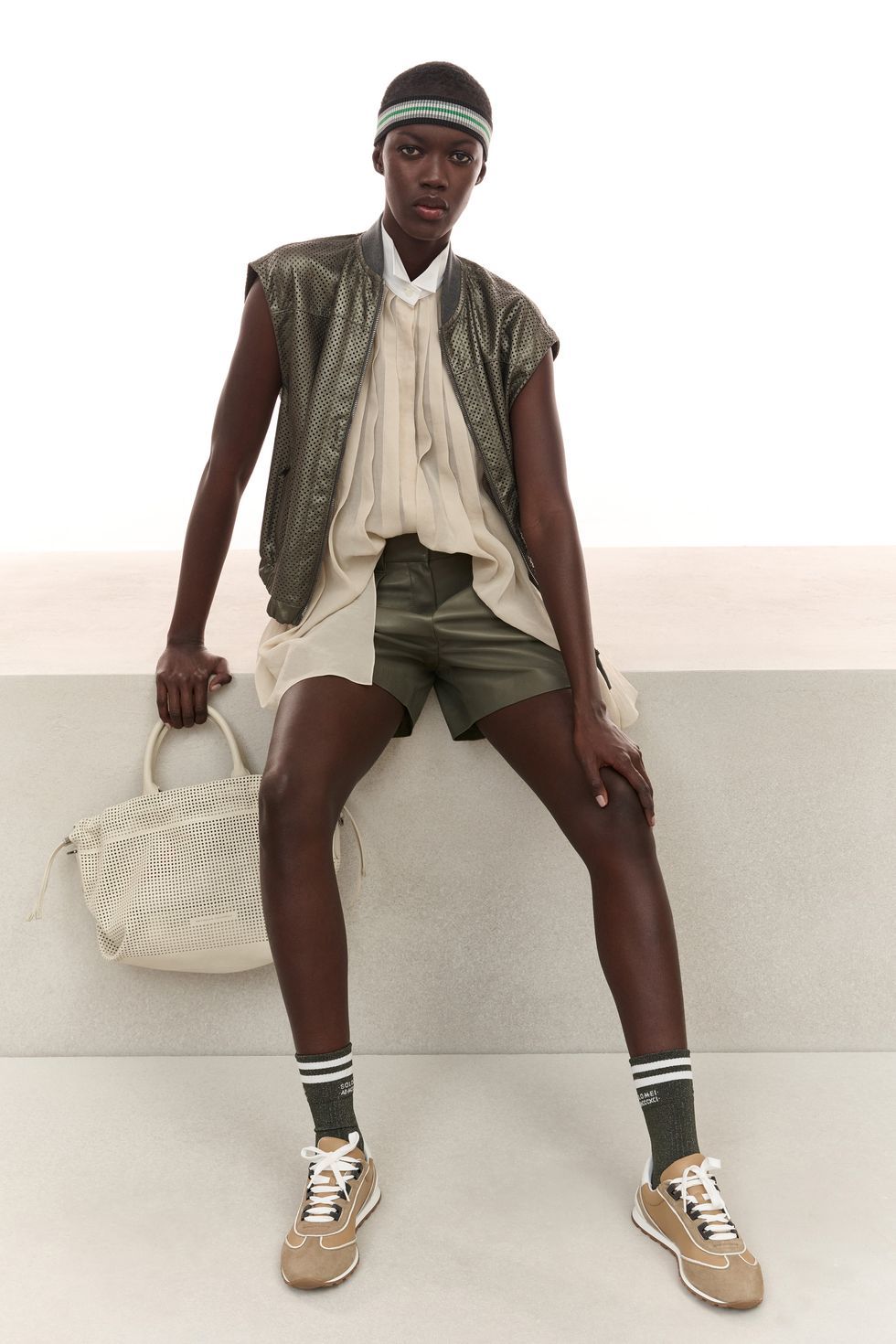 Brunello Cucinelli
Brunello Cucinelli 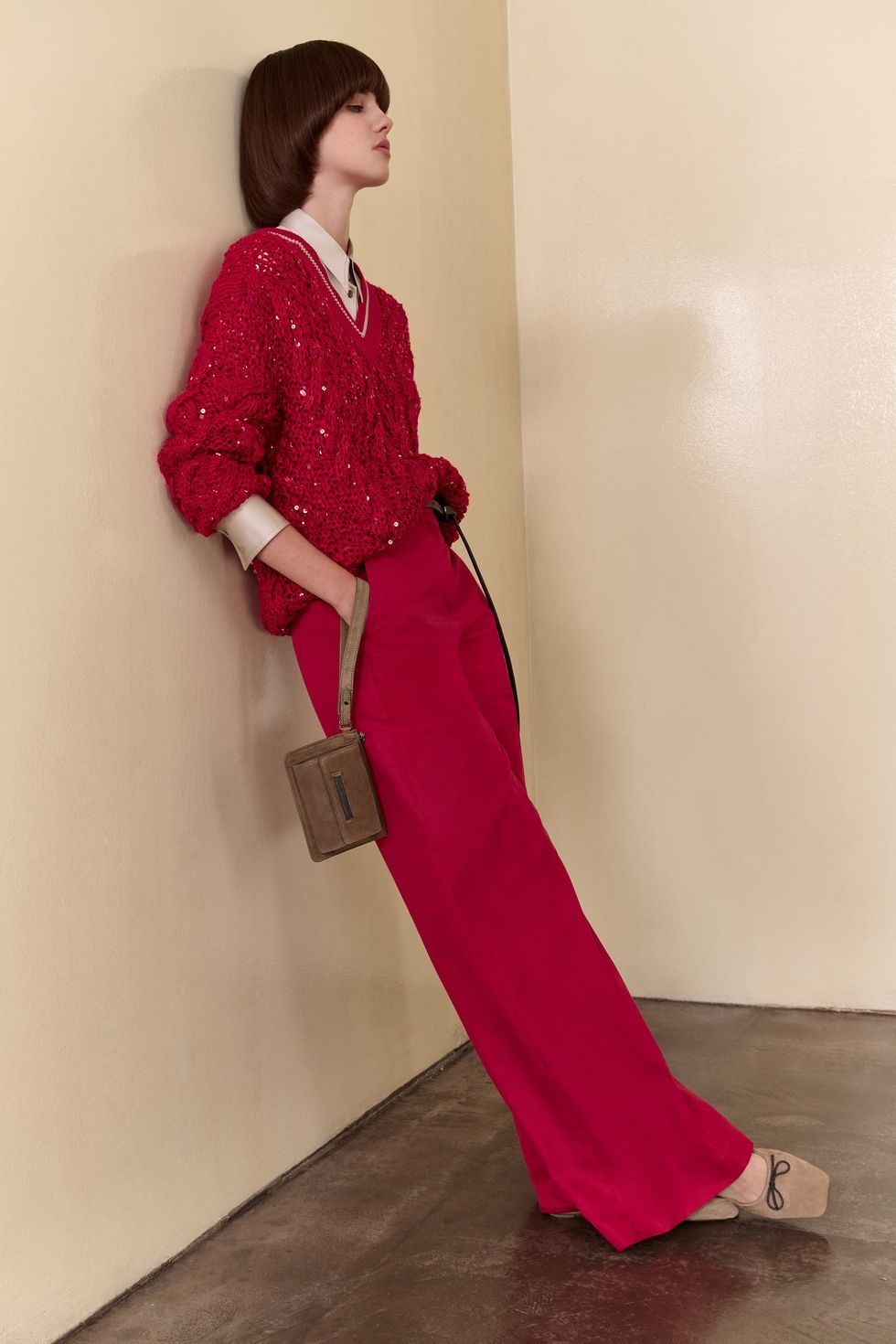 Brunello Cucinelli
Brunello Cucinelli  Brunello Cucinelli
Brunello Cucinelli Fendi
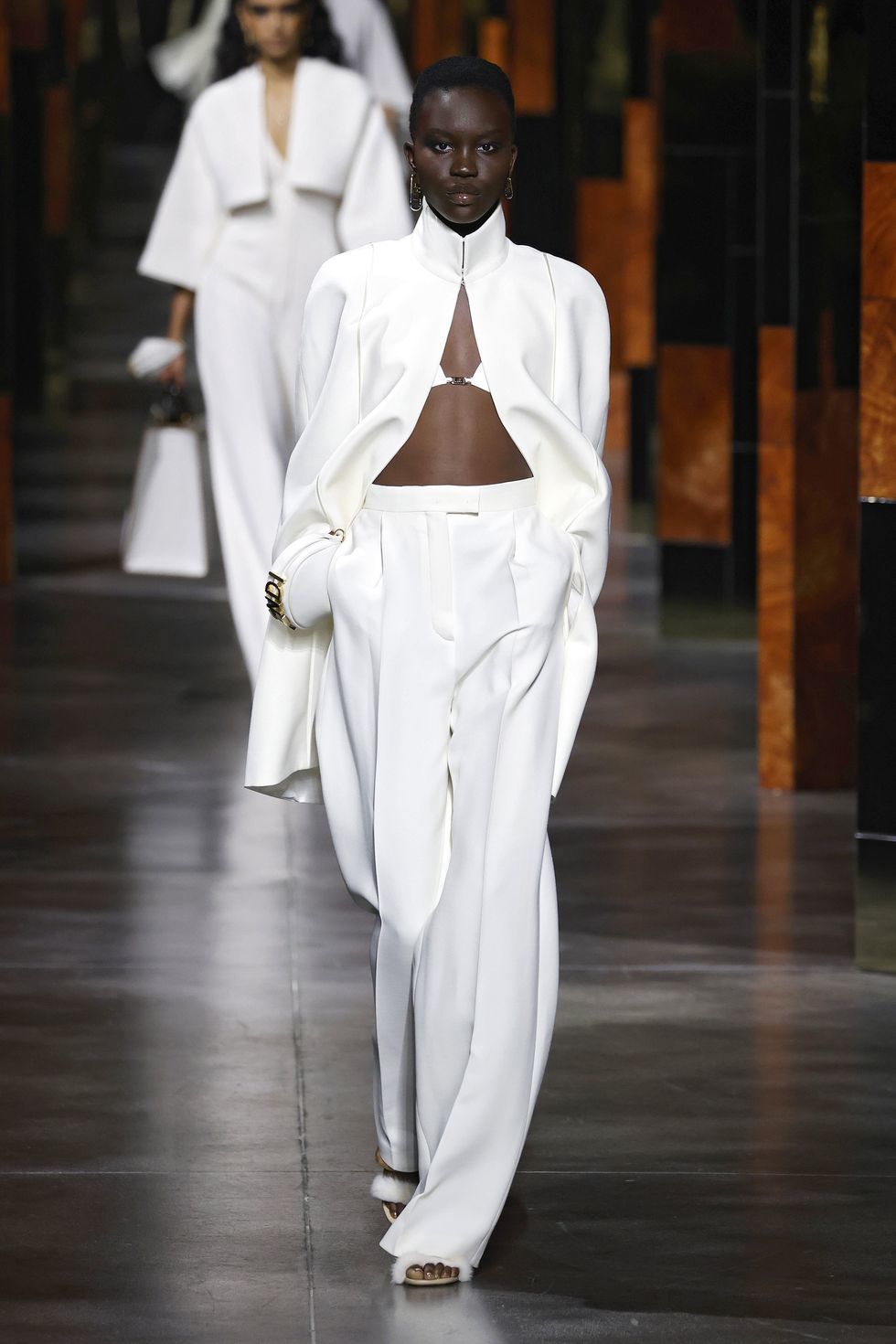 Fendi
Fendi
Kim Jones had nearly zero ramp-up to creating his own Fendi ethos. His Fendi woman has been unabashedly glamorous and achingly cool since he debuted his first collection in the depths of the pandemic. While she has an appreciation for the past, she most certainly doesn’t live there. That throwback mentality showed up for spring 2022 with a collaboration with the estate of illustrators Antonio Lopez and Juan Ramos.
The ’70s have been enjoying a bit of a renaissance, so Studio 54-worthy dresses that leveraged Lopez's iconic drawings felt right on time. “While I’ve been looking at Karl’s legacy at the house, I’ve also been looking around him, at his contemporaries—at who he was interested in,” Jones explained. “Lopez was a friend of Karl’s and has always been someone who inspired me. He was forward thinking, inclusive, looked up to by everyone from Andy Warhol to Steven Meisel and David Hockney.
I wanted to introduce him to a new generation.” In keeping with the era (through a modern lens), there were also fringe dresses, suiting with bikini-inspired tops layered underneath, bold-patterned furs with matching bags, and sheer black lace gowns. It was smart dressing that made a statement—and it was the perfect start to a week in Milano.
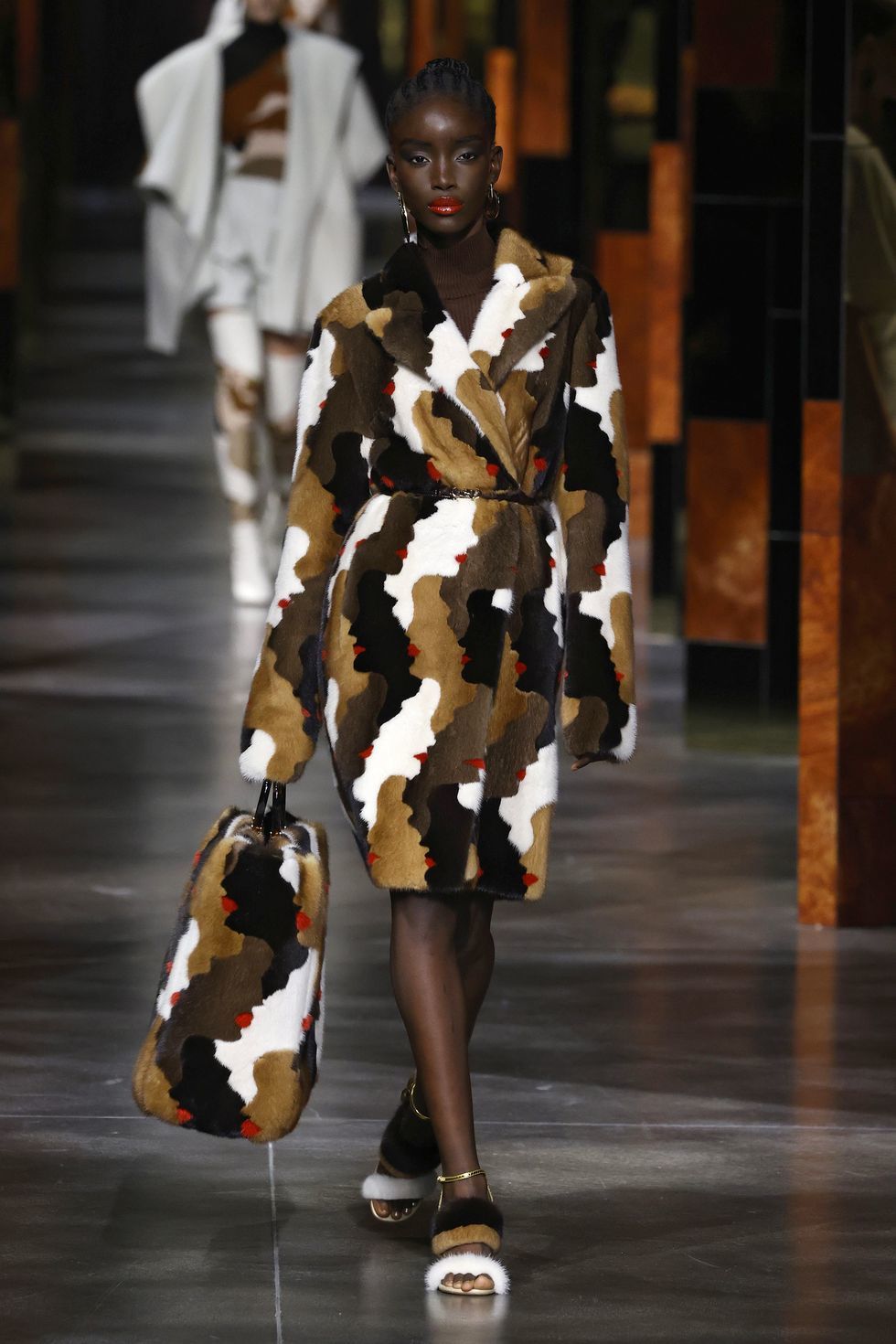 Fendi
Fendi
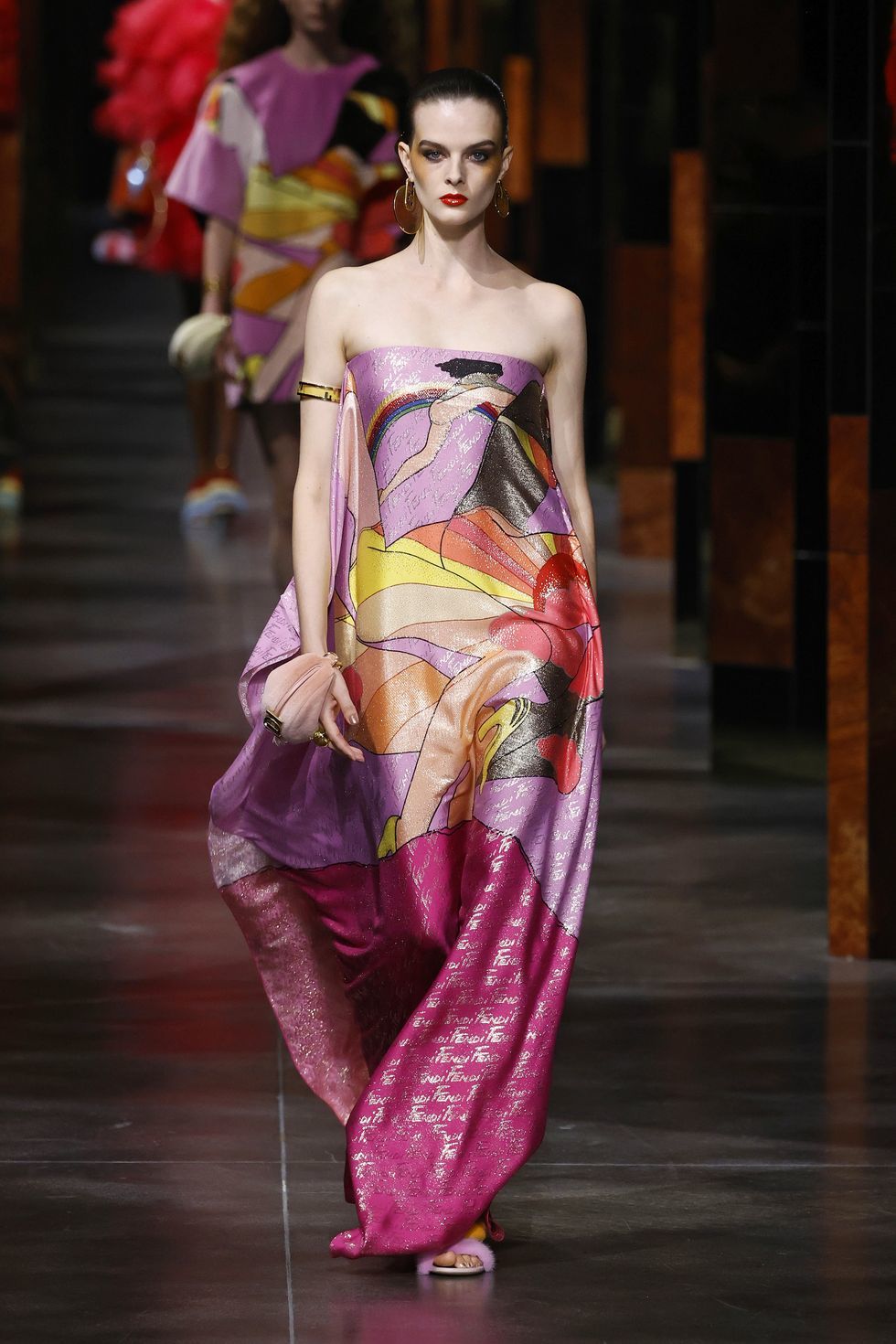 Fendi
Fendi
 Fendi
Fendi
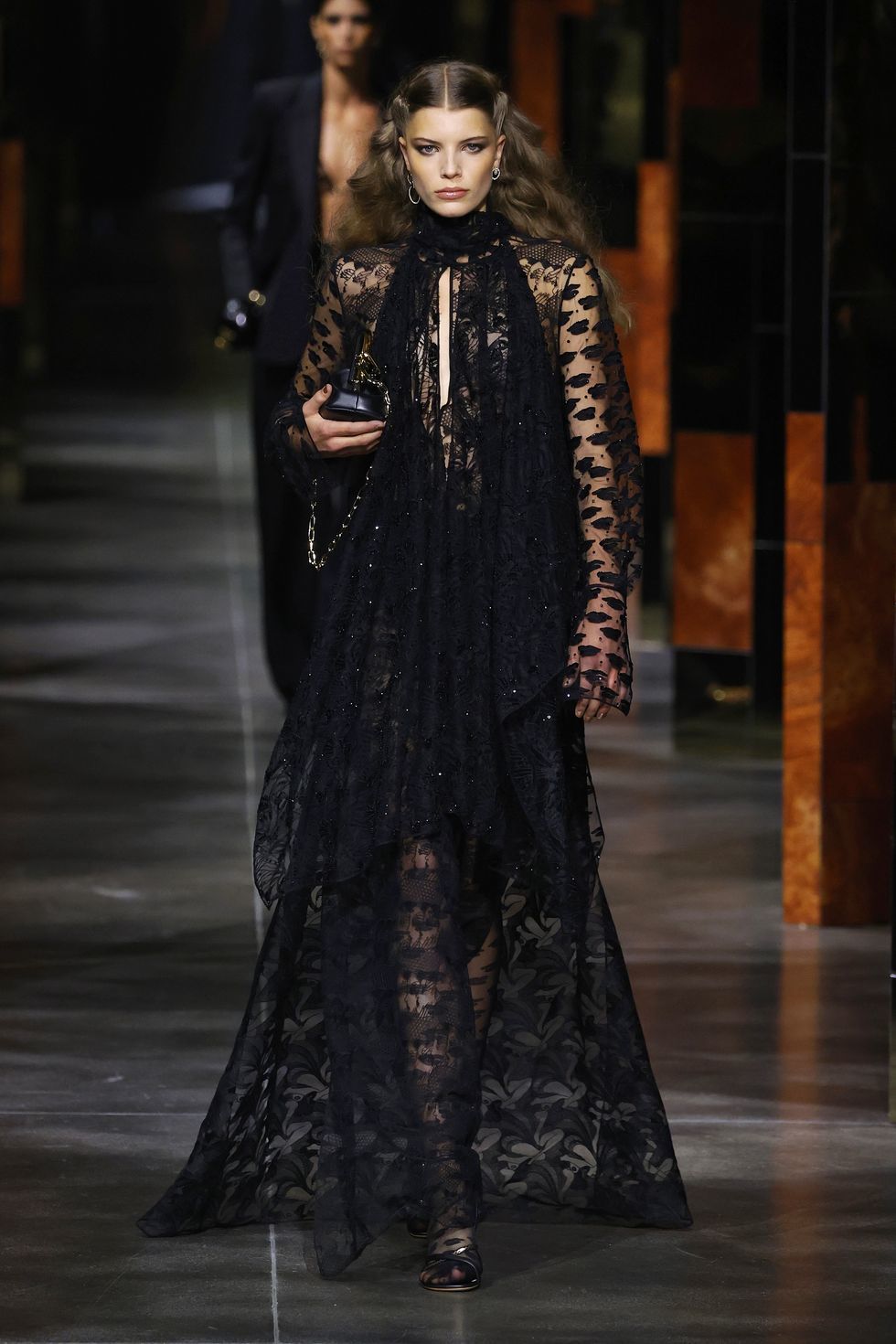 Fendi
Fendi

